- Port Overview
- Transportation to the Port
- Uber & Lyft to the Port
- Dropping Off at the Port
- Cruise Parking
- Cruise Hotels
- Hotels with Parking Deals
- Uber & Lyft to the Ports
- Things to Do
- Cozumel Taxi Rates
- Free Things to Do
- Restaurants Near the Cruise Port
- Hotels & Resorts With Day Passes
- Closest Beaches to the Cruise Port
- Tips For Visiting
- Shore Excursions
- Cruise Parking Discounts
- Hotels with Shuttles
- Which Airport Should I Use?
- Transportation to the Ports
- Dropping Off at the Ports
- Fort Lauderdale Airport to Miami
- Inexpensive Hotels
- Hotels near the Port
- Hotels With Shuttles
- Budget Hotels
- Carnival Tips
- Drink Packages
- Specialty Restaurants
- Faster to the Fun
- More Articles
- CocoCay Tips
- Norwegian Tips
- Great Stirrup Cay
- Harvest Caye
- How to Get the Best Cruise Deal
- Best Time to Book a Cruise
- Best Websites to Book a Cruise
- Cruises Under $300
- Cruises Under $500
- Spring Break Cruise Deals
- Summer Cruise Deals
- Alaskan Cruise Deals
- 107 Cruise Secrets & Tips
- Tips for First-Time Cruisers
- What to Pack for a Cruise
- What to Pack (Alaska)
- Packing Checklist
- Cruising with Kids
- Passports & Birth Certificates
- Bringing Alcohol
- Cruising with a Disability
- Duty-Free Shopping
- Cruise Travel Insurance
- Things to Do on a Cruise Ship
- What Not to Do on a Ship
- News & Articles


Here’s How Far a Cruise Ship Goes on One Gallon of Fuel
There’s no other way to put it. Cruise ships are big. If you’ve never seen one in port, be prepared to be taken back by the sheer size.
It’s amazing that they can float at all — much less move. Surprisingly, cruise ships can move quickly. In fact, they likely can sail much faster than you realize.
The top speed for a ship will vary depending on the ship itself, but many can reach 25 knots per hour, or nearly 30 miles per hour. Sure, that’s a lot slower than a car. However, considering that ships can weigh more than 140,000 tons, it’s still impressive.
You might think that it takes a lot of fuel to be able to push that much weight nearly 30 miles per hour. According to a fact sheet distributed aboard Royal Caribbean’s Mariner of the Seas — a large ship, but by no means the largest in the cruise line’s fleet –, the ship has a top speed of 27.6 miles per hour (24 knots).
At that speed, the ship burns 2,871 gallons of fuel per hour. For comparison, a 20 gallon gas tank found in most passenger vehicles would be only enough to power the ship for just 25 seconds.
Consuming that much fuel at top speed, Mariner of the Seas burns a staggering 104 gallons just to go one mile.
Put another way, on just one gallon of fuel the ship travels 0.0096 miles. That comes out to about 51 feet on a single gallon . That’s about halfway between first and second base on a baseball field.
Now before you get too worried about the poor fuel mileage, keep in mind that more than 5,000 people are moving that distance between passengers and crew. When you think of moving each of those people 51 feet on a single gallon, it’s actually quite impressive.
Popular: 39 Useful Things to Pack (17 You Wouldn't Think Of)
Read next: park & cruise hotels for every port in america, popular: 107 best cruise tips, secrets, tricks, and freebies.
Are there any Pacific cruises to Bora Bora or the Philippines?
LOL as if that’s the most effective way to cause damage with a tiny amount of fissile material. With SMR’s marine nuclear is developing rapidly.
They should make Cruise Ships run on Nuclear Power instead of Fossil Fuels, much like Aircraft Carriers and other Military Ships do…..
And then what will happen when one gets hijacked by terrorists, who decide to ram a major seaport with it and spread radioactive material around a large area?
We’d find that highly unlikely. It would also be the slowest hijacking ever.
LEAVE A REPLY Cancel reply
Save my name, email, and website in this browser for the next time I comment.
Here’s When New Cruise Ships Are Worth the Higher Fares
8 things definitely worth it on a cruise…and 3 places to save your money, port of miami cruise parking (where to park): prices, profiles, & map, hotels with cruise shuttles for every major port in america, 107 best cruise tips, tricks, secrets, and freebies, 39 useful things to pack for your cruise (including 17 you’d never think of).
- Privacy Policy
- Terms & Conditions
Winter is here! Check out the winter wonderlands at these 5 amazing winter destinations in Montana
- Plan Your Trip
How Much Fuel Does A Cruise Ship Use
Published: December 22, 2023
Modified: December 28, 2023
by Katleen Das
- Hotel Reviews
- Sustainability
Introduction
Cruise ships are popular vacation options for travelers looking to explore different destinations while enjoying luxurious accommodations and a wide range of onboard amenities. These massive floating resorts offer a unique experience, combining the excitement of travel with the comforts of a hotel. However, it’s important to understand that these enormous vessels require large amounts of fuel to power their engines and keep everything running smoothly.
In recent years, there has been growing concern about the environmental impact of cruise ships and their fuel consumption. With the increasing global awareness of climate change and the need to reduce carbon emissions, it has become crucial to examine the fuel efficiency of these massive ships and explore ways to minimize their environmental impact.
Understanding the fuel consumption of cruise ships is essential not only for environmental reasons but also for practical considerations such as cost management. Fuel is one of the most significant expenses for cruise lines, and optimizing fuel consumption can help reduce operational costs and make cruising more affordable for passengers.
In this article, we will delve into the topic of fuel consumption in cruise ships, exploring the factors that affect it, the technologies used to improve fuel efficiency, and the environmental impact of these floating giants. We will also look into the future trends in fuel consumption and explore how the industry is working towards reducing its carbon footprint.
Join us as we navigate through the fascinating world of cruise ship fuel consumption and explore the various aspects that make these vessels both engineering marvels and environmental challenges.
Fuel Consumption of Cruise Ships
Given their enormous size and the need to power multiple systems and amenities, cruise ships have a significant appetite for fuel. The amount of fuel consumed by a cruise ship can vary greatly depending on several factors, including the ship’s size, speed, itinerary, and the technology implemented to improve fuel efficiency.
On average, a mid-sized cruise ship can consume anywhere from 100 to 300 metric tons of fuel per day. Larger cruise ships, such as the Oasis-class vessels, can consume up to 250 metric tons of fuel per day or even more. These numbers may seem staggering, but they are necessary to propel these massive vessels through the water and generate electricity to accommodate thousands of passengers and crew members.
It’s worth noting that fuel consumption is not solely determined by the distance traveled. Cruise ships often spend a significant amount of time docked at port, where they can connect to a shore power supply and reduce their dependence on onboard generators. However, when at sea, they rely heavily on their engines to maintain a steady speed and power the ship’s systems.
The fuel consumption of a cruise ship is measured in terms of “gallons per nautical mile” (g/nm). This metric provides an indication of the ship’s fuel efficiency and can vary depending on the ship’s design, technology, and operational factors. Some modern cruise ships can achieve fuel efficiencies of around 30 g/nm or less, meaning they require 30 gallons of fuel to travel one nautical mile.
While these fuel consumption figures may seem high, it’s important to consider the massive scale of these vessels and the services they provide. Cruise ships are essentially self-sustaining cities, with onboard restaurants, swimming pools, theaters, shopping areas, and more. All of these amenities require energy, which is supplied by the ship’s engines running on fuel.
As the cruise industry continues to grow and ships become even larger and more luxurious, there is a greater emphasis on finding innovative ways to improve fuel efficiency and reduce environmental impact. Cruise lines are investing in new technologies and alternative fuel sources to achieve these goals, which we will explore further in the following sections.
Factors Affecting Fuel Consumption
Several factors have a significant impact on the fuel consumption of cruise ships. Understanding these factors is crucial for cruise lines to optimize their operations and minimize their environmental footprint. Here are some of the key factors influencing fuel consumption:
- Ship Size and Capacity: The size of a cruise ship plays a vital role in determining its fuel consumption. Larger ships have more space to accommodate amenities and passengers, which translates to increased energy requirements. Generally, larger ships consume more fuel compared to smaller ones.
- Speed and Itinerary: The speed at which a cruise ship travels directly affects its fuel consumption. As fuel consumption tends to increase exponentially with speed, ships that operate at higher speeds consume more fuel. Additionally, the ship’s itinerary plays a role, as routes with more distance to cover or rougher sea conditions can impact fuel efficiency.
- Technological Innovations: Fuel efficiency technologies have evolved significantly in recent years. Cruise ships are increasingly equipped with advanced propulsion systems, such as diesel-electric engines and pod propulsion, which provide better fuel efficiency compared to traditional propulsion systems. Advanced hull designs, with features like bulbous bows and improved hydrodynamics, also contribute to fuel savings.
- Onboard Energy Management: Efficient energy management is crucial in minimizing fuel consumption. Cruise ships use power management systems to optimize electricity generation and distribution onboard. These systems ensure that energy is used only where and when needed, reducing wasted energy and maximizing fuel efficiency.
- Weather and Sea Conditions: Weather and sea conditions can significantly impact fuel consumption. Rough seas and adverse weather conditions may force ships to travel at slower speeds or take longer routes, resulting in increased fuel consumption. Conversely, favorable conditions can contribute to fuel savings.
It’s important to note that while these factors influence fuel consumption, cruise lines are actively exploring ways to mitigate their impact. Environmental regulations and industry initiatives are driving the adoption of cleaner and more sustainable practices, encouraging cruise operators to improve fuel efficiency and reduce carbon emissions.
In the next section, we will explore the technologies employed by the cruise industry to enhance fuel efficiency and minimize its environmental impact.
Size and Capacity of Cruise Ships
The size and capacity of a cruise ship are key factors that directly impact its fuel consumption. Cruise ships come in a wide range of sizes, from small luxury vessels to massive floating resorts that can accommodate thousands of passengers. Let’s take a closer look at how size and capacity affect fuel consumption:
1. Volume and Weight: Larger cruise ships have more space to accommodate amenities such as restaurants, theaters, and shopping areas. This increased volume results in a greater overall weight, which requires more power and fuel to move through the water. Consequently, larger ships tend to have higher fuel consumption compared to smaller ones due to the increased energy requirements.
2. Passenger Capacity: Cruise ships are designed to accommodate a specific number of passengers. Ships with higher passenger capacities have more cabins, dining areas, and recreational spaces, which contribute to increased energy demands. As a result, ships with larger passenger capacities generally consume more fuel to meet these requirements.
3. Facilities and Amenities: Cruise ships offer various amenities to keep passengers entertained and comfortable during their voyages. These include swimming pools, spas, casinos, shopping areas, and multiple dining options. The energy needed to power and maintain these facilities adds to the overall fuel consumption of the ship.
4. Support Spaces: In addition to passenger areas, cruise ships also have support spaces such as crew cabins, storage areas, and workspaces for the staff. These areas require energy for lighting, ventilation, and other operational needs, which contribute to the total fuel consumption of the ship.
5. Efficiency Measures: While larger ships generally consume more fuel, advancements in technology and design have helped improve their overall fuel efficiency. Cruise lines are investing in innovations such as advanced hull designs, propeller optimization, and energy management systems to enhance fuel efficiency, despite the larger size and capacity of their ships.
6. Economy of Scale: One advantage of larger cruise ships is the potential for economies of scale. With more passengers onboard, cruise lines can distribute fixed costs over a larger number of guests, which can help offset the additional fuel consumption to some extent.
Cruise lines continuously strive to find the right balance between ship size, passenger capacity, and fuel efficiency. By investing in technologies and adopting sustainable practices, the industry aims to reduce the environmental impact while still providing unforgettable experiences for passengers.
Speed and Itinerary
The speed at which a cruise ship operates and its chosen itinerary have a significant impact on fuel consumption. Let’s explore how speed and itinerary influence the fuel efficiency of cruise ships:
1. Speed: The speed at which a cruise ship travels directly affects its fuel consumption. As a general rule, higher speeds result in increased fuel consumption. This is primarily due to the resistance and drag that a ship experiences as it moves through the water. The power required to overcome this resistance increases exponentially with speed, resulting in higher fuel usage. Therefore, cruise ships tend to operate at optimal speeds where fuel consumption is minimized without compromising the schedule or passenger experience.
2. Itinerary: The chosen cruise itinerary can also impact fuel consumption. Routes with more distance between ports will require longer traveling times and, subsequently, more fuel. Additionally, itineraries that include rough sea conditions or strong currents may necessitate adjustments in speed or route, which can affect fuel efficiency. Cruise lines carefully plan their itineraries to balance passenger satisfaction with fuel consumption, considering factors such as popular destinations, available docking facilities, and fuel stops/port visits.
3. Slow Steaming: In recent years, the concept of “slow steaming” has gained popularity in the cruise industry. Slow steaming involves reducing the ship’s speed to conserve fuel and improve efficiency. By operating at slightly lower speeds, cruise lines can achieve significant fuel savings while still ensuring timely arrival at each destination. Slow steaming is often employed in less time-sensitive parts of the itinerary, where passengers can enjoy more leisurely sea days.
4. Fuel Optimization Technologies: Cruise lines are increasingly investing in technologies that optimize fuel consumption. Advanced shipboard systems, such as weather routing and voyage planning software, use real-time data on weather conditions, currents, and other factors to help captains and crew make more informed decisions. By selecting the most fuel-efficient routes and adjusting speed accordingly, these technologies can contribute to significant fuel savings.
5. Environmental Considerations: In addition to fuel efficiency, cruise lines are also mindful of environmental impact when determining speed and itinerary. Specifically, reducing speed can have a positive effect on emissions, as slower speeds generally result in lower carbon emissions. This aligns with the industry’s commitment to sustainable practices and reducing its environmental footprint.
By carefully managing speed and itinerary, cruise lines can strike a balance between passenger comfort and fuel efficiency, ensuring a memorable and eco-friendly experience for travelers. As the industry continues to evolve, there is an ongoing focus on adopting sustainable practices that minimize fuel consumption and environmental impact.
Fuel Efficiency Technologies
The cruise industry is constantly exploring and implementing innovative technologies to improve fuel efficiency and reduce environmental impact. These advancements aim to optimize energy consumption and minimize fuel requirements. Here are some key fuel efficiency technologies used in modern cruise ships:
1. Advanced Propulsion Systems: Cruise ships are increasingly equipped with advanced propulsion systems that offer better fuel efficiency. One notable example is the adoption of diesel-electric engines. These engines provide greater flexibility in power generation, allowing cruise ships to operate at optimal efficiency levels based on demand. Additionally, pod propulsion systems, which use electrically driven propellers located at the stern or beneath the ship, provide enhanced maneuverability and improved fuel efficiency.
2. Hull Design Innovations: The hull design plays a crucial role in reducing energy wastage and improving fuel efficiency. Cruise ships now incorporate innovative hull designs, such as bulbous bows and streamlined shapes, to minimize resistance and drag. These design elements help the vessels glide through the water with less effort, resulting in reduced fuel consumption. Additionally, coatings that reduce friction, such as silicone-based paints or air lubrication systems, are employed to further enhance fuel efficiency.
3. Waste Heat Recovery Systems: Cruise ships generate a significant amount of waste heat from various onboard operations. Waste heat recovery systems capture this excess heat and convert it into useful energy, such as electricity or heating. By utilizing the heat that would otherwise go to waste, these systems help reduce the reliance on traditional fuel sources, resulting in improved fuel efficiency and reduced emissions.
4. Energy Management Systems: Efficient energy management is crucial in optimizing fuel consumption. Cruise ships now incorporate sophisticated energy management systems that monitor and control the distribution and consumption of energy onboard. These systems intelligently manage power usage, ensuring that energy is directed to areas of highest priority while minimizing wastage. By optimizing energy utilization, cruise lines can maximize fuel efficiency and reduce operational costs.
5. Alternative Fuels: The cruise industry is actively exploring alternative fuel sources to reduce reliance on traditional fossil fuels. LNG (liquefied natural gas) is gaining popularity as a cleaner burning fuel option for cruise ships. It produces lower carbon emissions and reduces pollutants compared to heavy fuel oil. Additionally, biofuels, made from renewable sources, are being tested as viable alternatives. Cruise lines are investing in infrastructure and retrofitting ships to accommodate these alternative fuels, driving the industry towards a greener future.
6. Environmental Management Systems: Cruise ships employ environmental management systems to monitor and control various environmental aspects, including fuel consumption. These systems help identify areas for improvement and allow cruise lines to set targets and implement strategies to minimize fuel consumption and associated emissions. By continuously monitoring and analyzing data, cruise lines can make informed decisions and drive ongoing improvements in fuel efficiency.
The adoption of these fuel efficiency technologies demonstrates the cruise industry’s commitment to sustainability and reducing its carbon footprint. As technology continues to evolve, cruise ships of the future are likely to be even more environmentally friendly, offering a greener and more energy-efficient way to explore the world’s oceans.
Environmental Impact
While cruise ships offer incredible vacation experiences, it’s essential to consider their environmental impact. The large-scale operations and high fuel consumption associated with these vessels can contribute to several environmental challenges. Here are some key aspects of the environmental impact of cruise ships:
1. Air Pollution: Cruise ships emit pollutants, including sulfur oxides (SOx), nitrogen oxides (NOx), and particulate matter. These emissions can impact air quality, especially in ports and coastal areas where ships spend significant time. To combat this, new regulations, such as the International Maritime Organization’s (IMO) sulfur emission limits, have been implemented, requiring ships to use lower-sulfur fuels or employ exhaust gas cleaning systems (scrubbers) to reduce emissions.
2. Greenhouse Gas Emissions: Cruise ships contribute to greenhouse gas emissions, primarily carbon dioxide (CO2), which is a significant contributor to climate change. The industry is proactively working towards reducing its carbon footprint by implementing energy-efficient technologies, exploring alternative fuels, and investing in emission reduction strategies. The goal is to reduce CO2 emissions per passenger mile, thereby minimizing the environmental impact.
3. Water Pollution: Cruise ships generate various types of waste, such as graywater (from sinks and showers), blackwater (from toilets), and oily bilge water. If not treated or discharged properly, these wastes can have harmful effects on marine ecosystems. To protect the environment, cruise lines are required to follow stringent wastewater treatment and management practices, including advanced onboard treatment systems and adherence to regulations governing wastewater discharge.
4. Marine Life Impact: Cruise ship operations can have an impact on marine ecosystems. Activities such as anchor dropping and coral reef damage may harm underwater habitats. Cruise lines are increasingly adopting practices such as using shore power when docked and implementing strict guidelines for wildlife interactions to minimize disruption to marine life and sensitive ecosystems.
5. Solid Waste Management: Cruise ships generate a significant amount of solid waste, including packaging, food waste, and other disposables. Proper waste management practices are crucial in minimizing the environmental impact. Cruise lines follow waste management protocols, including recycling programs, waste sorting, and disposal in accordance with international regulations.
6. Environmental Regulations and Sustainability Initiatives: The cruise industry operates within a framework of international and regional regulations aimed at minimizing the environmental impact of ships. These regulations include emission standards, waste management requirements, and environmental reporting obligations. Moreover, cruise lines are voluntarily participating in sustainability initiatives and programs, focusing on waste reduction, energy efficiency, and community engagement.
As the cruise industry continues to grow and evolve, there is a concerted effort to reduce the environmental impact of cruise ships. The industry’s commitment to sustainable practices, technological advancements, and regulatory compliance demonstrates its dedication to preserving the oceans and the beautiful destinations they visit.
Future Trends in Fuel Consumption
The cruise industry is committed to continuously improving fuel consumption and reducing its environmental impact. Here are some future trends and advancements expected to shape the fuel consumption of cruise ships:
1. Alternative Fuels: The adoption of alternative fuels is set to increase in the cruise industry. LNG (liquefied natural gas) has gained significant attention due to its lower carbon emissions compared to conventional heavy fuel oil. As infrastructure for LNG supply and onboard storage improves, more cruise ships are expected to transition to LNG, providing a cleaner fuel option. Additionally, the development of biofuels and other sustainable energy sources may play a role in future fuel consumption strategies.
2. Electrification: Cruise ships are exploring electrification options, aiming to reduce dependence on fossil fuels. By incorporating battery technology and hybrid propulsion systems, ships can run on stored electricity during certain periods, such as when maneuvering in port or sailing through environmentally sensitive areas. This can significantly reduce exhaust emissions and noise pollution, enhancing sustainability and passenger comfort.
3. Advanced Energy Management Systems: The cruise industry will continue to invest in advanced energy management systems to optimize fuel consumption. These systems will incorporate artificial intelligence and machine learning algorithms to analyze data, monitor energy usage in real-time, and suggest operational adjustments to enhance fuel efficiency. By further fine-tuning energy usage, cruise lines can achieve greater savings and better environmental performance.
4. Hydrogen Fuel Cells: Hydrogen fuel cell technology holds promise for reducing emissions and enhancing fuel efficiency in the cruise industry. Fuel cells generate electricity by combining hydrogen and oxygen, with water being the only byproduct. Cruise lines are exploring the feasibility of incorporating hydrogen fuel cells as a clean and efficient energy source on board, potentially making significant strides in reducing carbon emissions.
5. Design and Construction Innovations: Future cruise ships will benefit from ongoing design and construction innovations aimed at enhancing fuel efficiency. State-of-the-art hull designs, further optimization of propellers and propulsion systems, and lightweight materials will contribute to reduced drag and improved overall performance. Advanced simulation and modeling techniques will also play a significant role in optimizing ship design and performance, resulting in fuel savings.
6. Collaboration and Industry Standards: The cruise industry is collaborating with international organizations and regulatory bodies to establish industry-wide standards and best practices for fuel consumption and environmental impact. This collaboration aims to ensure consistency in sustainability measures, promote technological advancements, and drive the industry’s commitment to reducing fuel consumption and emissions. Such collaboration will help shape future regulations and practices that further enhance fuel efficiency.
As the cruise industry continues to innovate and embrace sustainable practices, the future of fuel consumption looks promising. The adoption of alternative fuels, electrification, advanced energy management systems, and innovative ship design will all contribute to significant reductions in fuel consumption and greenhouse gas emissions. With the industry’s collective efforts, cruise ships will continue to offer exceptional vacation experiences while protecting the environment and the destinations they visit.
Cruise ships, with their vast size and luxury amenities, have a significant fuel consumption requirement to power their operations. However, the cruise industry is actively addressing this challenge by exploring innovative solutions and embracing sustainable practices. The size and capacity of cruise ships, along with their speed and chosen itineraries, directly impact fuel consumption. Cruise lines are investing in fuel efficiency technologies such as advanced propulsion systems, hull design innovations, waste heat recovery systems, and energy management systems to optimize energy consumption and reduce fuel requirements.
Environmental impact is a critical consideration in the cruise industry. Cruise ships emit air pollutants, contribute to greenhouse gas emissions, and generate waste that requires proper management. However, the industry is committed to minimizing its environmental footprint through adherence to regulations, implementation of sustainable practices, and development of cleaner fuel sources such as LNG and hydrogen fuel cells.
The future of fuel consumption in the cruise industry looks promising. Alternative fuels, electrification, advanced energy management systems, and ongoing design and construction innovations will continue to improve fuel efficiency. Collaboration among cruise lines, industry associations, and regulatory bodies will establish industry-wide standards and best practices, driving the industry’s commitment to sustainability.
Ultimately, the goal is to enhance the cruise experience for passengers while minimizing the environmental impact. Through continuous innovation and sustainable practices, the cruise industry is working towards a more fuel-efficient, eco-friendly, and responsible operation. As travelers, we can support this progress by choosing cruise lines that prioritize sustainability and by being conscious of our own environmental footprint while enjoying the wonders of the sea.

- Privacy Overview
- Strictly Necessary Cookies
This website uses cookies so that we can provide you with the best user experience possible. Cookie information is stored in your browser and performs functions such as recognising you when you return to our website and helping our team to understand which sections of the website you find most interesting and useful.
Strictly Necessary Cookie should be enabled at all times so that we can save your preferences for cookie settings.
If you disable this cookie, we will not be able to save your preferences. This means that every time you visit this website you will need to enable or disable cookies again.
- CruiseMapper
- Ships and Lines
Cruise Ship Engine Power, Propulsion, Fuel
These are some of the most interesting cruise ship technology-related data and facts - engines , power , marine propulsion systems , fuel consumption of cruise ships , and something about pollution (in-article navigation links).
In 2020, IMO (International Maritime Organization) implements its global 0,5% sulfur cap on marine fuels. If not using scrubbers (pollution control devices), owners of older vessels must use as ship fuels either MGO (marine gas oil), ECA Category Fuels (low sulfur MGO), new modified fuels and blends, LNG (liquefied natural gas) or electric/battery power . Each fuel option is based on vessel type and age, routes/itineraries and powerplant. Most newbuild passenger ships are LNG-powered . World's largest seaports plus numerous smaller ports already have installed shoreside power capabilities providing shore-to-ship power supply to berthed vessels. In many ports, shorepower is in addition to LNG bunkering capabilities.
Cruise Ship Engine
Without a source of power, these huge cruise vessels would be nothing more than drifting aimlessly hotels. A large number of older ships use diesel reciprocating engines for generating power for propulsion. Cruise ship engine power is supplied through the transmission to the propeller shafts. These transmissions determine the revolutions of propellers. Modern ships use either diesel-electric engines or gas turbines as a source of power for propulsion, and for ship's systems. Some of the larger ships depend on two power sources - one for electrical power and one for propulsion.
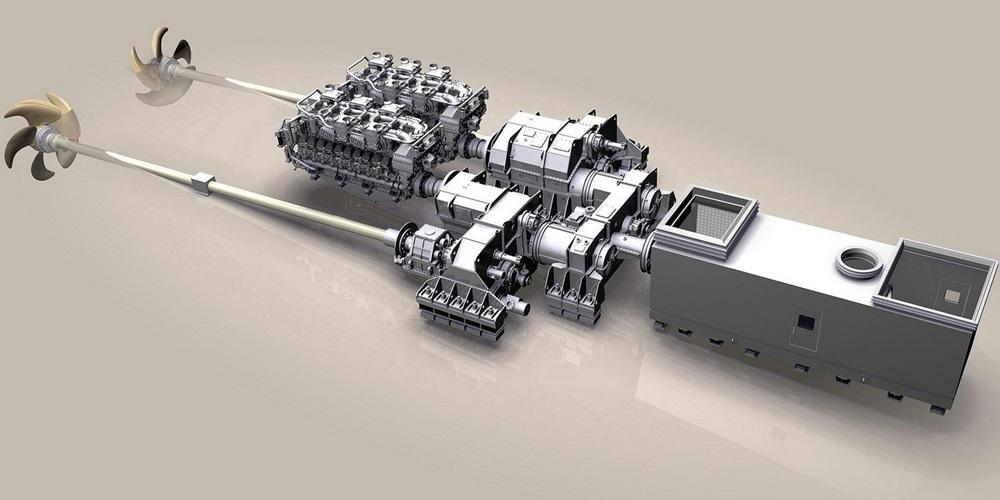
Gas turbine engines (being aero-derivative) generate heat which is transformed from mechanical energy into electricity. To achieve this, compressed air is fired in a combustion chamber. Hot exhaust is made over a turbine that spins to drive mechanically a shaft. The power can be used to spin the generators. The same way works diesel-electric engines, yet they use a direct drive system, not a turbine. The output shafts, to produce electrical power, are connected to generators.
Both engine types need a lot of fuel. Cunard QE2 , for example, consumes daily 380 tons of fuel when traveling at 29 knots speed and carries fuel enough to sail for 12 days. Usually, ships fill up at various seaports and use fueling barges as floating gas stations. Vessels use lower-grade diesel which tends not to burn as purely as diesel-powered road-going vehicles.
All ships rely on propellers/screws to be pushed through the water, providing forward and reverse motion. Airplanes, for example, require tremendous propeller speeds to provide the forward motion, but ship propellers don't need to turn so fast and rely on torque power. Therefore, ships travel slowly and rarely top 30 knots (for more info follow our speed-link above).
Cruise ship engine room
The basic detail about the cruise ship engine room is its location. For stability, the ship's heaviest weights are at its lowest possible deck, and usually, engines are mounted above the keel. Ship's lowest decks are almost entirely full of machinery. An area creating enough power for driving such an enormous vessel through water needs to be really big - very often engine rooms occupy at least three decks. Rather than long halls stretching the length of hulls, machinery is almost always divided into smaller compartments - one for the main engines, another for the heating/air-conditioning system. This compartmentalization is for safety reasons. If a penetration to the hull or fire happens, multiple compartments help contain the damage. The next photo shows the engine room of RCI's Oasis-Class vessels.
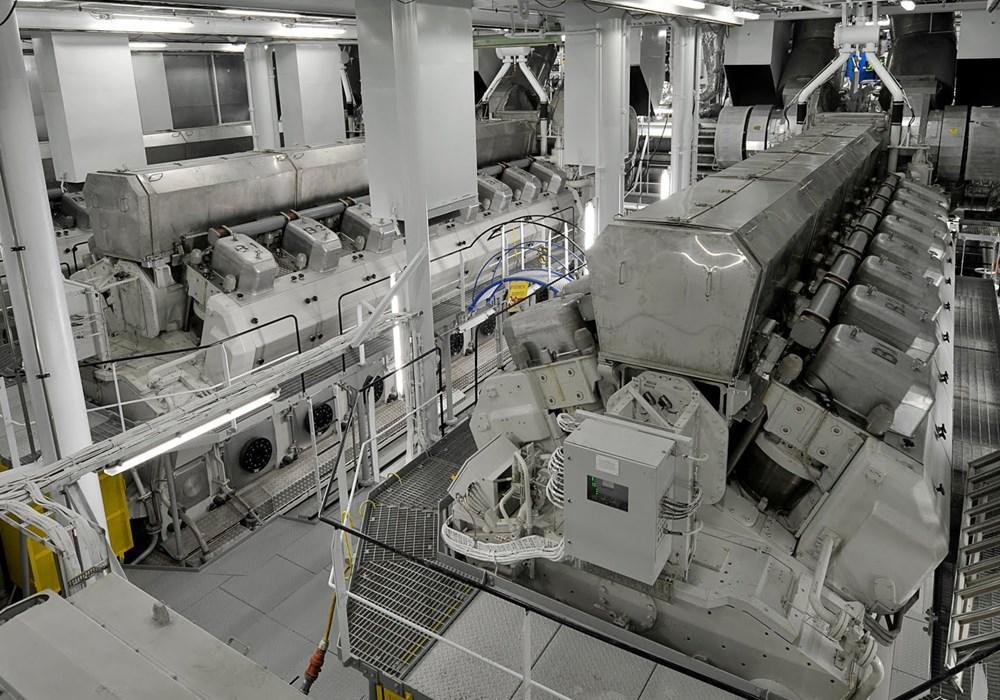
Rarely, engines are not placed at the ship's bottom. RMS Queen Mary 2's four main diesel engines are above the keel, with two smaller gas turbines on top-deck (aft of the funnel). It was not unusual for older liners to have 2 engine rooms. Gradually, technology allowed the consolidation of these spaces. However, current maritime legislation requires vessels to have equipment duplication and 2 engine rooms.
In May 2015, Wartsila Corporation and Carnival Corporation partnered to optimize cruise ship engine room operations of all 101 ships across the corporation's 9 brands. The deal was signed by Micky Arison (Carnival's Chairman) and Bjorn Rosengren (Wartsila's President and CEO). The plan included installing Wartsila's latest marine solutions, first tested on several Carnival Cruise Line vessels in pilot projects. The new systems and technologies included engine control and monitoring systems, safety and fuel efficiency equipment.
Wartsila's "Asset Performance Optimization Solution" package allows obtaining optimal performance from Wartsila marine diesel engines, recommends how to deal with potential issues, maximizes ship performance, ensures full-capacity systems operations, increases the predictability of fuel management and maintenance needs. Wartsila's fuel engine package was specifically designed to reduce fuel consumption.
Wartsila Marine technologies aim to optimize ship performance, but also allow to locate deviations from normal parameters of equipment and engines. This allows emerging problems and engine fault sources to be fixed before they occur.
Conventional diesel cruise ship engine
Today's direct-drive diesels feature one main advantage - the option to use a shaft generator, which is a device using the circular motion of the propeller shaft in order to generate the electricity needed for hotel services, like cooking and lighting.
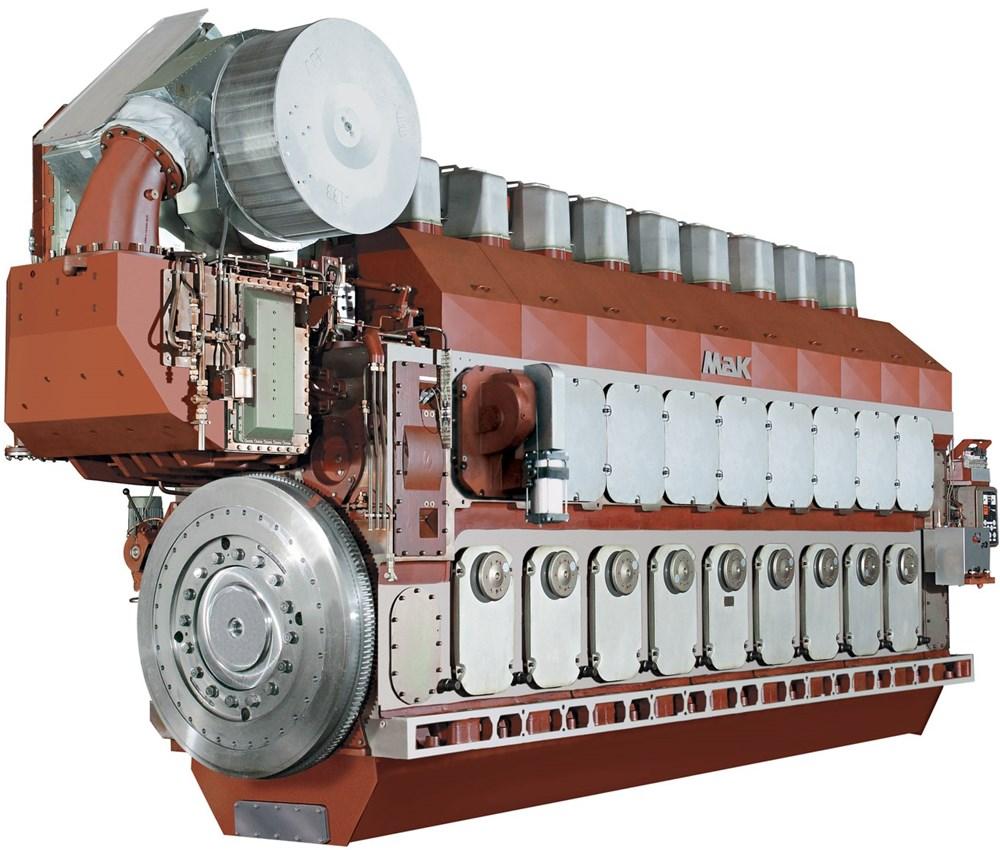
Shaft generators can be used only while the ship is moving with a fairly constant cruising speed. This is what the NCL Epic cruise ship engine looks like:
Diesel-electric cruise ship engine
Almost all new ships feature a diesel-electric propulsion form. On these ships, main engines are not connected to propeller shafts, and instead of it they are directly connected to big generators in order to produce electricity, which is sent in turn to electric motors, that then power and help turn the propellers. The main advantage of the diesel-electric cruise ship engine systems is efficiency as they allow main engines to operate near the most efficient speed, no matter if the ship is moving at 5 or 25 knots.
Losing electrical power is devastating to ships. Main engines and generators require electricity and it's needed to keep them going. Pumps that are driven electrically take in cold ocean water to cool the engines and electrical pumps get fuel from fuel tanks and supply it to the engine. Electrical power is vital for many operational functions - without it, ships come to a halt.
Large equipment (propulsion motor, bow thrusters) requires electricity of high voltage. As for smaller machinery (cabin lights, galley equipment), the electricity goes through the transformer and is thus stepped down into lower voltage. Large cables snake through all the ships to distribute electrical power. They carry power from generators to switchboards, through passageways, public rooms, crew and passenger cabins. Cabling can be a weak point in the distribution system. If the electrical cables aren't truly redundant, even ships that feature two engine rooms suffer power failure.
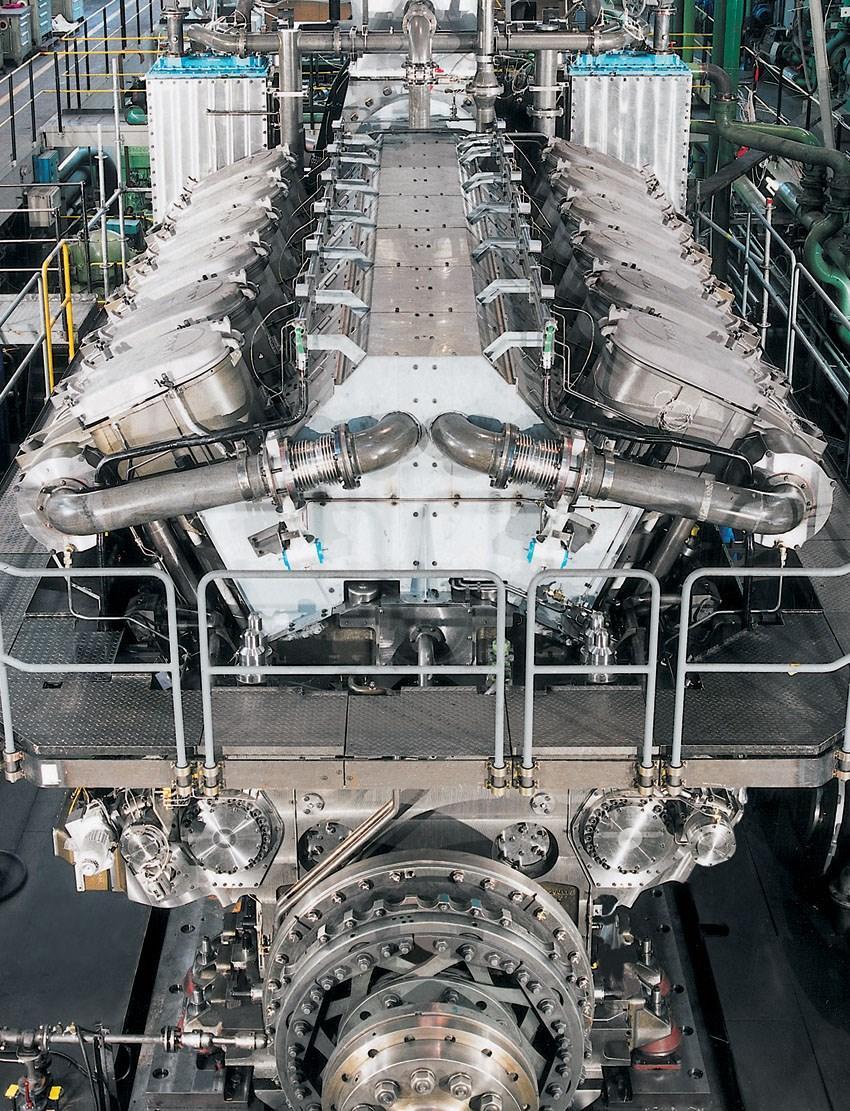
While ships are docked, generators and main engines produce more power than needed. They are turned off in port, and smaller generators supply "hotel" loads (lights, air-conditioning, galley, etc.). Moving through water takes up the vast majority of the ship's power needs - about 85% of all the diesel-electric powerplant production is consumed by the propulsion system. The above photo is of the Vista-class Carnival cruise ship engine room. The engine type is "MAN 2 times; 14V48/60CR" (common-rail diesel injection system):
Cruise ship Emergency Generators
All ships are supplied with emergency generators to maintain vital electrical power. Backup generators are located higher up and also outside engine room spaces to isolate them from damage or fire.
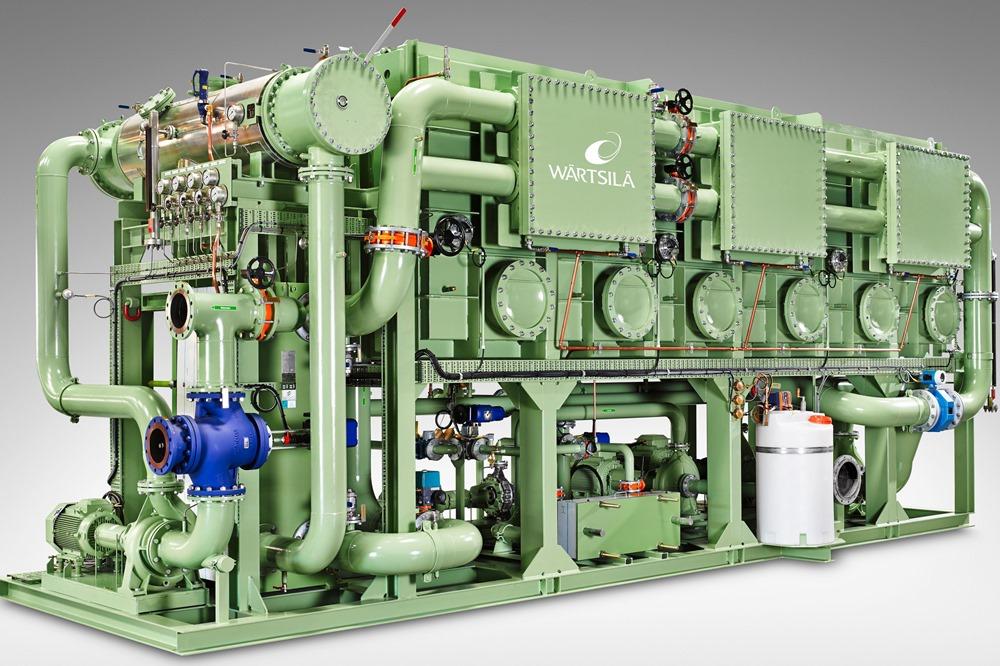
Big ships require much power, so they might have more than one emergency generator. Despite that, they don't have the capacity of main generators and engines, don't produce electricity enough to move the ship, and can't supply all the power needed in ports, because of constraints in space.
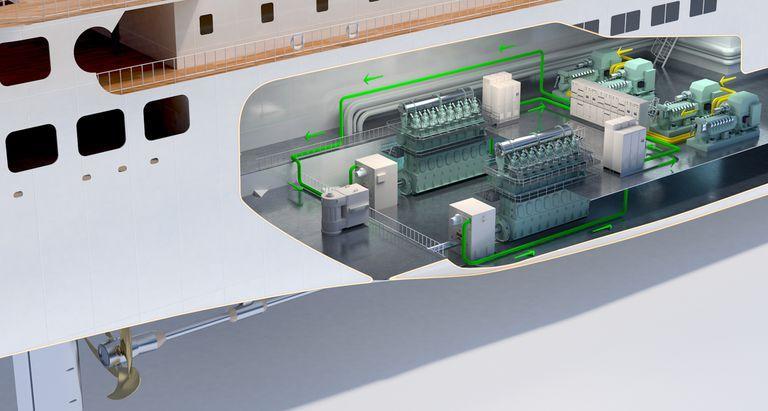
Emergency generators are instead used only for essential navigation systems - crucial communication equipment, critical pumps in the engine room, emergency lighting. Should they also fail, vessels are required to have a battery backup. 24 hours of power are at least provided by battery rooms to the smaller emergency equipment list.
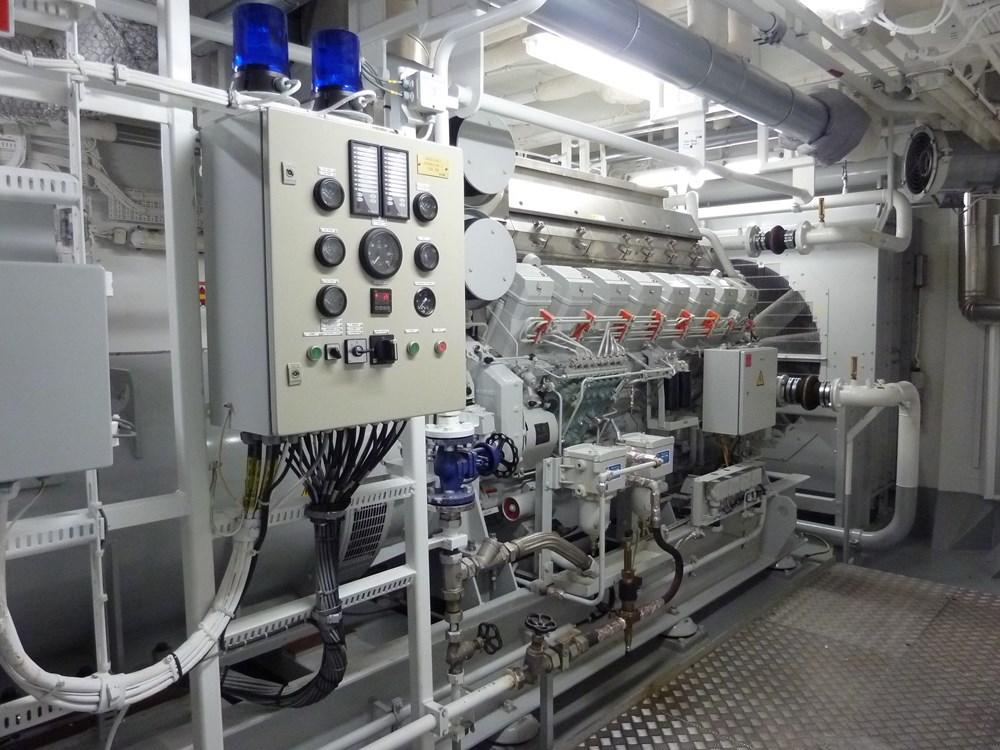
Probably you've heard about Carnival cruise ship accidents related to power failures in 2013. At our Carnival Fun Ship 2.0 upgrades link you can learn how CCL battled with this "unmaintained ships" image and implemented revolutionary new technology initiatives fleetwide - including an additional emergency backup generator on each of their vessels.
Cruise Ship Propulsion
The new cruise ship propulsion systems ABB Azipods XO (below photo) are more fuel-efficient than traditional systems, also providing better maneuverability, maximizing speed, reducing bad emissions, which as a whole optimizes ship's performance and enhances passenger safety.
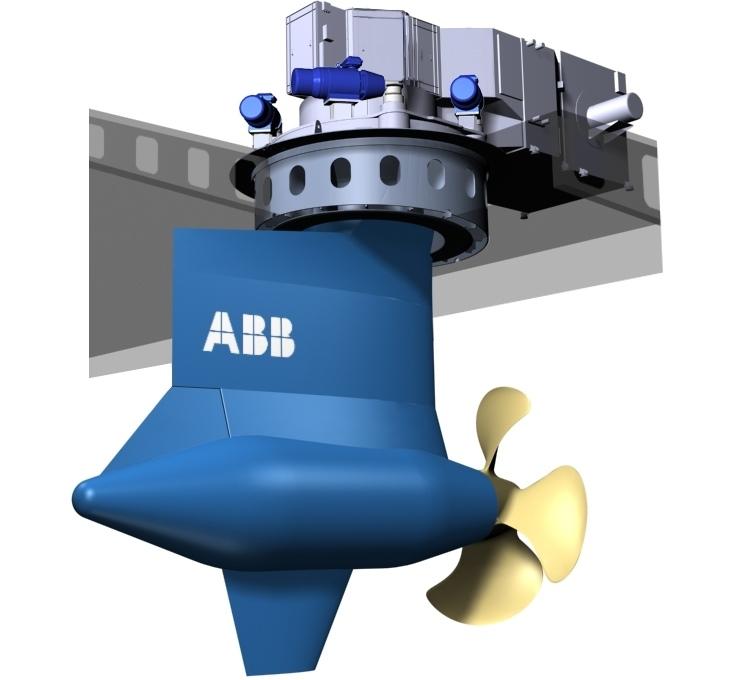
ABB Azipod propulsion systems have a major impact on the vessel's operating efficiency - reducing energy consumption and bad emissions by up to 20%.
In 2019, ABB signed a deal with Oldendorff Carriers (1921-founded, Germany's largest bulk shipping company with a fleet of ~700 ships) for the supply and installation of Azipod propulsion systems on two newbuild carriers. Both self-unloading dry bulk vessels were China-built (by Chengxi Shipyard Co Ltd / subsidiary of CSSC) and scheduled for deliveries in 2021. Each vessel was fitted with two Azipods (power output 1,9 MW per unit) plus various related electric and digital solutions (powerplant, diesel-electric generators, bow thruster motors, transformers, switchboards, power management system, ABB Ability global ABB real-time monitoring).
Azipod cruise ship propulsion system
Azipod cruise ship propulsion system is situated outside the hull in the aft of the ship. Azipod turns in all directions (360 degrees) by a rudder, providing thrust in any directions, not possible for conventional systems.
See at the first photo at right RMS Queen Mary 2 's propulsion system scheme.
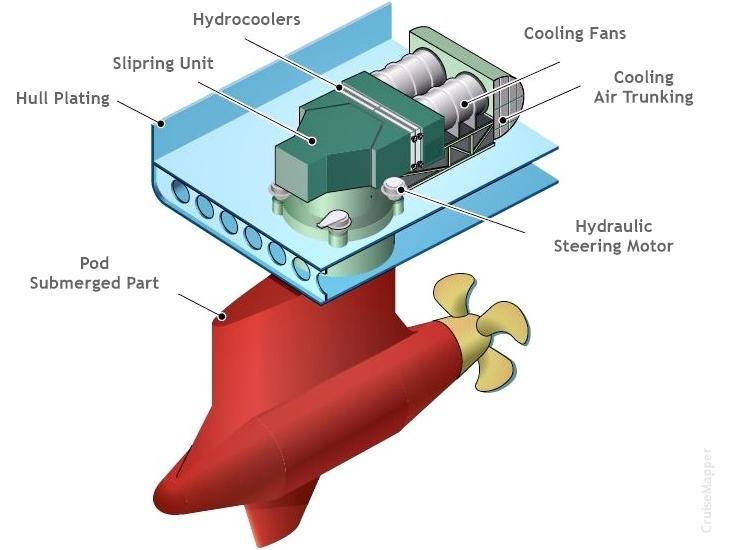
QM2's Azipod is actually an electric propulsion system consisting of the following main components:
- Propulsion motor - used to produce or drive thrust. The propeller's rotating is powered by an electric motor.
- Supply transformer - power produced by generators is 6600 KV, which is stepped down to the necessary voltage by supply transformer and is provided to the motor in the pod.
- Frequency controller - used to change the frequency of supplied power so that the rotating motor speed can be controlled.
Azipod marine ship propulsion is a combination of both steering and propulsion systems. Conventional marine propulsion systems use a two-stroke engine connected to a shaft, that passes through a stern tube and shaft tunnel to connect to the propeller outside the hull in the ship's aft/stern. This system's steering is done by a rudder (in the propeller's aft).
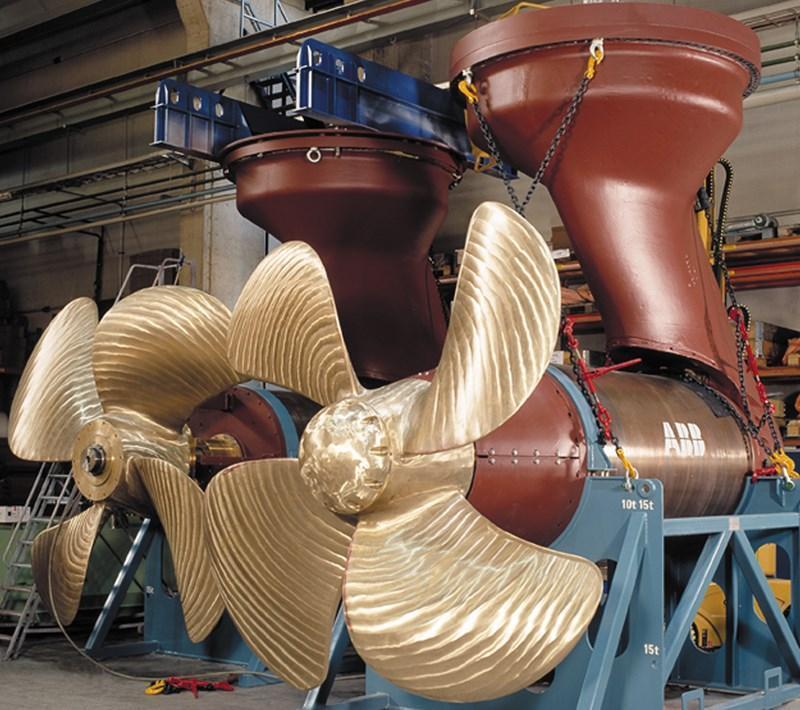
The above photo shows Oasis-class ship propulsion Azipods (2 units) before being mounted onto the hull. The next photo shows the Azipods (both units) mounted on the hull.
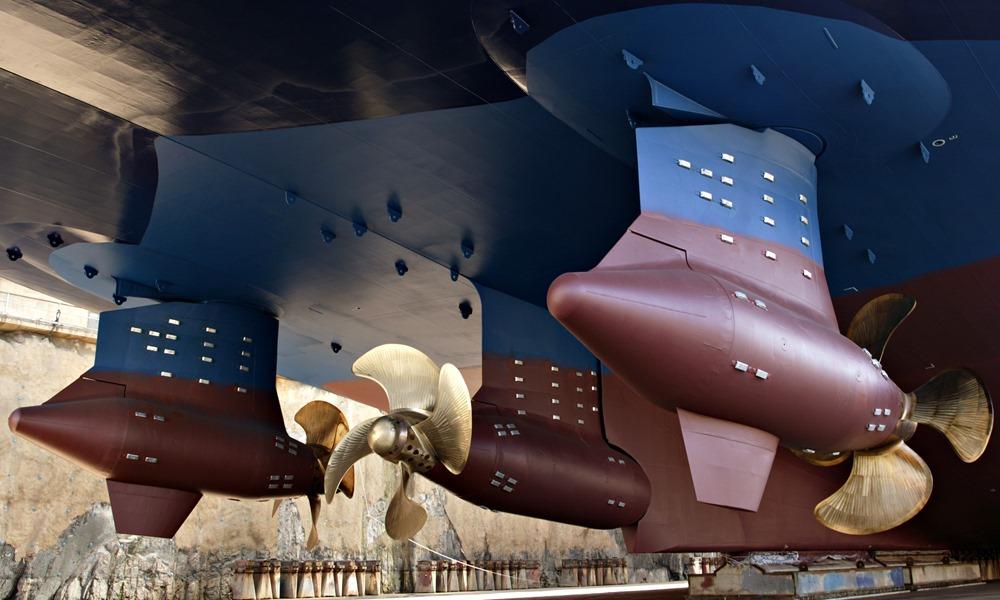
The 3rd Oasis-class ship - Harmony of the Seas, is currently the most technologically advanced and energy-efficient cruise vessel ever built. It is equipped with a new-generation exhaust gas cleaning system (multi-stream scrubbers) and also features a hull lubrication system allowing the ship to float on air bubbles (created around the hull) thus reducing drag and increasing fuel efficiency.
However, the steering and propulsion systems in Azipod arrangement, are combined into one part and the system consists of a propeller (driven by an electrical motor) turned by a rudder connected to the azipod system. The motor is inside the sealed pod and connected to the propeller.
The following YouTube video is about ABB Azipods installed on the new Genting Hong Kong vessels (Star Cruises' new ships and on Crystal Cruises' polar-class boats).
These ships incorporate a complete ABB propulsion - Azipods, electric power plant, computer automation, and software. Crystal cruise ships are powered by two "Azipod D" units allowing navigation in polar destinations. Each of the Star Cruises "Global-Class" vessels have three "Azipod XO" thrusters. All ships have installed ABB's "Intelligent Maneuvering Interface" and the "OCTOPUS" software optimizing fuel consumption and energy management. All these ships were constructed by the German shipbuilder MV Werften. Currently, almost 2/3 of all large-sized cruise vessels, icebreaking ships, and high ice-class cargo ships are with Azipod propulsion.
Advantages of Azipod propulsion marine systems
- A lot of space is saved by the Azipod cruise ship propulsion system in the engine room - there is no propeller, engine, shafting or other arrangements. This saved space can be used for storing cargo.
- Great maneuverability - the propeller can turn in all directions and enables crash maneuvering stop distance that is better than the conventional systems.
- Azipod cruise ship propulsion system can be placed below the ship's height and provide more efficiency than conventional systems.
- In case the ships have large breadth, two (or more) azipod systems, independent from one another, can be used to provide subtle maneuvering.
- Side thruster's use is eliminated as pods can be used to provide side thrust.
- Low lube oil and fuel consumption.
- Lower vibrations and noise than conventional systems.
- Because emissions are low, it's environment-friendly.
Disadvantages of the Azipod marine propulsion
- It requires great initial cost.
- Many diesel generators are needed for producing power.
- The power produced by the motor is limited - the maximum available power now is 21 MW.
- Azipod cruise ship propulsion systems can't be installed in heavy cargo ships that need large motors and a lot of power.
Royal Caribbean Quantum-class cruise ships propulsion
In April 2012 ABB made a USD 60-million contract to provide the Azipod propulsion systems for the new Royal Caribbean ships of the Quantum-class (Quantum, Anthem, Ovation) and Quantum Plus-class (Pulse, Passion). The former name of this vessel design was "Project Sunshine". Builder is Meyer Werft (Papenburg, Germany).
ABB also supplies the power generation, distribution systems, bow thrusters, and of course, the 2 x 20,500 kW propulsion Azipod XO units (at the photo at right), transformers and drives.
NCL Epic ship pod-propulsion
When entering service in 2004, the Cunard's QM2 was the biggest in the world at 150,000 GR tonnes. Her designer Stephen Payne showed the advantages of pod-propulsion giving vessels increased maneuverability. The propellers (screws) of the QM2 ship are mounted on the pods which rotate 360 degrees and provide advanced maneuverability. He made the choice to put pods - though relatively new and yet untested for big ships. Royal Caribbean vessels of Oasis, Freedom, and Voyager classes have pod-propulsion as many other big ships, which is opposed to the fixed traditional screws which push in one direction only.
An interesting fact about cruise ship propulsion is that Norwegian Epic doesn't have pods, though slightly bigger than Queen Mary 2 (at 153,000 GR tonnes), because of NCL concerns about the new technology. Some of the lines (including Celebrity and Cunard) have suffered vessel breakdowns due to pod-bearing failures. Lots of voyages had to be canceled, extensive dry-docking periods were required for pod bearings to be replaced, and NCL didn't want to take the risk.
Currently, NCL Norwegian Epic has two rudders with conventional non-Azipod screws. But how does she manage to maneuver if they can push in one direction only? One option is to make them bigger and more effective when maneuvering, another is to add additional mini-pods or install full-sized pods. Only time will tell if any of these will actually ever happen.
Rolls-Royce cruise ship propulsion system "Promas Lite"
In November 2013, the manufacturing giant Rolls-Royce upgraded Hurtigruten's ship MS Richard With its new "Promas Lite" propulsion system (integrated propeller-rudder system). This is an older ship, and Promas Lite was the perfect choice as it is a combined "propeller-rudder" system increasing the efficiency of older passenger vessels with lesser tonnage. The upgrade significantly reduced Hurtigruten's operating costs on this vessel. The improved propeller efficiency was estimated to be between 11-14% at a cruising speed of 15 knots (17 mph / 28kph).
Promas propulsion integrates propeller, hubcap, rudder bulb and the rudder into a single unit which can increase propulsion's efficiency by 3-8% (1-screw vessels) and by 2-6% (2-screw vessels). It also improves maneuverability, reduces fuel consumption and bad emissions. The new modular technology allows efficient and cost-effective custom-made systems to be built up from various existing and standard parts - mooring winches, anchor cable lifters, warping heads.
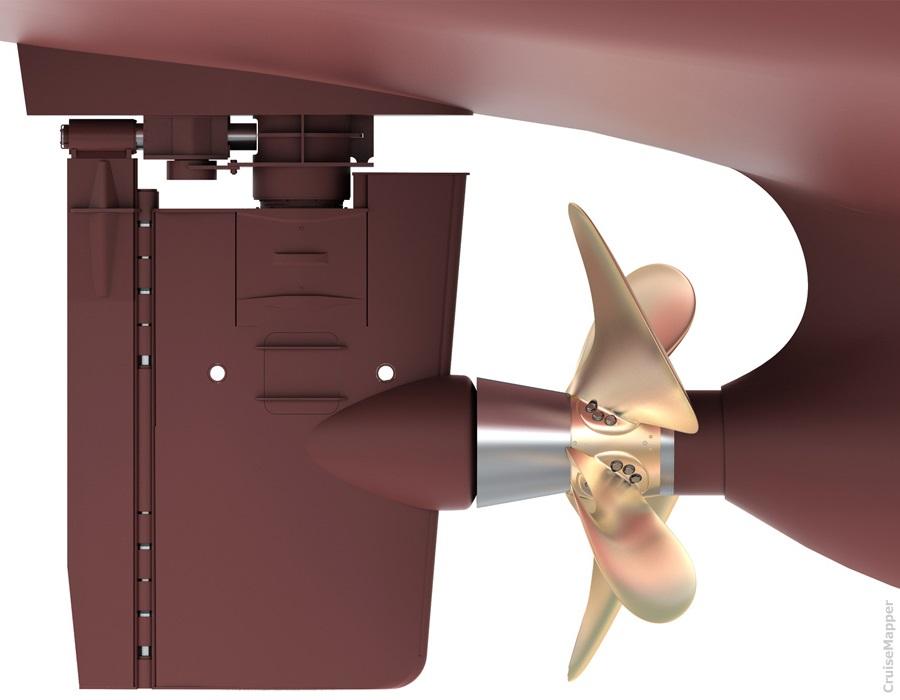
Hurtigruten was compensated with ~80% of its total investment in Promas Lite marine propulsion upgrades as the Norwegian Government has this NOx fund encouraging shipowners and operators to upgrade their vessels and invest in new marine technologies that reduce NOx emissions. The Promas Lite propulsion future clients, besides passenger ships, are marine vessels like fishing and freighter ships.
After Norwegian Spirit (the first ship in NCL fleet with installed Promas Lite in 2011), in May 2014 the Star Cruises ship SuperStar Virgo became Southeast Asia's first passenger liner with RR's Promas Lite propulsion. Fincantieri used Promas Lite propulsion for all Viking Ocean liners.
Cruise Ship Power
The cruise ship engine power is responsible for driving propellers, and the other possibility is producing electricity that is used subsequently to drive propellers. The engine's effectiveness depends not only on the design but also the ship's shape, weight, and size. Power is measured in horsepower traditionally - one horsepower equals 746 watts. The next photo shows the world's largest passenger ships' engine that powers each of the Royal Caribbean Oasis-class vessels.
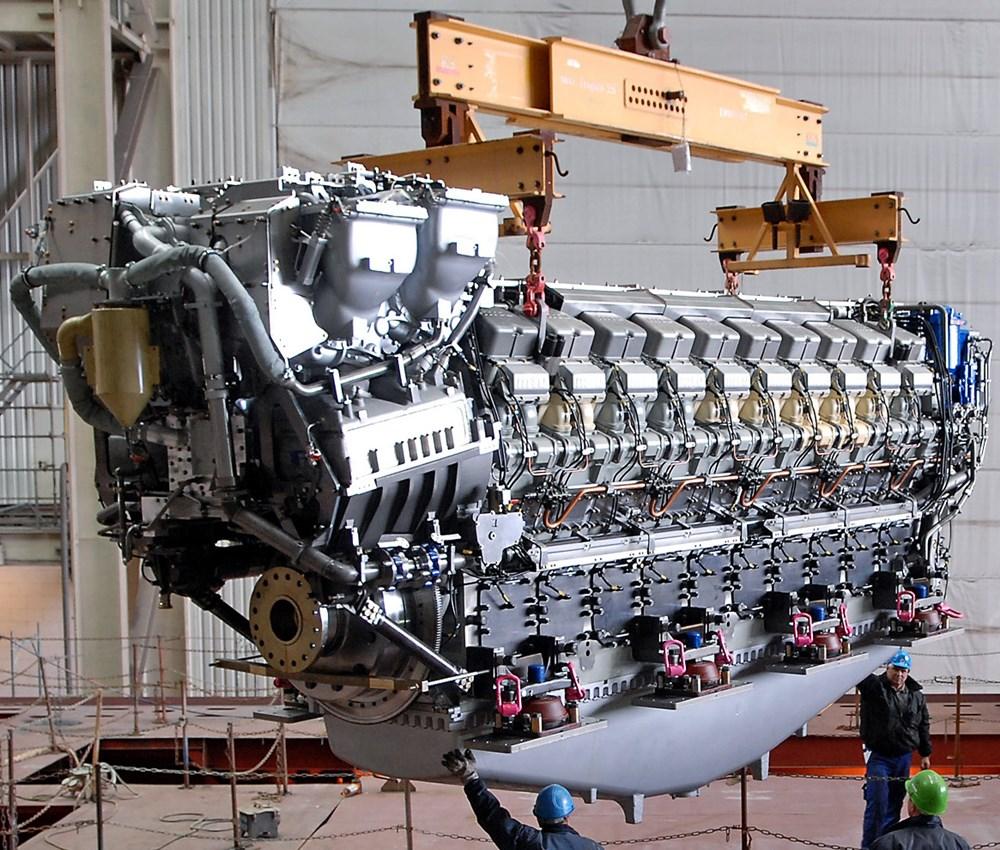
Marine steam engines
The cruise industry began in 1844, when ships were propelled by steam engines, performing the driving of propellers by using steam as working fluid. The largest passenger steamship (before hitting an iceberg on April 14, 1912) was the Titanic, powered by both reciprocating engines and turbines, able to generate 50,000 horsepower (37 megawatts).
Marine diesel engines
Usually, ships are powered by four or five generator sets (medium-speed, 500 revolutions per minute), fueled by diesel and creating 8-10 MW energy each. The power density of marine diesel medium-speed engine is 80 kilowatts per cubic meter. Ships that use diesel engines are required to carry exhaust-treatment systems and catalytic-reduction equipment to reduce the environmental impact.
Marine nuclear power engines
The building of the US first and only merchant nuclear-powered ship was commissioned in the 1950s by President Eisenhower. Of total cost $46.9 million, on the fuel core and nuclear reactor was spent more than $28 million. The ship operated only for five years (1965-1970) but due to the high running costs, its service was terminated.
Marine gas turbines
The first company that fitted cruise vessels with gas turbines, was Royal Caribbean. Gas turbines are greener than diesel engines and allow ships to sail with reduced inventory and smaller maintenance crew. Gas turbines drive generators which in turn provide electricity to propeller motors. They recover heat from gas turbines' exhaust, which then is used to produce the electricity needed for onboard services (air conditioning, water heating).
Rolls Royce is the manufacturer of the world's largest GAS marine turbine "Rolls-Royce MT30". The turbine will provide the immense 109 MW of power for the 2 propellers, all the weaponry, radars, command sys, etc. of the new generation UK aircraft carriers of the Queen Elizabeth class. To this class belong HMS Queen Elizabeth (2017-commissioned) and HMS Prince of Wales (2019-commissioned), each of them with a total power consumption of 80 MW.
Gas-turbine cruise ship power system
The first large vessel to use a new gas-turbine cruise ship propulsion system was Celebrity Millennium . This system will be more frequently used in new cruise ship buildings . It's innovative and, besides new activities available, the economy of scale, marketing, represents an important element of ship design. System's advantages include:
- lower vibrations and noise level, better comfort, lower probability of failure;
- lower exploitation costs because of the easier maintenance;
- nocive emissions reduction, which is partially owed to gas oil instead of fuel (-90% oxide of sulfur, -80% oxide of azote).
- considerable gain of weight and volume, especially when with Azipod marine propulsion system (900 tons, 70 cabins added).
Gas turbines at this time are only interesting in the building of high-speed ships (warships, and especially aircraft carriers, or fast passenger vessels - Millennium max speed is 25kn), because of the better diesel output in lower speeds and higher price of gasoil instead of fuel for diesel engines.
Gas turbine cruise ship propulsion systems are able to avoid pre-heating systems needed for fuel in classic installations (risk of fire!), as they use gasoil, Celebrity's Millenium-class and RCI's Radiance-class use such turbine powerplants. The next photo shows Celebrity's Solstice-class ship propulsion (the 4 aft azipods, and the underwater hull shape).
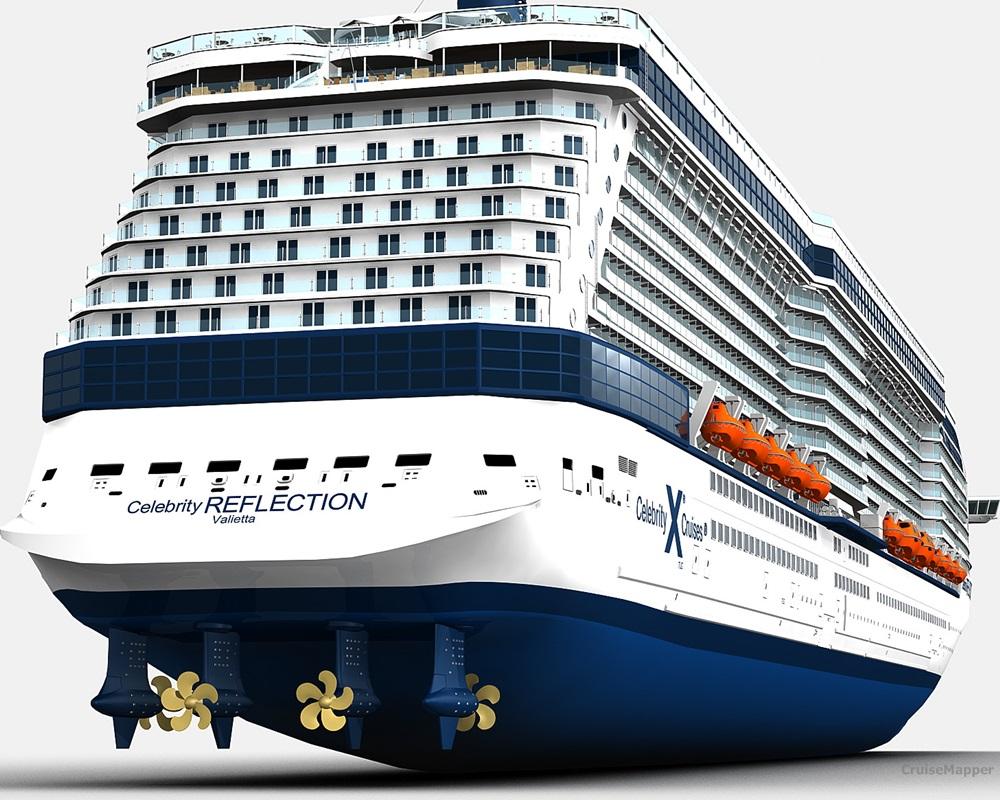
LNG-powered cruise ships
In June 2015, Carnival Corporation announced the company's contract with Fincantieri to build four LNG-powered vessels with the industry's largest passenger capacity. This was part of the order with Meyer Werft and Fincantieri for a total of 9x units to be built in the period 2019-2022.
The four newbuilds became the industry's first LNG (Liquefied Natural Gas) powered vessels using LNG in their hybrid engines. The gas is stored in the ship and used to generate all needed power at sea. The engines are not exclusively LNG, but "dual fuel" (capable of burring both liquid marine fuel and natural gas). This design is for saving onboard space (reducing fuel storage space required).
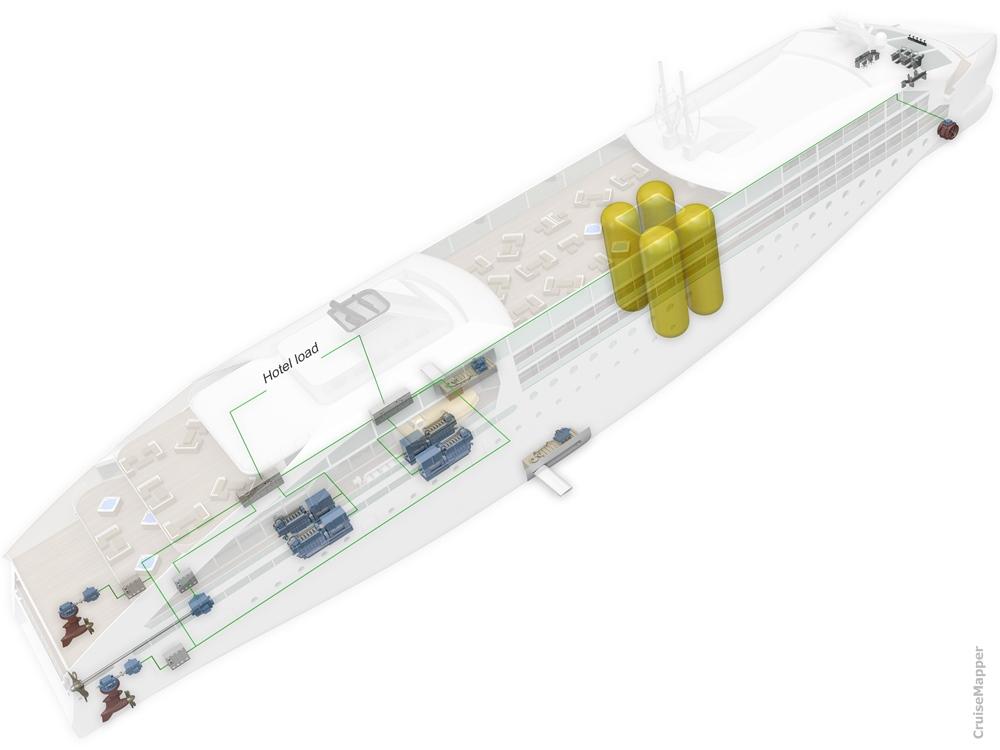
LNG is natural gas, which consists of 90% methane and 10% ethane. When cooled to -160 C, it passes from gas to liquid, and its volume decreases over 600 times, making it very efficient for distribution. Long-distance LNG transportation is via dual-hull gas carriers. Short-distance LNG transportation is via trucks or smaller vessels (also barges) fitted with high-pressure tanks.
Gas fuel eliminates all the bad emissions - soot and sulfur oxides. In April 2016 MSC Cruises announced its contract with STX France for up to four LNG-powered ships with GT over 200,000 tons each. For comparison, the Oasis of the Seas is 225,000 GT tons. The new MSC ships have 5400 passengers capacity at double occupancy each. The first one is scheduled for delivery in 2022. Its power plant will be based on a new prototype engine.
Using LNG to power large cruise ships is a relatively new (2016) concept. Due to LNG tanks' large sizes, this fuel is used usually on smaller passenger shipping vessels ( ferries ) operating on short crossing itineraries. LNG bunkering facilities available in ports are very few. Compared to other fuels (including MGO / marine gas oil), LNG is purer (no unburned residues, fewer greenhouse gases), more efficient, stable and cheaper (reduces fuel costs). LNG technology also advances due to IMO's future maritime emissions regulations, especially in ports and while operating in environmentally sensitive destinations.
In comparison to pipeline gas, LNG is superior in quality - purer, with more methane and other energy content. Its chemical structure also has a stable composition that doesn't generate unburned residues, soot or any particulates. In addition, because the fuel is so clean, on LNG-powered ships maintenance intervals are doubled (over 25,000 hours / ~10140 days), as opposed to the standard MDO-powered 12,500 hours (520 days).
- All the world's major environmental organizations and the marine shipping industry joined for an explicit prohibition on the carriage of non-compliant fuels when the 0,5% sulfur cap takes effect in 2020.
- In January 2018, IMO announced that starting January 1, 2020, the marine fuels' max allowed sulfur content (outside Emission Control Areas) is reduced from the previous 3,5% to 0,5%. Unless marine vessels are using approved equivalent compliance methods, after Jan 2020 there is no reason for ships to use non-compliant diesel fuels.
- IMO's new sulfur cap's goal is to provide substantial health benefits by reducing marine fuels' sulfur content (SOx gases). At the same time, IMO's lowered cap significantly increases ships' operating costs.
The LNG cruise ship concept was first introduced by Wartsila (Finnish manufacturing company) and is based on drive shaft propulsion instead of azipods. The LNG tanks' location is in the upper deck area (right below the funnels). The Rolls Royce concept is based on azipods.
AIDAprima (2016) is one of the world's most technologically advanced cruise vessels. The ship rides on a cushion of air, thus reducing frictions and fuel consumption, The new technology is called MALS ("Mitsubishi Air Lubrication System"), allowing the liner to glide on an air bubbles carpet.
The ship's 4 main engines are dual-fuel (heavy oil and LNG gas oil) thus reducing fuel consumption. The ship has an advanced filtering system that reduces stack emissions (greenhouse gases). The ship's propulsion features 1 pair of stabilizers and 2x ABB-pod drives (new XO-Pod series, power output per unit: is 3 MW). The total power output is 48 MW. AIDAprima is also the world's first-ever "LNG cruise ship" as it uses LNG fuel supply while berthed in ports.
For its LNG-bunkering operations in Florida (at homeports PortMiami and Port Canaveral ), CCL-Carnival partnered with Royal Dutch Shell plc as fuel supplier for the liners Mardi Gras (2021) and Celebration (2022).
AIDA's LNG-powered cruise ships
The AIDAprima ship's first successful test run for LNG supply was in Hamburg Germany on May 7, 2016. While berthed, the ship was successfully provided with LNG at all the itinerary's ports of call (Hamburg, Rotterdam, Le Havre, Southampton, Zeebrugge).
- The company's statistics show that the AIDA ship spends about 40% of its operating time in ports. Compared to using conventional marine diesel (0,1% sulfur content), by using LNG, the vessel's emissions were considerably reduced even further. Sulfur oxides and soot particles were prevented completely (while in port), nitrogen oxide emission was reduced by up to 80%, CO2 emissions were lowered by 20%.
- AIDA ships (produced by Shipyard Papenburg ) are 100% LNG-powered. AIDA invested in research and testing of LNG cruise ship technologies since 2015. In 2013, AIDA collaborated on LNG hybrid barges with Becker Marine Systems. The innovative and flexible solution is used on ships moored in Port Hamburg.
- Since May 30, 2015, AIDAsol is regularly supplied with low-emission LNG power at Hamburg's Hafencity Cruise Terminal.
- AIDA ships use just 3 liters (0,8 US gallons) of fuel on average per person on board for a 100 km (62 ml) trip. This was confirmed by an independent expert study in 2012. Following the implementation of new technologies and economical handling of resources, the company's statistics for 2016 (over 2012) showed reduced energy consumption (9% per person onboard), reduced water consumption (7,2% pp) and reduced CO2 emissions (7,7% pp).
Hurtigruten ships
In April 2018, the Norwegian cruise and ferry company Hurtigruten announced a USD 150 million fleet renovation project. Almost all vessels will be upgraded with new hybrid powerplants that combine LNG-engines and batteries.
For the project was contracted Rolls-Royce Marine, initially for 6 ships plus optional another 3. The program's completion was scheduled before January 1, 2021. The project also includes all vessels to be upgraded with shore power capabilities.
Dual-engine ferries (LNG-MDO)
The next scheme shows the dual-engine powerplant (Wartsila) and propulsion (Azipod) of the cruise ferry Tallink Megastar . This ship is the biggest "floating superstore" on the Baltic Sea, featuring a 2-deck retail shopping complex and the unique self-service option called "Q-shopping". The RoPax vessel uses LNG as prime fuel and MDO (marine diesel oil) as secondary fuel.
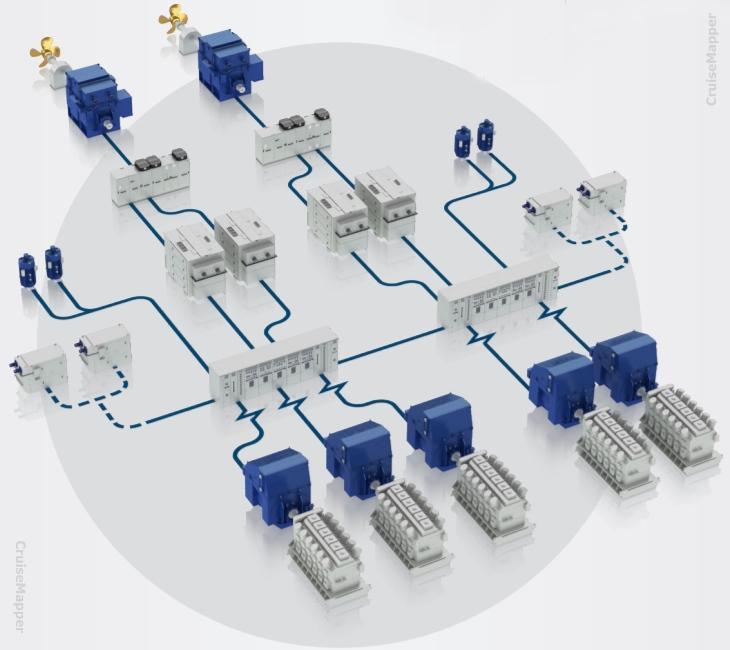
The ship is powered by a total of five Wartsila dual-fuel engines - three 12-cylinder (model 12V50DF, combined output 34,2 MW) plus two 6-cylinder (model 6L50DF, combined output 11,4 MW). Ferryboat's total power output is 45,6 MW. Its propulsion system includes two Wartsila fixed-pitch propellers with twin propeller shafts. Navigation systems are also Wartsila-made, including NACOS Platinum (integrated vessel control system).
The power generated by the main engines/powerplant produces electricity that is used from the propulsion motors, as well as all auxiliary systems and hotel functions. This innovative maritime technology allows the engines to be started and stopped depending on the onboard electricity demand, which additionally improves fuel efficiency.
Vessel's hull is ice-strengthened (class 1A). Rudders are from Becker Marine Systems. When compared to traditional marine engines, in gas mode, the ship's engines produce 1/4 less COx, 2/3 less NOx, zero SOx and no soot particles.
The onboard LNG system consists of 2 bunker stations, 2 horizontal LNG storage tanks by Linde (cryogenic, vacuum-insulated, stainless steel, total gas volume 600 m3), double-walled bunkering lines, pipelines (acid-proof stainless steel), special pipe fittings, gas distribution system, steam boilers. All the ship's electrical equipment is certified "explosion-proof". The LNG is stored at temperatures -160 Celsius (-256 Fahrenheit) and under pressure 4-6 bars.
ABB supplied the vessel's power and electric propulsion systems, as well as the Octopus (smart energy management system). While mechanical propulsion is optimized for a single-speed, electric propulsion is based on rotating speed control resulting in energy efficiency at all speeds. ABB's propulsion also improves passenger comfort as the ship runs much more quietly and smoothly. ABB's Octopus marine technology allows real-time monitoring of the vessel's energy (and fuel) consumption. Based on the collected data, the software suggests optimal performance recommendations.
Spain's first LNG-powered cruiseferry was Hypatia de Alejandria (2019) owned by BALEARIA .
Wind-assisted propulsion
On April 12, 2018, the VIKING LINE -owned ferry Viking Grace became the world's first-ever passenger ship equipped with a rotor sail utilizing wind power. This also made it the world's first hybrid vessel that uses both wind power and dual-fuel (diesel-gas) engines.
"Rotor Sail Solution" is an innovative technology developed by the company Norsepower Ltd (Finland) in 5 years. It reduces fuel consumption and also COx emissions up to 900 tons per year (depending on wind conditions).
The cylindrical rotor sail has a height of 24 m (79 ft) and a diameter of 4 m (13 ft). The technology is based on the "Flettner rotor" (patented by Anton Flettner in 1922) and uses the so-called "Magnus effect" - the spinning rotor (rotating cylinder) drags airflow faster around one side. This creates pressure/speed difference that moves it in the direction of the opposite (lower-pressure) side, creating a force at a right angle to the direction of the wind. This wind-assisted propulsion power drives the ship forward. Unlike traditional cloth sails, the rotor needs no furling (stowing), reefing (reducing sail's area) or line-tending. The rotor sail system is automated and shuts down when unfavorable changes in wind force or direction occur.
Added to the dual-fuel engines, the new technology makes Viking Grace one of the world's most environmentally-friendly passenger ships, operating with very low levels of emissions and noise. Norsepower's wind propulsion system was also installed on VIKING LINE's newest vessel (still unnamed) scheduled for delivery in 2020. The China-built ferryboat is equipped with two Norsepower-produced rotor sails, doubling its wind power potential.
Ship's powerplant includes 4x Wartsila engines (model 8L50DF, total power output 30,4 MW). Propulsion is diesel-electric (2x shafts with fixed-pitch propellers) and wind-assisted (with 1x rotor sail). Engines are dual-fuel (MDO-LNG). As gas tanks are larger than marine fuel tanks. they need 6 times more space. To save hull space, LNG tanks are located on an open deck. LNG tanks are two (type C / vacuum insulated), each with capacity 200 m3 and weight 140 tons (LNG weight 85 tons per tank).
MS Viking Grace is also the world's first ship with the energy recycling system "Ocean Marine" (developed by Climeon AB / Stockholm-based company). The system converts the excess heat (generated by engines and exhausts) into clean (emission-free) electricity with an annual capacity of 700,000 kWh. This electricity is primarily used on cabin decks (including for heating, hot water, lighting). The technology uses heat exchangers that evaporate a carrier fluid circulating in a closed system. This gas (at 2-bar pressure) drives a turbine, then a 100 kW generator produces electricity. After that, the gas is cooled (in a vacuum chamber) and liquefied. Cooling is rapid, as the cold fluid is sprayed out. Then Heat exchangers cool the carrier fluid to temperatures around 20 C / 68 F.
Cruise Ship Fuel Consumption
How much fuel do cruise ships use.
Cruise ship fuel consumption depends on the ship's size. For most vessels, the average consumption is 30-50 miles on a fuel gallon. This will be also determined by other factors using fuel. Ships' gas mileage varies depending on the type and size of ship, the number of passengers on board, and other factors. Larger ships need more fuel to move through the water.
RMS Queen Mary uses 6 tons of marine fuel per hour. Celebrity Eclipse gets 56 feet to the gallon. MS Zuiderdam - .0130 miles per gallon (0.34 tons fuel per mile). This may not seem very good mileage at first glance, however, cruise ships are moving at once thousands of people whereas a car is moving a few.
Nearly all contemporary cruise ships are powered by electricity (motors turn propellers). It powers the air conditioning systems, lights and all other appliances aboard the ship. Most vessels produce the electricity they need by using diesel engines. Some use gas turbine engines. Others use a combination of the two. HFO (heavy fuel oil) is used by diesel engines, while MGO (marine gas oil) is used by gas turbine engines. The MGO is similar to the jet airplanes' fuel.
Speed affects cruise ship fuel consumption because to go faster, vessels must increase the electricity flow to motors. Thus more engines are employed, and it, in turn, increases fuel consumption. For example, Queen Mary 2 consumes 237 tons MGO and 261 tons HFO a day when at full speed. After a certain point, the rate of return decreases from adding engines, because if a ship can manage 17 knots by two engines, it doesn't mean that four engines are going to produce 34 knots.
Cruise companies employ new technologies in order to reduce fuel consumption. Ship's hull, for example, can be applied by silicon coating in order to reduce friction as the ship goes through the water. Friction reduction on Celebrity Eclipse is 5%. Another experiment is LED lighting, using less energy and producing less heat (thus is reduced the demand for electricity and air conditioning). Celebrity Solstice-class vessels have solar panels' field over the AquaSpa pool area. This not only provides shade for the pool area but produced by solar panels electricity is used to decrease the electricity demand from the engines.
RMS Queen Mary 2 is equipped with exhaust gas economizers, using waste heat from engines to produce steam. Then steam is used to heat fuel and QM2 hotel accommodations, laundry, galleys. This reduces the energy amount that has to be produced by ship's engines. The Promas Lite system (mentioned above) generates cruise ship fuel savings in the range of 5-15% depending on the operation type and the actual performance of the ship's existing propeller.
How marine ships fuel consumption increases at higher speeds? Next infographic shows the speed-fuel consumption relation on container ships (their sizes are measured in TEU-containers/20 ft equivalent units), which are similar by speeds and even gross tonnage to cruise passenger ships.
Cruise Ship Pollution
Today cruising is one of the most popular vacations, but there are significant environmental downsides. Mega-ships burn the dirtiest fuel in the world, even if they are sitting in port. Asthma, cancer, respiratory illness, heart disease, are the results of burned in ports nasty bunker fuel.
Shore-to-Ship Power Supply
Those who support the cruise industry point out that cruising has never been more popular. However, more ships generate more pollution. A solution is to have docked vessels plug into the port's shore power grid. Most of the world's largest cruise ports have such dockside electrical hookups, reducing bad emissions by up to 95%.
Aka "cold ironing" and "shore-to-ship power", shore power capability allows berthed cruise ships to shut down their diesel engines (main and auxiliary) and plug into city's electrical grid, using locally-produced electricity for all shipboard equipment and services - including cooling, heating, lighting, emergency, etc. The technology greatly reduces exhaust emissions in seaports. Next video animation reviews this technology.
TUI Cruises Ships Environmental Report
TUI published the company's environmental impact report (first of its kind) including environmental objectives and TUI strategy for a 5-years period. TUI said it planned to issue reports every 2 years. According to it, in 2012 TUI reduced by 3.7% per nautical mile its fuel consumption, and expects further 5% reduction, reducing CO2 emission at the same time by 0.5 kg to 0.55 kg per traveler.
Energy efficiencies are the key to reduce fuel consumption, CO2, and other emissions, and contribute to climate protection. Mein Schiff 3, for example, is expected to feature special energy management systems that help to consume 30% less energy than comparable size ships. TUI is focused on reducing recycling and waste, too. In 2012, TUI reduced the waste amount to 10,7 L (per passenger day), which is 27,8% less (over 2011). In 2012, TUI used 54,463 tons of fuel, including 9,732 tons LSFO (low sulfur fuel oil), 40,880 tons HFO (heavy fuel oil) and 3,851 tons MDO (marine diesel oil). Fuel consumption was 0,367 tons per nautical mile.
All new TUI ships are built to the latest standards with environmentally-friendly marine technologies. These vessels, both as design (hull and superstructure) and implemented technologies, are highly energy-efficient. Each consumes 1/3 less energy compared to most cruise liners. The advanced exhaust cleaning system uses a catalytic and scrubber converter. This technology allows sulfur emissions to be reduced by 99%, and NOx emissions - by 75%.
All-electric passenger ships
In May 2019, the US company "Maid of the Mist" ordered ABB two new all-electric vessels for the company's Niagara Falls tours. Both catamarans are 100% emission-free being powered by high-capacity batteries. Each ship is fitted with two battery packs (combined capacity 316 kWh / 563 HP output). The electricity is provided by 2 fully-independent power systems and split evenly between the 2 hulls.
Shoreside battery charging takes just 7 min (per ship). The powerplant is controlled by ABB's PEMS (Power and Energy Management System), which also optimizes the onboard energy use. Ships' batteries are charged using hydropower (water-generated electricity), which as of 2019 accounts for ~7% of the USA's total electricity production. In addition to the shoreside charging connection, ABB supplied the newbuilds with switchboards, motors, integrated control systems and ABB Ability's Marine Remote Diagnostic System (24-hour equipment monitoring and predictive maintenance).
Battery power is used during turnaround navigation in ports when the onboard diesel-electric generators are switched off. For ferry batteries (fabrication, delivery, and installation) is often contracted the Canadian company Corvus Energy (Richmond BC) - one of the world's largest manufacturers and suppliers of energy storage solutions (ESS) for the maritime industry. The company provides ESS to hybrid and all-electric ferries. As of 2019, Corvus Energy delivered its innovative product line "Orca ESS" to 200+ vessel conversion/upgrade projects, totaling 200+ MWh.
At the following tag-link can be found listed all CruiseMapper's news related to propulsion-power accidents .
This cruise vessel technology-related survey is integrated with our articles on passenger ships building and safety , and the statistical ones about registry/flag-states , cost to build , speed , passenger capacity . All ship links redirect to the vessel's "itinerary-schedule-current position" page.

How Much Fuel Does a Cruise Ship Hold?
Cruise ships from companies like Royal Caribbean are among the most enormous transportation vessels in the world. Roughly the size of an aircraft carrier, the massive passenger liners hold millions of gallons of fuel between five to six engines.
To help break down what those numbers mean practically, let’s dive into a cruise ship’s fuel capacity, standard distance per tank, how they refuel, and more. We will examine Royal Caribbean’s Oasis Class ships as our subject, the most extravagant luxury liners in the world.
How Many Gallons of Fuel Does a Cruise Ship Use?
Large cruise ships can hold around one or two million gallons of marine fuel. While some carry as many as four million gallons, they usually measure over 1,300 feet long, far beyond the world’s largest cruise ships like Royal Caribbean’s Oasis Class.
Not all of the million gallons of fuel rest in the engines. Most of the supply is onboard, where the operating crew refills the boat as needed.
The fuel demands of a Royal Caribbean cruise ship are high. Each uses about 250 tons of diesel daily or around 75,000 gallons. Split between four or five engines, each need between 15,000 and 19,000 gallons of fuel per day (about 750 gallons of fuel per hour). However, this amount varies based on the vessel’s speed.
Depending on the type of gas, location, and service costs, a standard refueling for a cruise ship can cost over $6,000 .
While cruise ships can stay at sea for almost two weeks on their massive fuel supplies, they often refuel every two or three days. That’s because it’s convenient for Royal Caribbean and other liners to fill up the tank when they arrive at ports around the world, usually every few days as part of their route.
Distance Traveled by Cruise Ships on a Gallon of Fuel
If a standard cruise ship weighs around 200,000 gross tons, you might expect that it doesn’t get much mileage per gallon. If you thought that, you’d be correct. For example, Royal Caribbean’s Harmony of the Seas liner only moves 45 feet per gallon of fuel. That’s about the length of the famous Hollywood sign in Los Angeles, California.
A cruise ship moves at an average speed of roughly 20 knots per hour, or about 23 miles per hour. It takes 125 gallons for the vessel to move one nautical mile at maximum speed. If you do the math, that means that a cruise ship can travel about 600 nautical miles without stopping, or the distance between the Yucatan Channel and Jacksonville, Florida .
However, that’s if the liner moves at max speed. More often, a cruise ship will travel less than 500 nautical miles per day at average speed, depending on its route and number of stops.
LNG Fuel as a Cost-Effective and Safer Solution
Cruise ships are perfect for fantastic maritime experiences, but the downside is that they are not environmentally friendly. The massive amount of diesel fuel a luxury liner needs pumps pollutants into the air, leaving a noticeable carbon footprint. Thankfully, many cruise ships are turning to LNG (liquefied natural gas) fuel .
What is LNG fuel? It is an energy source made primarily from the naturally-occurring chemical methane. While burning, liquefied natural gas does not produce smoke, dust, or soot. Its 95 percent methane composition releases water vapor and a much smaller amount of carbon dioxide. Transportation industry giants are turning towards LNG fuel to reduce carbon emissions in increase fuel efficiency.
Cruise companies like Royal Caribbean desire to use LNG fuel beyond just reducing a carbon footprint. The less emissive gas costs much less than diesel and sulfur-based fuels. Its lower cost and impact are why many trains, cruise, and transportation companies are making mass conversions to LNG.
Which Cruise Ships Use LNG?
As of late 2022, ten active cruise ships use LNG fuel across several companies. They are:
- AIDAbova (Meyer Werft)
- Costa Smeralda (Costa Cruises)
- Carnival Mardi Gras
- P & O Cruises Iona
- AIDAcosma (Meyer Werft)
- Costa Toscana (Costa Cruises)
- Disney Wish
- Carnival Celebration
- MSC World Europa (MSC Cruises)
- Norwegian Prima
Other manufacturers have their sights set on LNG-fueled cruises in the future. Royal Caribbean’s Icon of the Seas will be its first luxury vessel with sustainable power. The company plans to pad its new Oasis of the Seas line with as many LNG cruises as possible.
How Does a Cruise Ship Refuel?
When cruise ships make stops at ports worldwide, it’s the perfect time to refuel and check the vessel’s condition. However, with cruises being as wide as Royal Caribbean’s Wonder of the Seas at 210 feet long, it isn’t as simple as pulling up to the shore. Since luxury liners extend far below the water’s surface, cruise ports extend far into the ocean.
To refuel, teams take barges loaded with marine fuel to the cruise ship in a process called bunkering . The cruise ship operators empty their oldest reserves into the engines to make way for new fuel. Then, a team of bunkering professionals don safety gear and carefully sail a barge to the cruise to fill its tanks.
They pump the oil into the tanks and carefully monitor the supply lines. The bunkering process, if executed poorly, can result in fires, spills, and environmental damage. That’s why the workers involved take extra precautions transferring and filling the cruise ship with oil.
Bunkering a vessel is not a short process. It takes over half a day to fully refuel a cruise ship due to its high maximum capacity, energy requirements, and the necessary labor. Because of this, a luxury vessel will seldom pass up the opportunity to refuel at the port. There’s no better time than while the cruise passengers are enjoying the local environment.
Now you know how much fuel Royal Caribbean and other cruises can hold. At about 750 gallons, these luxury liners consume tons of fuel per hour. The refueling process is delicate, laborious, and expensive. Thanks to LNG fuel innovations, the cruise industry is moving towards lower costs and a greener future.
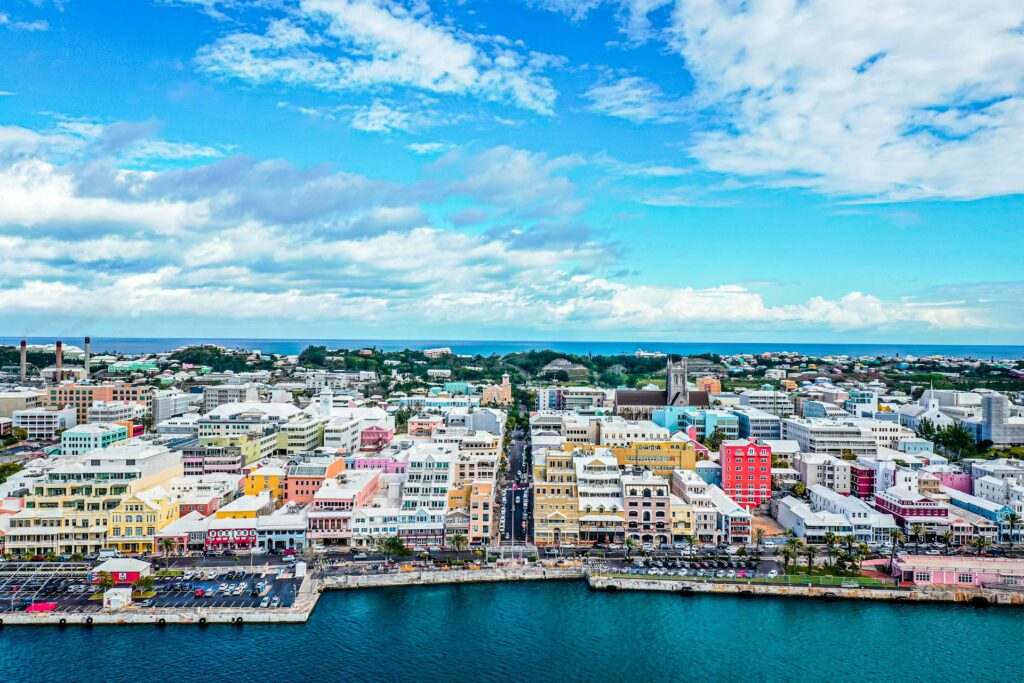
Bermuda Cruise Port Guide
Planning your cruise to Bermuda and trying to figure out what to expect at the port? There are multiple ports in Bermuda for cruise ships to dock: King’s Wharf and Heritage Wharf are both located in the Royal Naval Dockyard on Ireland Island North at the western tip of the Great Sound (the busiest cruise …

How Much Is a Disney Cruise?
The happiest place on Earth brings smiles to the seas with all the amenities offered on a Disney Cruise vacation. Between the pools, spa, shows, entertainment, and dining options, a Disney Cruise is a vacation with something for everyone. If you’re considering a Disney Cruise vacation, you’re likely wondering, “how much is a Disney Cruise?” …
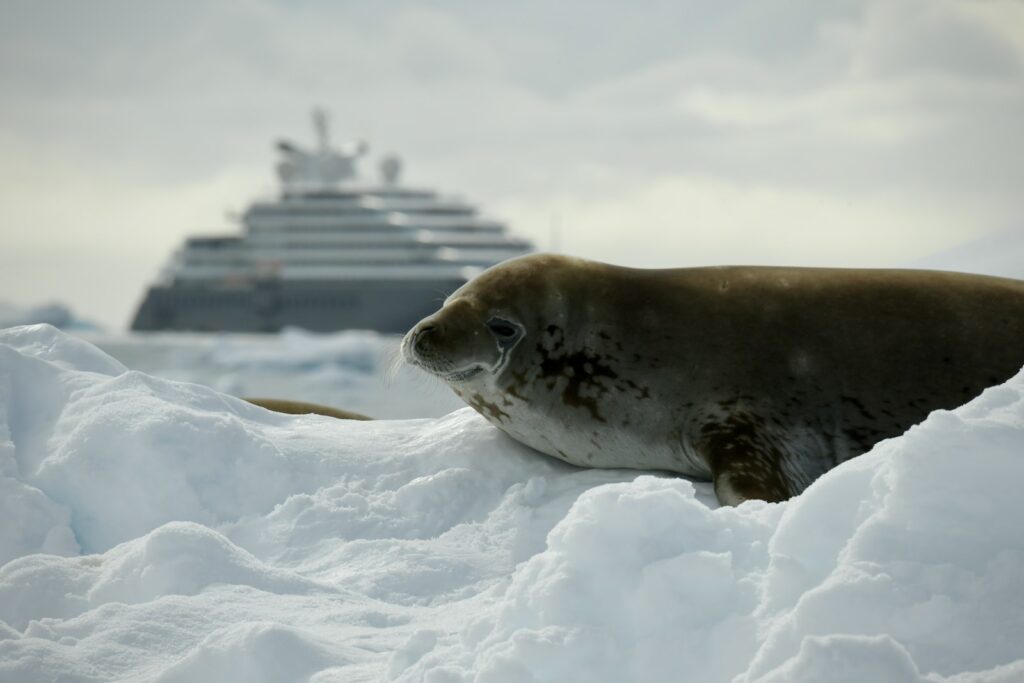
How Much Does an Antarctica Cruise Cost?
For many people, seeing Antarctica is a dream come true and the trip of a lifetime. The best way to experience it is by taking a cruise. Flying requires expensive charter flights with expert pilots, but cruises let you make multiple stops. Generally, a cruise to Antarctica typically costs at least $10,000 per person. Still, …

About Fred Dean
I've been cruising for 15 years, and I can't get enough.
Leave a Comment Cancel reply
Save my name, email, and website in this browser for the next time I comment.
How Much Fuel Does a Cruise Ship Use?
Erin is a digital media specialist with many years of experience covering a wide variety of topics for a number of websites and publications.
Learn about our Editorial Policy .
Beyond providing everything you need for a vacation, a cruise ship also provides transportation to a destination. Indeed, the demands of a cruise ship are extraordinary and so is the fuel consumption. Of the many fascinating questions cruise ships inspire, the most common is how much fuel they use.
Cruise Ship Fuel Usage
Size is key to fuel consumption and efficiency. A smaller ship will use less fuel than a large ship to travel the same distance. Both size and the average speed a cruise ship travels impact how much fuel it uses. On average, a large cruise ship can use up to 250 tons of fuel per day , which is around 80,000 gallons. Cruise1st.co.uk claims a normal cruise ship can use around 140 to 150 tons of fuel each day, consuming 30 to 50 gallons per mile travelled.
- Turn a Towel Into a Treasure by Folding It Into a Gift Basket
- Are You Smarter Than a 5th Grader Questions to Put You to the Test
- Easy Methods for Getting Yellow Out of Your Gray Hair
Similar to a car, traveling at higher speeds means an increase in aerodynamic drag, which directly impacts fuel use. Given that most cruise ships travel at 21 to 24 knots , this isn't often an issue.
In general, a large cruise ship up to 1,100 feet in length can carry as much as two million gallons of fuel on board. For comparison, a private motor yacht between 40 and 60 feet only carries 200 to 1,200 gallons, while something massive like the Exxon Valdez carries up to 55 million gallons.
The Guardian reported that the Harmony, owned by Royal Caribbean, has two four-story high, 16-cylinder Wärtsilä engines. At full power, they would burn around 1,377 gallons of fuel per hour, or about 66,000 gallons a day of high-polluting diesel fuel. It's important to note that Harmony of the Seas was the biggest cruise ship in the world until the new Symphony of the Seas took to the water in 2017.
Queen Mary 2
In the case of the Queen Mary 2, the ship is huge at 1,132 feet long and a weight of 151,400 tons. This storied passenger liner is built for speed and is capable of a cruising speed of 29 knots and a top speed of 32.5 knots. Compare this to most cruise ships and you can see that the QM2 is a water rocket. It travels at a brisk clip that requires more fuel. According to Chavdar Chanev of CruiseMapper.com , the QM2 averages six tons of marine fuel per hour.
Norwegian Spirit
At a petite 878 feet long and 75,500 tons, this ship is much more fuel efficient. When sailing, the Spirit chugs along at an average speed of 24 knots and burns approximately 1,100 gallons per hour. Thus, with a fuel capacity of over 350,000 gallons, it can conceivably remain at sea for 12 days without refueling.
Freedom of the Seas
Freedom class ships are all 1,112 feet long with an average speed of 21.6 knots. They are rumored to have a standard fuel consumption of 28,000 gallons of fuel per hour, which seems much higher than other similar ships. Their propulsion systems are state-of-the-art, providing a 10 to 15 percent fuel savings overall.
Size Matters
When considering how much fuel it takes to move one these massive vessels, it depends on the size and speed. Liners like the QM2 will need far more fuel than a smaller ship. The concept is similar to land vehicles. Naturally, a small economy car will run longer on less gasoline than a big utility truck. Though cruise ships continue to get bigger, there's always hope for better fuel efficiency.

Cruise FAQs
How much fuel does a cruise ship use per mile.
Table of Contents
Key Takeaways
- Cruise companies are transitioning to sustainable practices and exploring green technology and alternative fuels.
- The COVID-19 pandemic has temporarily reduced fuel consumption and emissions in the cruise industry.
- Optimizing fuel consumption involves strategies such as reducing fuel usage, optimizing ship speed and route planning, and considering weather conditions and currents.
- The cruise industry is exploring the use of alternative fuels like liquefied natural gas and biofuels, and investing in technological advancements in propulsion systems.
The Environmental Impact of Cruise Ships

Factors Affecting Fuel Consumption
How cruise ships are powered.
Traditional Fuels vs. Alternative Energy Sources
The role of lng in reducing emissions, average fuel consumption per mile, strategies to reduce fuel consumption, the future of sustainable cruising, the impact of covid-19 on cruise ship fuel consumption, temporary reductions in emissions, long-term effects on industry practices, public perception and consumer demand, the role of government and international organizations, conclusion: balancing the pleasure of cruising with environmental responsibility, frequently asked questions, how does the size of a cruise ship affect its fuel consumption per mile, are there any regulations in place to limit the fuel consumption of cruise ships, what are the most common alternative fuels used by cruise ships to reduce their environmental impact, how do weather conditions, such as wind speed and sea currents, affect a cruise ship’s fuel consumption, are there any technological advancements being made to improve the fuel efficiency of cruise ships in the future.

Meet Asra, a talented and adventurous writer who infuses her passion for exploration into every word she writes. Asra’s love for storytelling and her insatiable curiosity about the world make her an invaluable asset to the Voyager Info team.
From a young age, Asra was drawn to the power of words and their ability to transport readers to far-off lands and magical realms. Her fascination with travel and cultures from around the globe fueled her desire to become a travel writer, and she set out on a journey to turn her dreams into reality.
What Is A Fish Extender Disney Cruise
How Pregnant Can You Be On A Cruise

Meet Asra, a talented and adventurous writer who infuses her passion for exploration into every word she writes. Asra’s love for storytelling and her insatiable curiosity about the world make her an invaluable asset to the Voyager Info team. From a young age, Asra was drawn to the power of words and their ability to transport readers to far-off lands and magical realms. Her fascination with travel and cultures from around the globe fueled her desire to become a travel writer, and she set out on a journey to turn her dreams into reality.

You may like
What culinary delights await on regent's new seven seas explorer?.
Lavish your taste buds with unparalleled culinary experiences on Regent's Seven Seas Explorer, where a hidden gem awaits to tantalize your senses.
- Indulge in gourmet French cuisine at Chartreuse with classic dishes and impeccable service.
- Experience sushi and seafood delights at Pacific Rim with standout sushi and creative offerings.
- Enjoy diverse flavors at Compass Rose and Prime 7, offering whole Maine lobster and USDA prime steaks.
- Satisfy cravings with indulgent desserts like Chocolate Soufflé and Tiramisu on Seven Seas Explorer.
Dining Options on Seven Seas Explorer
Gourmet French Cuisine Experience
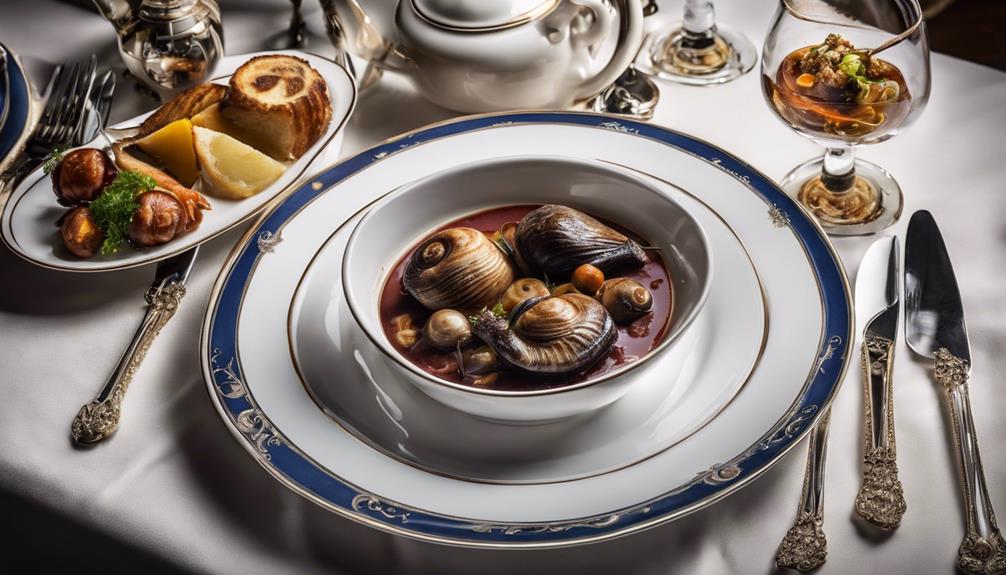
- Gourmet Delights : Indulge in a menu filled with classic French dishes prepared with a modern touch.
- Luxurious Atmosphere : Immerse yourself in a Parisian oasis with impeccable service and lavish surroundings.
- Exquisite Presentation : Each plate is a work of art, showcasing the chef's dedication to culinary perfection.
- Sophisticated Experience : From the first bite to the last sip, Chartreuse offers a refined dining experience that's truly unforgettable.
Sushi and Seafood Delights
Indulgent Desserts to Satisfy Cravings
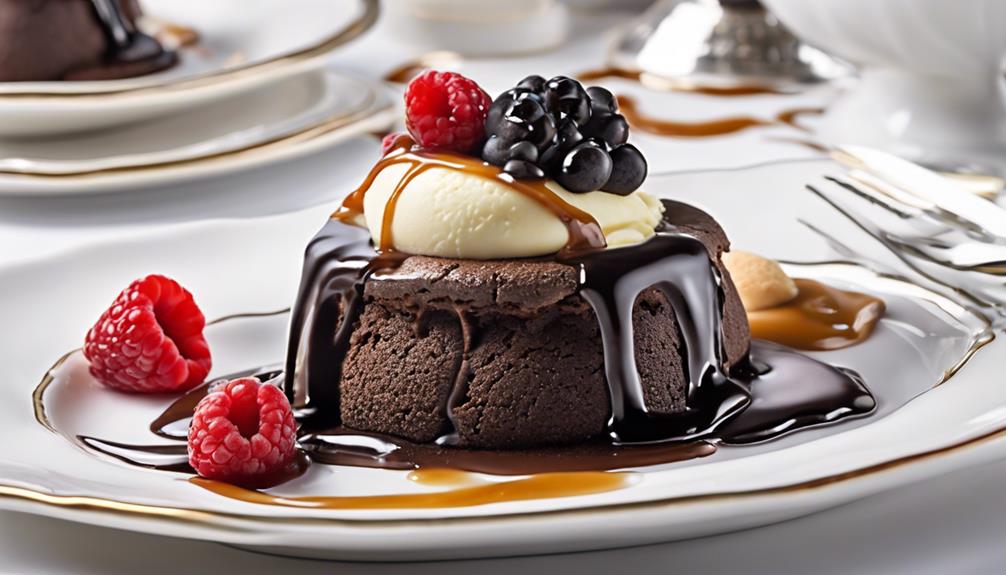
- Decadent Chocolate Soufflé : Indulge in the rich and velvety chocolate soufflé served with a luscious warm chocolate sauce. The perfect balance of light and decadent flavors will leave you craving for more.
- Classic Crème Brûlée : Delight in the creamy texture of the crème brûlée, topped with a perfectly caramelized sugar crust. The contrast between the crunchy sugar and smooth custard makes every bite a luxurious experience.
- Rich New York Cheesecake : Treat yourself to a slice of New York cheesecake, featuring a creamy and dense texture complemented by the sweetness of fresh berries on top. It's a timeless dessert that exudes elegance.
- Traditional Tiramisu : Savor the layers of espresso-soaked ladyfingers and luscious mascarpone cheese in this classic tiramisu. The perfect balance of coffee, cream, and sweetness makes it a heavenly finale to any meal.
Diverse Flavors for Every Palate
What Is Promised to the Guests of Regent Seven Seas Cruises on Every Voyage?
What does guaranteed mean on regent seven seas cruises?, what is regent seven seas cruises known for?, are drinks included on seven seas explorer?.

Claire, a creative soul with an unquenchable thirst for storytelling, is an integral part of the Voyager Info team. As a dedicated writer, she weaves captivating narratives that transport readers to enchanting cruise destinations and beyond.
Claire’s love affair with writing began at an early age when she discovered the magic of words and their ability to craft worlds and emotions. Her innate curiosity led her to explore various literary genres, but it was travel writing that truly captured her heart. Drawing inspiration from her own globetrotting adventures and encounters with diverse cultures, Claire embarked on a journey to become a travel writer par excellence.
Discover Quito's Rich Heritage and Experiences: A How-to Guide
Mysterious and alluring, Quito's heritage beckons exploration – uncover the secrets that make this city a cultural gem.

- Explore Quito's cultural heritage through indigenous art and modern expressions.
- Indulge in Ecuadorian gastronomy blending traditional flavors with cultural influences.
- Enrich your visit with guided tours revealing Quito's diverse history and treasures.
- Immerse yourself in Quito's historic landmarks for a journey through vibrant stories and architecture.
Exploring Quito's Cultural Heritage
Indulging in Gastronomic Delights
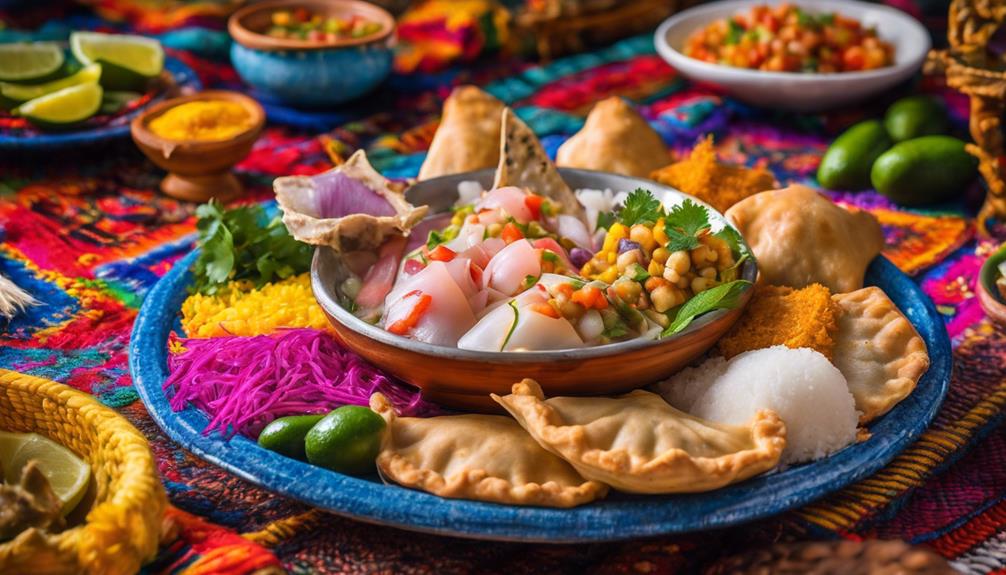
Guided Museum Tours
Discovering Quito's Historic Landmarks

Immersive Heritage Experiences
Are There Any Local Superstitions or Folklore That Are Unique to Quito?
What are some lesser-known traditional dishes or drinks that visitors should try in quito?, can visitors participate in any hands-on cultural activities or workshops during their stay in quito?, are there any hidden gems or off-the-beaten-path historic landmarks in quito worth exploring?, how can visitors support local artisans and craftsmen while experiencing quito's cultural heritage?, cruising capri: a guide to the island's delights.
A voyage through the enchanting waters of Capri offers a tantalizing blend of history, beauty, and adventure – but what lies beneath the surface will leave you spellbound.
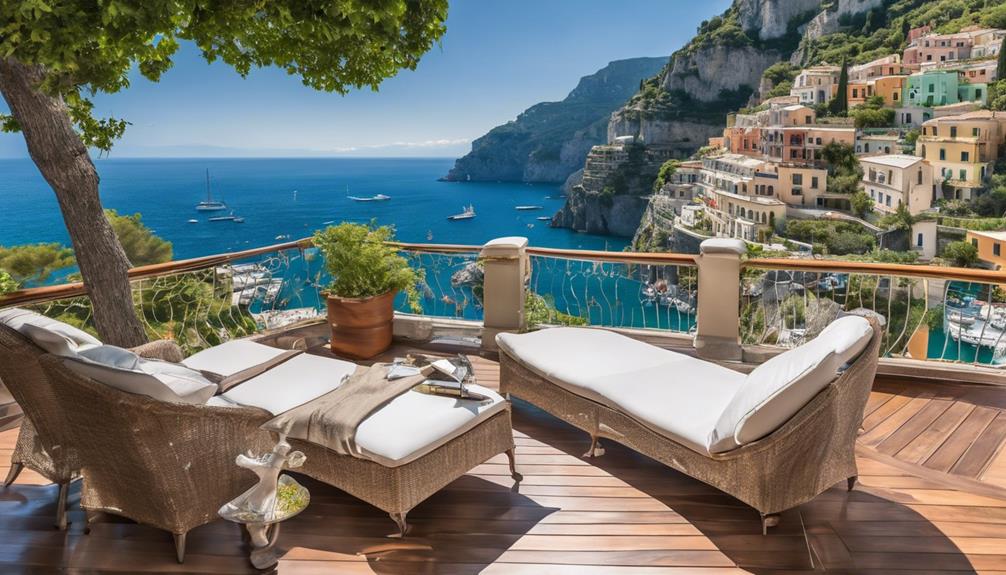
- Capri offers a mix of luxury, history, and natural beauty.
- Indulge in local cuisine with Italian and Mediterranean flavors.
- Explore charming villages, scenic landmarks, and stunning caves.
- Engage in thrilling adventures like snorkeling and boat trips.
Island Overview and History
Scenic Landmarks and Attractions
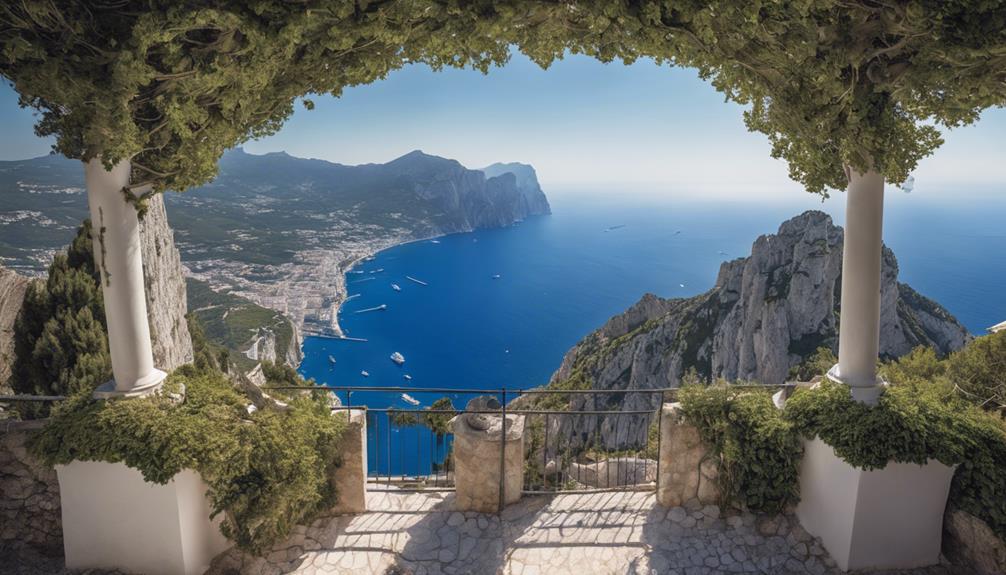
Culinary Delights and Local Cuisine
Charming Villages and Coastal Towns


Leisure Activities and Adventures
Is Capri Too Touristy?
Is private boat in capri worth it?, how long does it take to see the blue grotto capri?, what day is best to go to capri?.

Affiliate disclaimer
As an affiliate, we may earn a commission from qualifying purchases. We get commissions for purchases made through links on this website from Amazon and other third parties.

5 Must-Visit Temples on a Japan Cruise

Regina Charboneau: Culinary Ambassador of American Queen Voyages

What Is The Weather Like On A Transatlantic Cruise In April
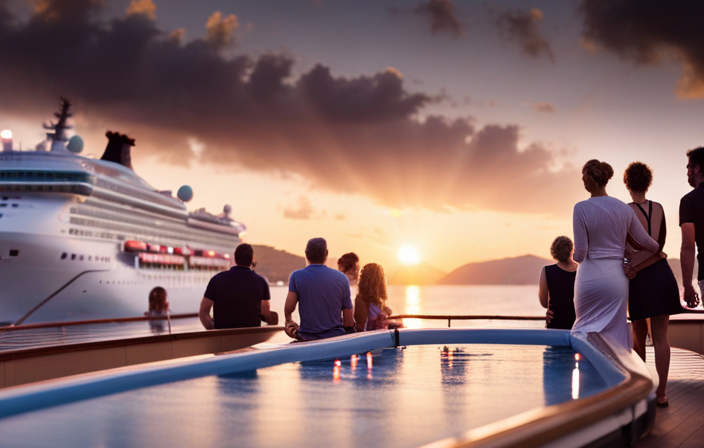
What Is The Average Age Of Passengers By Cruise Line
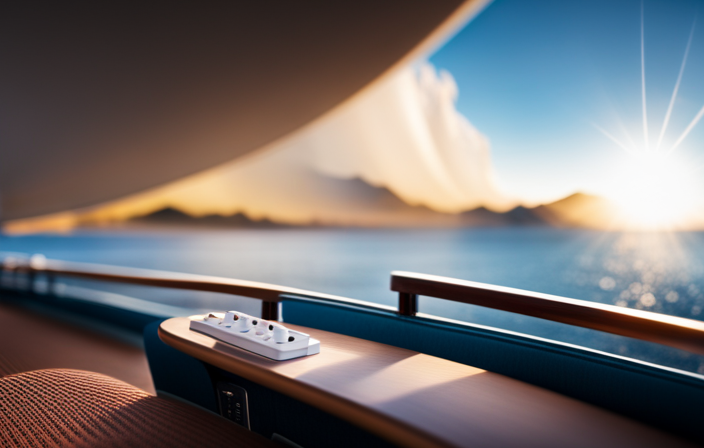
What Plugs Are Used On Norwegian Cruise Line

How To Get To Atlantis From Cruise Port
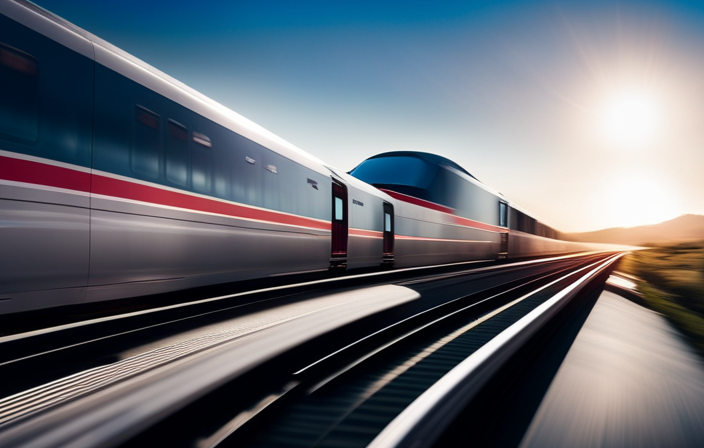
How To Get From Fco To Civitavecchia Cruise Port

Azamara Onward: Origins, Renovation, and Future Plans
Anthony Bourdain: Unconventional Culinary Icon and Global Influencer

Authentic Tacos and Local Delights: A Culinary Adventure in Cabo San Lucas

Arctic Adventure: Uncharted Destinations With Le Commandant Charcot

Authentic Art, Exciting Auctions: The Ultimate Cruise Ship Experience!

Which Celebrity Cruise Ships Have Been Refurbished

What Drinks Can You Bring On Princess Cruise

How To Turn On Cruise Control Tesla Model 3

How To Set Cruise Control Tesla Model Y
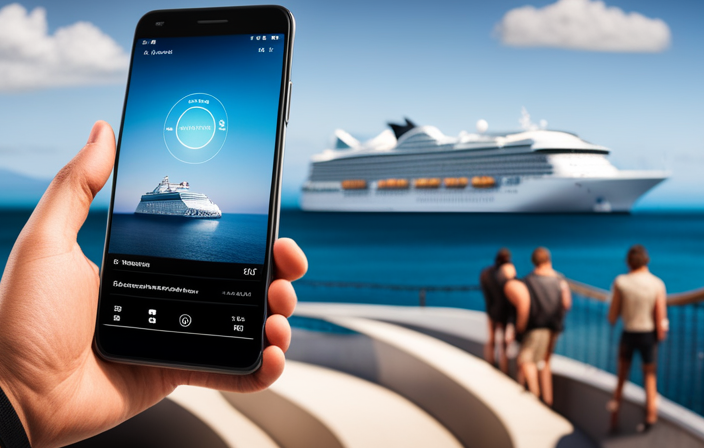
How To Check Weather For A Cruise
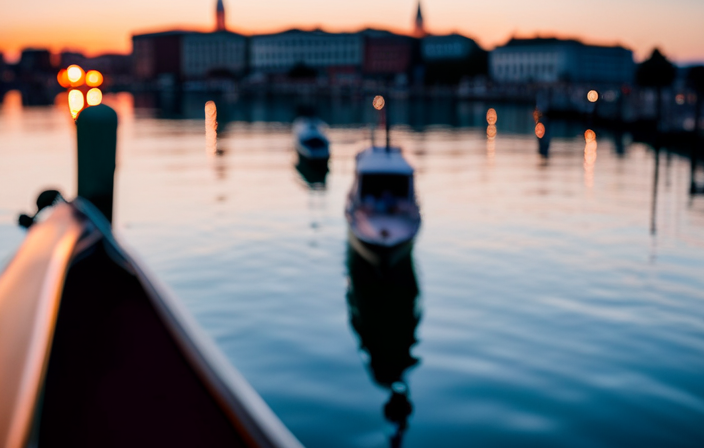
How To Get From Venice To Chioggia Cruise Terminal

How to Contact Someone on a Carnival Cruise Ship
Cruise Ship Gas Mileage
- Categories : Naval architecture & ship design for marine engineers
- Tags : Marine engineering
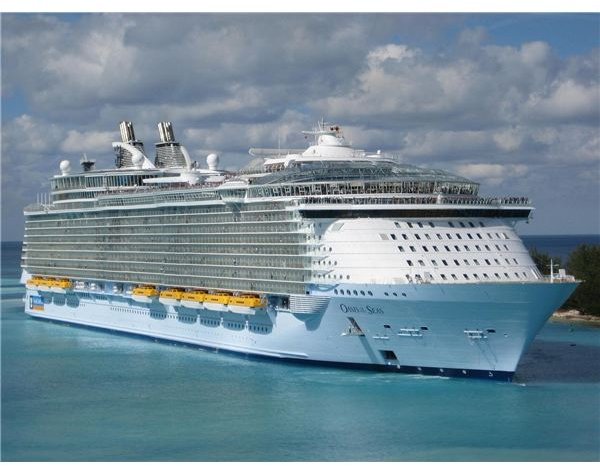
When one pictures a cruise liner, one probably pictures a great behemoth chugging its way across the ocean, transporting thousands of passengers in accommodations at the height of luxury. It would seem like cruise ship gas mileage would be quite low, then. To a degree this is true. However, when some other factors than straight gas mileage, such as gas per mile per person, are taken into account, cruise ships’ fuel efficiency doesn’t look so bad. In fact, as I’ll show later, cruise liners aren’t bad at all when compared to jumbo jets.
Fuel Efficiency for a Large Cruise Ship
Just as with cars, larger cruise ships tend to have lower fuel efficiency, at least in gross terms. To give the reader an idea of the fuel efficiency of large cruise ships, I’d like to use the world’s largest cruise liner as an example. The MS Oasis of the Seas, completed in 2010, has a total length of 361.8 meters, a height of 72 meters above the sea line, and room in its 16 passenger decks for 6,296 passengers. At its cruising speed of 22.6 knots (26 mph), the Oasis of the Seas burns 11361 gallons of fuel each hour. The fuel efficiency, then, is 0.0023 mpg , or 12.08 feet per gallon!
This figure seems very low, especially in comparison with mpg ratings for cars. However, keep in mind that a cruise ship carries many more people than does a Honda Civic. The Oasis of the seas, when fully occupied, gets 14.40 mpg per passenger, or 19.36 mpg per person including the crew. This is still a low figure, but not quite as absurd as the overall miles per gallon number.
Image: Wikimedia Commons - Oasis of the Seas
Small Cruise Ship Fuel Efficiency
It is difficult to find precise mpg figures for smaller cruise ships, but it’s possible to get a rough estimate based on engine outputs. Cruise ships in the Voyager class are about 311 meters in length, but have a tonnage of “just” 138,000 Tons (compare that to the Oasis of the Seas, which comes in with 225,282 gross Tons). The Voyager class boats use diesel engines, which combined have a total output of 75,600 kW. Assuming an efficiency of about 30% means the boat is burning roughly 1.84 gallons of fuel per second, or 6640 gallons per hour. Since the ship’s cruising speed is 23.7 knots, or 27.3 mph, the cruise ship’s fuel efficiency is roughly 0.004 mpg. Since the ship carries 3114 passengers, its gas mileage is 12.79 mpg/passenger, or 17.65 mpg/person including crew. This isn’t too different from the much larger Oasis of the Seas, surprisingly enough.
Cruise Ship Gas Mileage Compared to Jetliner
To put these figures into perspective, consider a typical jetliner. The Boeing 747-400 seats 624, cruises at 567 mph, and has a range of 8357 miles. With a total fuel capacity of 57,285 gallons, the 747-400 has a gas mileage of about 0.15 mpg. Taking passengers into account, the figure is 91 mpg/passenger! A fully loaded jetliner is actually pretty fuel efficient - about the same per person as an SUV. It’s true, then that cruise ships don’t have very good gas mileage. But it helps to put things in perspective: true, the ships burn a gallon of fuel every 50 feet, but they’re moving 5000+ people! Viewed in this light, cruise ships are just a little bit wasteful.
Oasis of the Seas Fact Sheet
Voyager of the Seas Fact Sheet
747-400 Specifications


How Many MPG Does a Cruise Ship Get?
By Robert Palmer

A cruise ship is a vessel that carries passengers on voyages, usually to exotic or well-known destinations. Cruise ships are typically large, luxurious vessels that have a variety of amenities and activities to offer their passengers. But what many people don’t realize is just how much fuel it takes to power and operate these massive ships. So, how many MPG does a cruise ship get?
The answer depends on several factors, including the size of the ship, the type of engine used, and other operational factors. Generally speaking, cruise ships can get between 0.25 and 0.5 MPG (miles per gallon), though some newer vessels may get up to 1 MPG.
This may seem very low compared to standard cars and trucks, but it’s important to note that cruise ships are much larger than other vehicles and require significantly more fuel to operate.
Cruise ships also vary in size and capacity; larger vessels can weigh hundreds of thousands of tons more than smaller ones. Additionally, some ships are designed with multiple engines while others are outfitted with single engines or hybrid power sources. All of these factors can affect the overall MPG rating of a given vessel.
Cruise ship operators often employ several methods to reduce their fuel consumption rate and increase their MPG rating. For instance, they may use their engines more efficiently by optimizing speed and avoiding unnecessary maneuvers or changes in direction. They may also install advanced engine systems that reduce emissions or employ other energy-saving measures such as solar panels for electricity generation.
In addition to these measures, some cruise lines have begun using alternative fuels such as biodiesel or natural gas in place of traditional fossil fuels like diesel or gasoline. This helps reduce emissions while still providing adequate power for the vessel’s needs.
Conclusion:
Overall, it is difficult to determine exactly how many MPG a single cruise ship gets due to the wide variety of sizes and types of vessels in operation today. However, most cruise ships get between 0.5 MPG on average (with some newer models achieving up to 1 MPG) thanks to various fuel-saving techniques employed by operators and engine upgrades.
10 Related Question Answers Found
How much is a cruise ship per person, how many gallons of fuel does a cruise ship use, how many gallons of fuel does a cruise ship carry, how much does a cruise ship make per trip, how much is a used cruise ship, how much money does a cruise ship make per day, how much does a cruise ship make per cruise, how much does a cruise ship weight fully loaded, how much is a drink on a cruise ship, how many miles per gallon does a cruise ship get, backpacking - budget travel - business travel - cruise ship - vacation - tourism - resort - cruise - road trip - destination wedding - tourist destination - best places, london - madrid - paris - prague - dubai - barcelona - rome.
© 2024 LuxuryTraveldiva

Video: How Much Fuel Does A Cruise Ship Consume?
Do you know that a few hours of fuel consumed by a ship is equivalent to that consumed by a car in its lifetime?
So how much fuel does a Cruise Ship consume in a day?
A ship’s fuel consumption depends on several factors, such as Ship Size, hull form, carrying capacity, Vessel Route, Engine Characteristics, Sailing Speed, etc.
A large cruise ship, over 300 meters in size, might consume up to 250 tons of fuel daily, equivalent to over 80,000 gallons of fuel.
That means the cruise ship is spending approximately – 130,000 US $/ day on low-grade fuel, and if it uses Marine Gas oil, which is a cleaner fuel, it will cost a ship whopping ~US $ 300,000/ day.
The figures at 85% and above load go as high as 235 to 250 MT of fuel per day.
The fuel consumption for such ships is reduced to 150MT when operating in the eco speed range, also called slow steaming.
Whereas moderately sized cruises, varying between 150 to 250 meters, the fuel usage goes down fast. This takes into account their short voyages as well as shorter port stays. These typical sizes range between 140 to 180 MT of their 85% and above-rated loads of fuel consumption.
The declining trend continues for the passenger capacity and the size of cruises. It reflects that smaller passenger carriers typically use 100 to 120 MT of fuel.
As vessels shrink in size, so does their fuel consumption. In general, a more massive object requires more power to get moving. That power comes from fuel.
The highest consumptions go into the maintenance of 5- and 7-star facilities onboard for the passengers.
Cruise ships consume much more fuel than the average cargo vessel. However, this is an exception to the large container ships with higher consumption limits. Therefore, one must understand how much fuel a cruise ship uses and why it is relatively high.
Modern cruise ships use LNG propulsion to eliminate the demerits of diesel fuel. The storage of LNG and its usage parameters differ from that of any other available fuels. Its higher calorific value also dramatically affects the fuel efficiency of the engines.
The changing market is shifting fast towards LNG sources for propulsion to curb harmful emissions from ships.
However, the supply of LNG fuel and its increase in cost due to the Russia-Ukraine war has become a challenge for ship operators.
How much fuel does your ship or ride uses daily? Let us know in the comments.
Disclaimer: The authors’ views expressed in this article do not necessarily reflect the views of Marine Insight. Data and charts, if used in the article, have been sourced from available information and have not been authenticated by any statutory authority. The author and Marine Insight do not claim it to be accurate nor accept any responsibility for the same. The views constitute only the opinions and do not constitute any guidelines or recommendations on any course of action to be followed by the reader.
The article or images cannot be reproduced, copied, shared or used in any form without the permission of the author and Marine Insight.

About Author
Zahra is an alumna of Miranda House, University of Delhi. She is an avid writer, possessing immaculate research and editing skills. Author of several academic papers, she has also worked as a freelance writer, producing many technical, creative and marketing pieces. A true aesthete at heart, she loves books a little more than anything else.
Read More Articles By This Author >
Disclaimer : The information contained in this website is for general information purposes only. While we endeavour to keep the information up to date and correct, we make no representations or warranties of any kind, express or implied, about the completeness, accuracy, reliability, suitability or availability with respect to the website or the information, products, services, or related graphics contained on the website for any purpose. Any reliance you place on such information is therefore strictly at your own risk.
In no event will we be liable for any loss or damage including without limitation, indirect or consequential loss or damage, or any loss or damage whatsoever arising from loss of data or profits arising out of, or in connection with, the use of this website.
Do you have info to share with us ? Suggest a correction
Related Articles
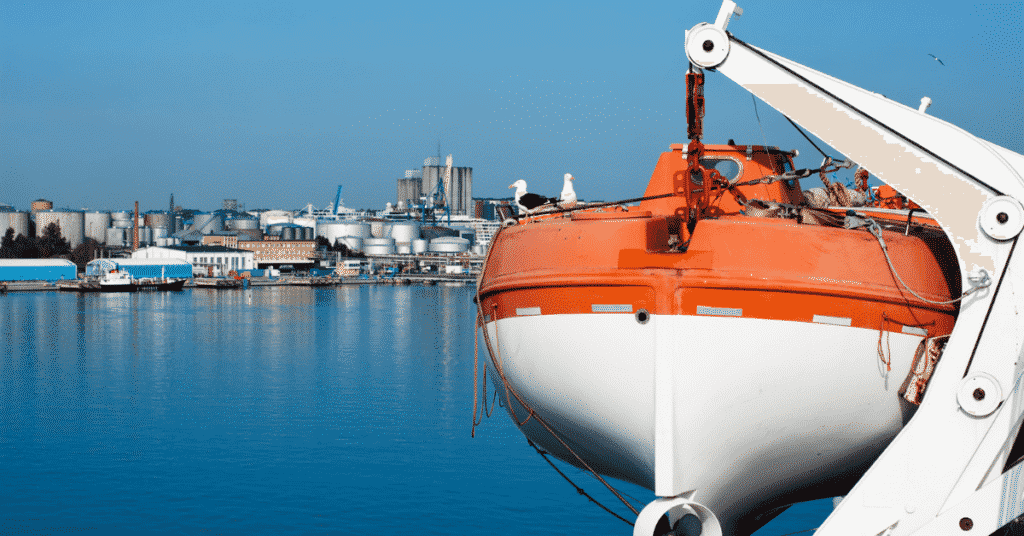
Raw Video: Ship’s Lifeboat Drill Gone Terribly Wrong
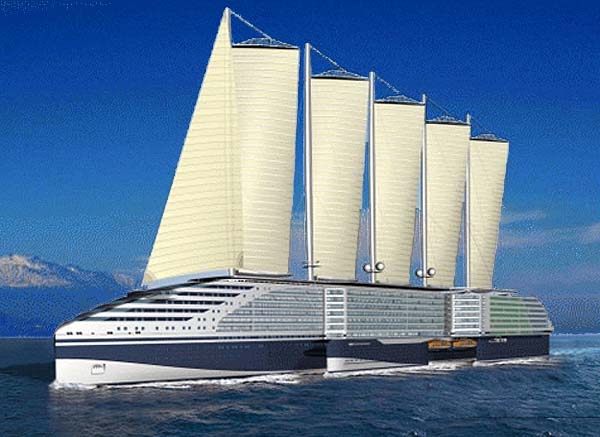
Video of the Ultimate Eco-friendly Cruise Ship of the Future by STX Europe

Marine Insight Launches “Know the Sea” Campaign
Daily maritime news, straight to your inbox.
Sign Up To Get Daily Newsletters
Join over 60k+ people who read our daily newsletters
By subscribing, you agree to our Privacy Policy and may receive occasional deal communications; you can unsubscribe anytime.
BE THE FIRST TO COMMENT
Leave a reply.
Your email address will not be published. Required fields are marked *
Subscribe to Marine Insight Daily Newsletter
" * " indicates required fields
Marine Engineering
Marine Engine Air Compressor Marine Boiler Oily Water Separator Marine Electrical Ship Generator Ship Stabilizer
Nautical Science
Mooring Bridge Watchkeeping Ship Manoeuvring Nautical Charts Anchoring Nautical Equipment Shipboard Guidelines
Explore
Free Maritime eBooks Premium Maritime eBooks Marine Safety Financial Planning Marine Careers Maritime Law Ship Dry Dock
Shipping News Maritime Reports Videos Maritime Piracy Offshore Safety Of Life At Sea (SOLAS) MARPOL
WAIT! Did You Download 13 FREE Maritime eBooks?
Sign-up and download instantly!
We respect your privacy and take protecting it very seriously. No spam!
WAIT! Did You Download 12 FREE Maritime eBooks?
Cruise Ship Miles Per Gallon – The Importance of Cruise Ship MPG for Environmental Sustainability
- 0.1.1 In perspective, a typical car gets around 20 miles per gallon, while an airplane gets around 50 miles per gallon. This means that, on average, a cruise ship is less fuel-efficient than cars and airplanes.
- 0.1.2 In addition, cruise lines are also implementing eco-friendly practices like recycling, reducing waste, and conserving water to minimize their environmental impact.
- 0.1.3 Cruise Ship MPG: The Basics
- 0.1.4 Improving Fuel Efficiency
- 0.1.5 Cleaner-Burning Fuels
- 0.1.6 Eco-Friendly Practices
- 0.1.7 Being Mindful as Travelers
- 0.2 Conclusion
Cruise Ship Miles Per Gallon – Introduction
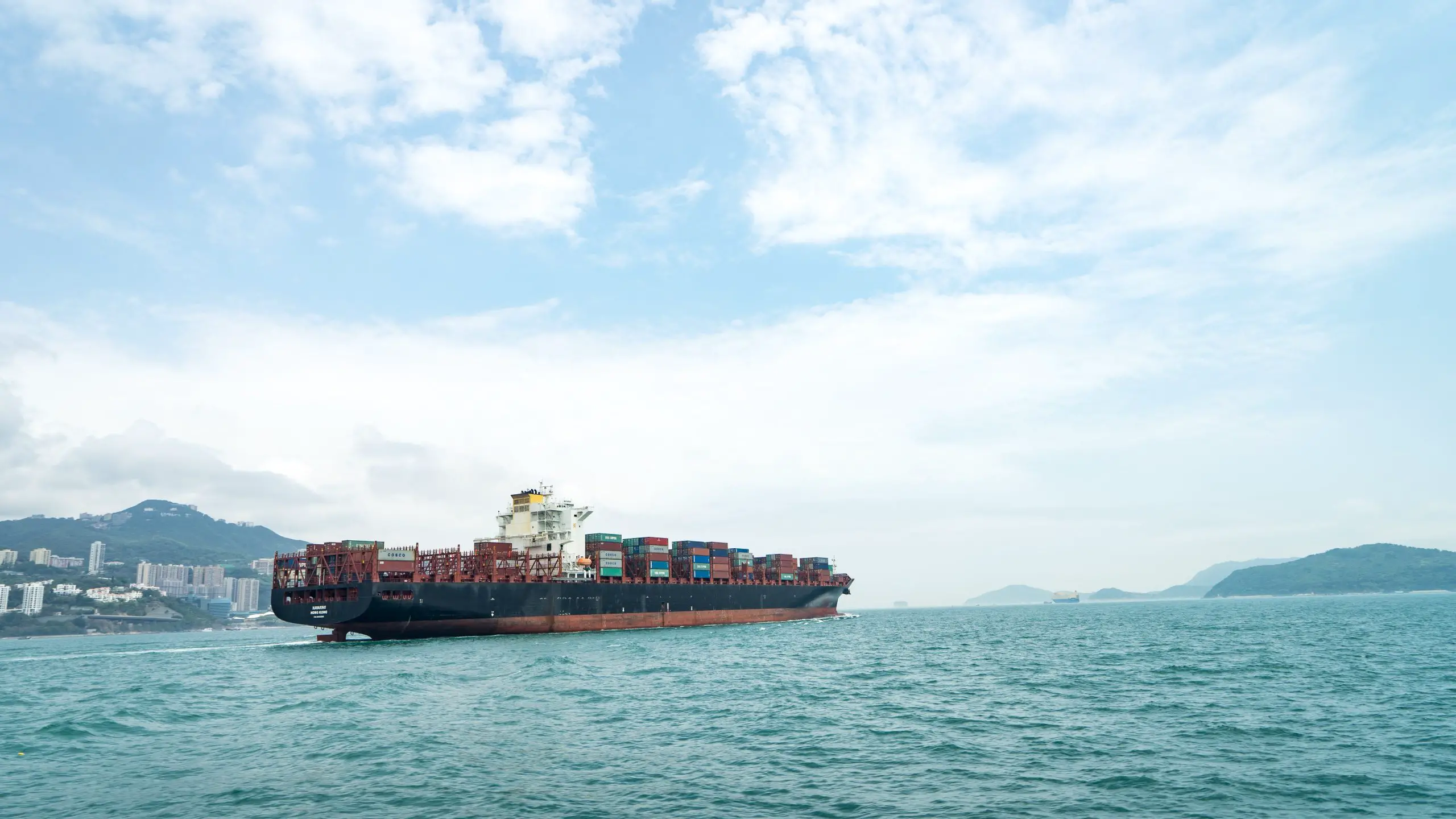
Cruise ship miles per gallon is a topic of great interest for those mindful of their carbon footprint and ships’ impact on the environment. In simple terms, miles per gallon (MPG) measures how efficiently a ship uses fuel to travel a certain distance.
Cruise ships are enormous floating cities that require a lot of energy to operate. They rely on massive engines that consume large amounts of fuel to get the ship moving and maintain its course. A ship’s fuel is directly proportional to its size, weight, and speed.
The average MPG of a cruise ship ranges from 25 to 40 gallons of fuel per mile, depending on the ship’s size, age, and engine efficiency. Newer ships tend to have more efficient engines, meaning they use less fuel and emit fewer pollutants into the environment than older ships.
How Much Fuel Does a Cruise Ship Use? https://m.youtube.com/watch?v=ZBU_qPG5-ZY&pp=ygUcQ3J1aXNlIFNoaXAgTWlsZXMgUGVyIEdhbGxvbg%3D%3D
In perspective, a typical car gets around 20 miles per gallon, while an airplane gets around 50 miles per gallon. This means that, on average, a cruise ship is less fuel-efficient than cars and airplanes.
The good news is that cruise lines are improving their fuel efficiency and reducing their carbon footprint. Many are investing in new technologies like hybrid engines, solar panels, and wind turbines to help power their ships. Others use cleaner-burning fuels like liquefied natural gas (LNG) and biofuels.
In addition, cruise lines are also implementing eco-friendly practices like recycling, reducing waste, and conserving water to minimize their environmental impact.
While cruise ship MPG may be lower than we would like, the industry is making strides to reduce its environmental impact and promote sustainability. As travelers, we can also do our part by choosing eco-friendly cruise lines and practices and being mindful of our environmental impact while on board. Cruise Ship MPG: A Closer Look
Have you ever wondered about the fuel efficiency of a cruise ship? It’s not something we tend to think about when we’re on vacation, but it’s an important factor to consider in today’s world, where climate change is a growing concern. In this blog post, we’ll look at cruise ship MPG and the steps the industry takes to become more eco-friendly.
Cruise Ship MPG: The Basics
As mentioned earlier, the average MPG of a cruise ship ranges from 25 to 40 gallons of fuel per mile. This may sound like a lot, especially when compared to cars and airplanes, but it’s important to remember that cruise ships are much larger and carry more passengers and cargo than any other mode of transportation. This means that they require more energy to move and operate.
However, newer ships are more fuel-efficient due to their advanced technologies and engines. For example, Royal Caribbean’s Symphony of the Seas, one of the world’s largest cruise ships, has an improved hull design and energy-efficient systems that help reduce its fuel consumption by up to 25% compared to its sister ships.
Improving Fuel Efficiency
Cruise lines are investing heavily in new technologies and practices to improve fuel efficiency and reduce environmental impact. One of the most popular solutions is hybrid engines which combine electric batteries with traditional diesel engines. The batteries provide power during low-speed operations like maneuvering in port or sailing through sensitive areas where emissions must be minimized.
Solar panels and wind turbines are another technology many cruise lines incorporate into their ships’ designs. These sustainable energy sources can help supplement electricity needs while reducing carbon emissions.
Cleaner-Burning Fuels
Many cruise lines also turn towards cleaner-burning fuels like liquefied natural gas (LNG) or biofuels. LNG produces fewer emissions than traditional diesel and can help reduce pollutants like sulfur oxide by up to 99%. On the other hand, biofuels are made from renewable sources like algae or recycled cooking oil and can significantly reduce carbon emissions.
Eco-Friendly Practices
It’s not just about the technology and fuels used on board – eco-friendly practices significantly reduce cruise ship MPG and promote sustainability. Many cruise lines are implementing waste reduction and recycling programs to minimize environmental impact. For example, Royal Caribbean recycles aluminum cans, plastic bottles, cardboard, paper products, and glass on their ships.
Water conservation is also a big issue for cruise ships. Installing low-flow showerheads, faucets, and toilets can help reduce water consumption by up to 20%. In addition, many cruise lines use reverse osmosis systems to desalinate seawater instead of taking more freshwater from ports.
Being Mindful as Travelers
As travelers, we have a role in promoting sustainability on cruise ships. Choosing eco-friendly cruise lines like Norwegian Cruise Line or AIDA Cruises can make a big difference. These companies have made strong commitments to reduce their environmental impact and are actively working towards becoming more sustainable.
We can also be mindful of our environmental impact while on board. Simple actions like turning off lights and electronics when we leave our cabins or using water sparingly can significantly reduce overall energy use.
Cruise ship MPG may be lower than we would like, but the industry is making strides toward becoming more eco-friendly and sustainable. The future of cruising looks promising for both passengers and the planet through innovation in technology and eco-friendly practices. So let’s choose wisely when booking our next adventure at sea! Being Mindful of Landby visiting protected areas or wildlife sanctuaries that aim to preserve ecosystems and endangered species. We can also make a difference by choosing accommodations that have implemented eco-friendly practices, such as using renewable energy sources or composting food waste.

Ultimately, being a mindful traveler is about making conscious choices that promote sustainability and minimize harm to both people and the planet. Whether on a cruise ship or exploring new destinations on land, let’s keep these principles in mind and use our role as travelers to contribute positively towards a more sustainable future.
But our responsibility as mindful travelers continues once we step off the ship. How we choose to travel on land can also have a significant impact on the environment and local communities.
When exploring new destinations, let’s be mindful of our activities and their potential consequences. Opting for eco-friendly tours or local experiences that support the community can reduce our impact while giving back to those around us.
We can also be conscious of our waste and strive to reduce it as much as possible. Bringing reusable water bottles or bags, avoiding single-use plastics, and properly disposing trash can all go a long way in keeping our destinations clean and preserving their natural beauty.
Supporting Sustainable Tourism
As responsible travelers, we also have the power to support sustainable tourism practices. This means supporting local businesses and tour operators, prioritizing sustainability, and minimizing harm to the environment and local communities.
More Links :
Is Skims sustainable? Here’s what you need to know in 2023: https://ecosustainity.com/is-skims-sustainable/
What are the Alternatives to Lint Rollers? Here’s a list in 2023: https://ecosustainity.com/what-are-the-alternatives-to-lint-rollers/
Related Posts

pokemon go sustainability week collection challenge gloom (2023)

OGL Move Sustainability: Legit or Greenwashed?
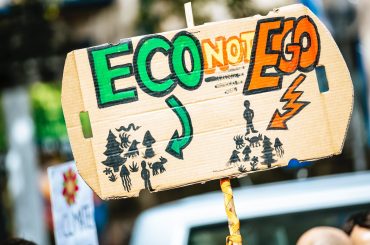
What is Baker Creek Seeds racist? Here’s what you need to know in 2023

Is it Bad luck to kill a Grasshopper? Here’s what we think in 2023
Write a comment cancel reply.
Save my name, email, and website in this browser for the next time I comment.
Type above and press Enter to search. Press Esc to cancel.
Princess Cruises ships ranked by size from biggest to smallest — the complete list

Are you looking for the most venue-packed, resort-like Princess Cruises ships at sea? If so, you'll want to get on one of the biggest Princess cruise ships.
The biggest Princess cruise ships are, by their very nature, the Princess ships with the most onboard restaurants, bars and showrooms, as well as the most sprawling decktop pool and lounge areas. The biggest Princess ships have the biggest casinos and spas among ships in the Princess fleet and the most cabins and suites — as well as the most variation in cabin and suite types.
With room for 4,000 passengers or more, the biggest Princess ships are truly large resorts of the sort you find at the biggest vacation destination on land. If you're in the "bigger is better" camp when it comes to a resort experience, these are the Princess ships for you.
For more cruise news, guides and tips, sign up for TPG's cruise newsletter .
Still, Princess doesn't just operate large vessels. The Los Angeles-based cruise giant — the fifth largest cruise line in the world — also has several relatively small cruise ships in its fleet that carry just 2,000 or 3,000 people and have a more intimate feel. In some cases, these vessels are nearly 50% smaller than the size of Princess Cruises' biggest ships. These smaller ships, notably, have less deck-top pool space and fewer interior venues than the biggest Princess cruise ships. However, with fewer people on board, that's not necessarily a bad thing.
The smallest Princess cruise ships are best for vacationers who like a more intimate, less crowded resort experience.
Related: The 4 types of Princess Cruises ships, explained
To make sure you end up on the right Princess ship for you, it pays to study which Princess ships are the biggest and which are the smallest before booking.
Here, every Princess ship currently in operation is ranked from biggest to smallest.
1. Sun Princess
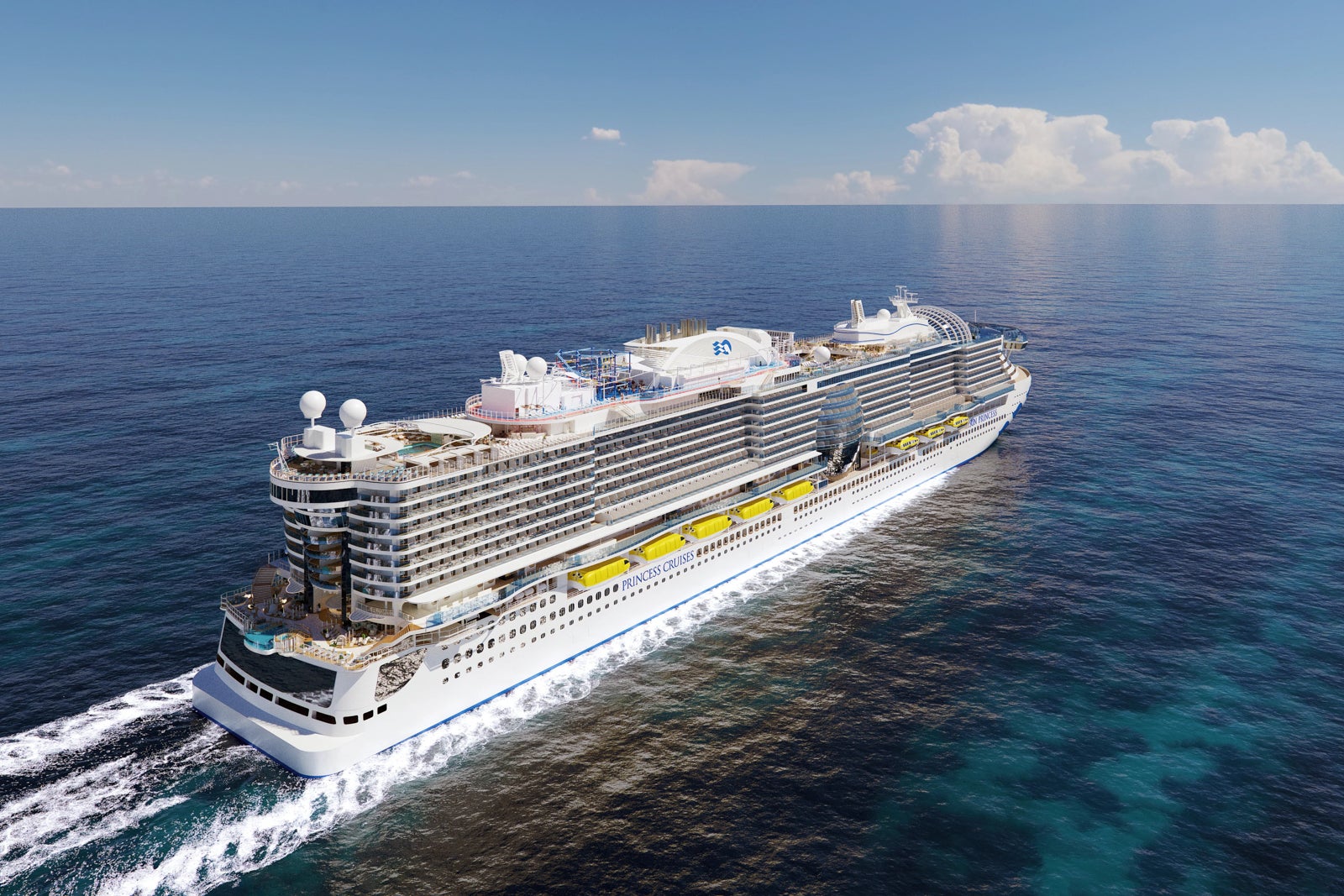
Maiden voyage: 2024 Size: 177,882 gross tons Passenger capacity: 4,300
2. Discovery Princess
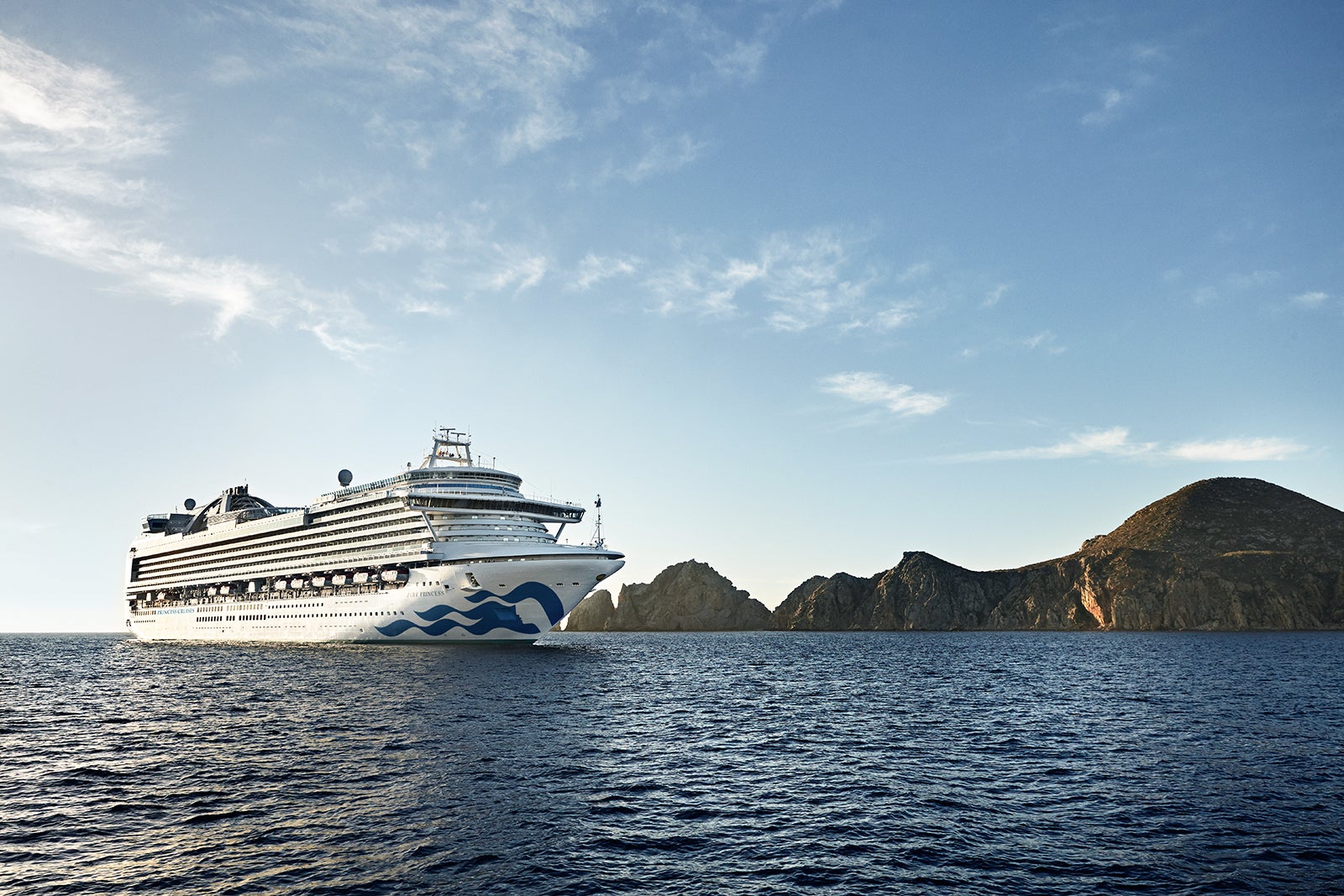
Maiden voyage: 2022 Size: 145,000 gross tons Passenger capacity : 3,660
3 (tied). Enchanted Princess
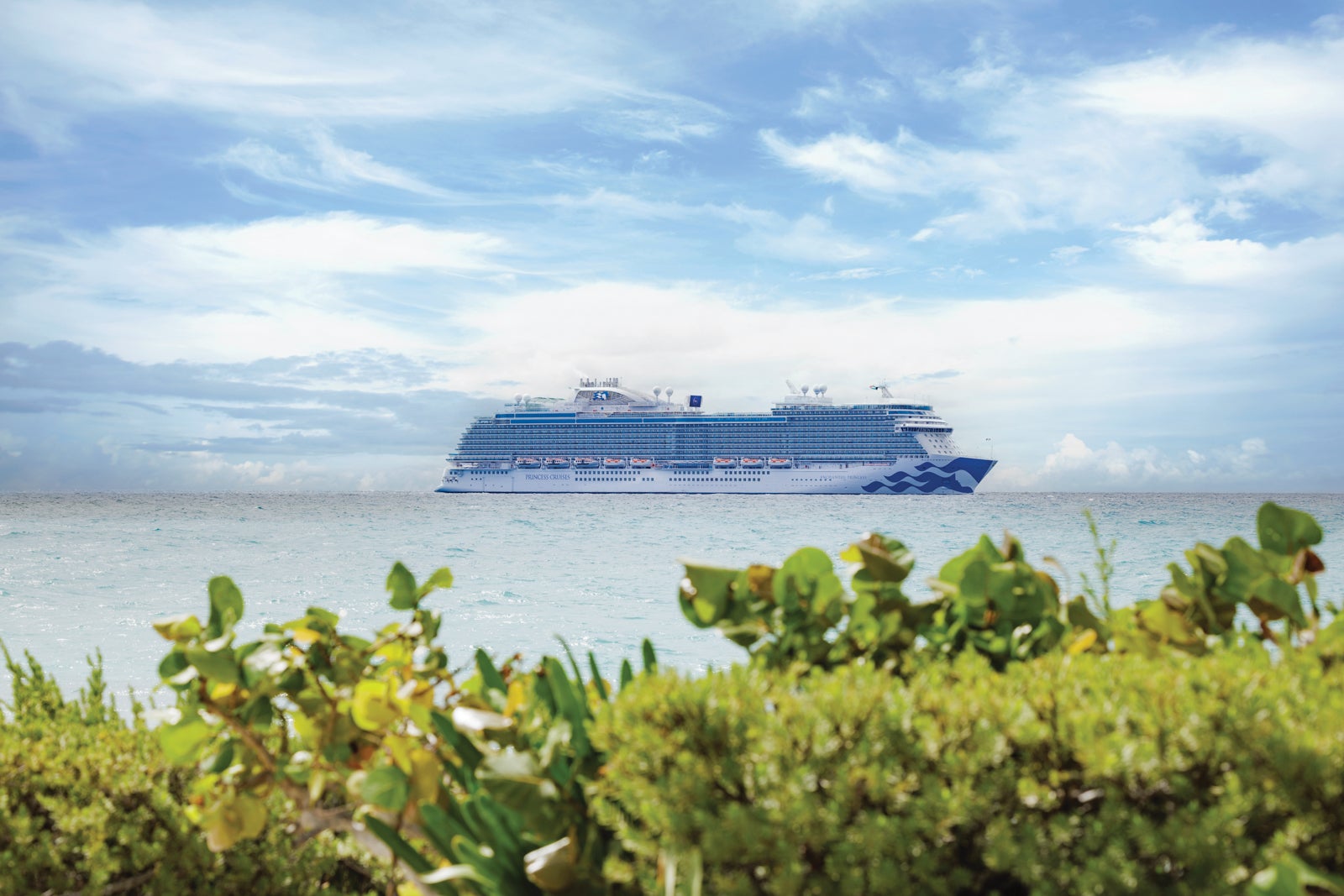
Maiden voyage: 2020 Size: 144,650 gross tons Passenger capacity : 3,660
3 (tied). Sky Princess
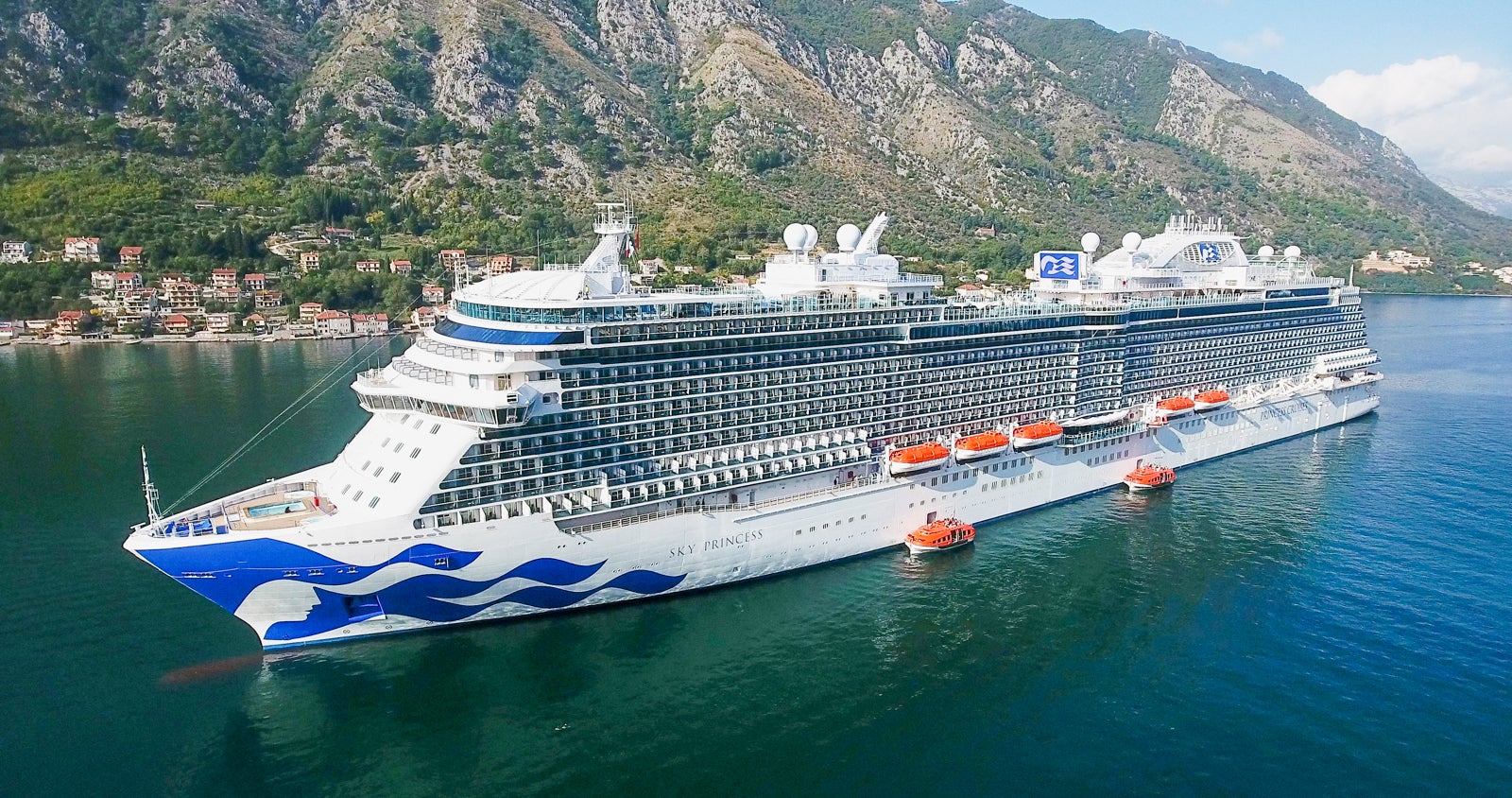
Maiden voyage: 2019 Size: 144,650 gross tons Passenger capacity : 3,660
5. Majestic Princess
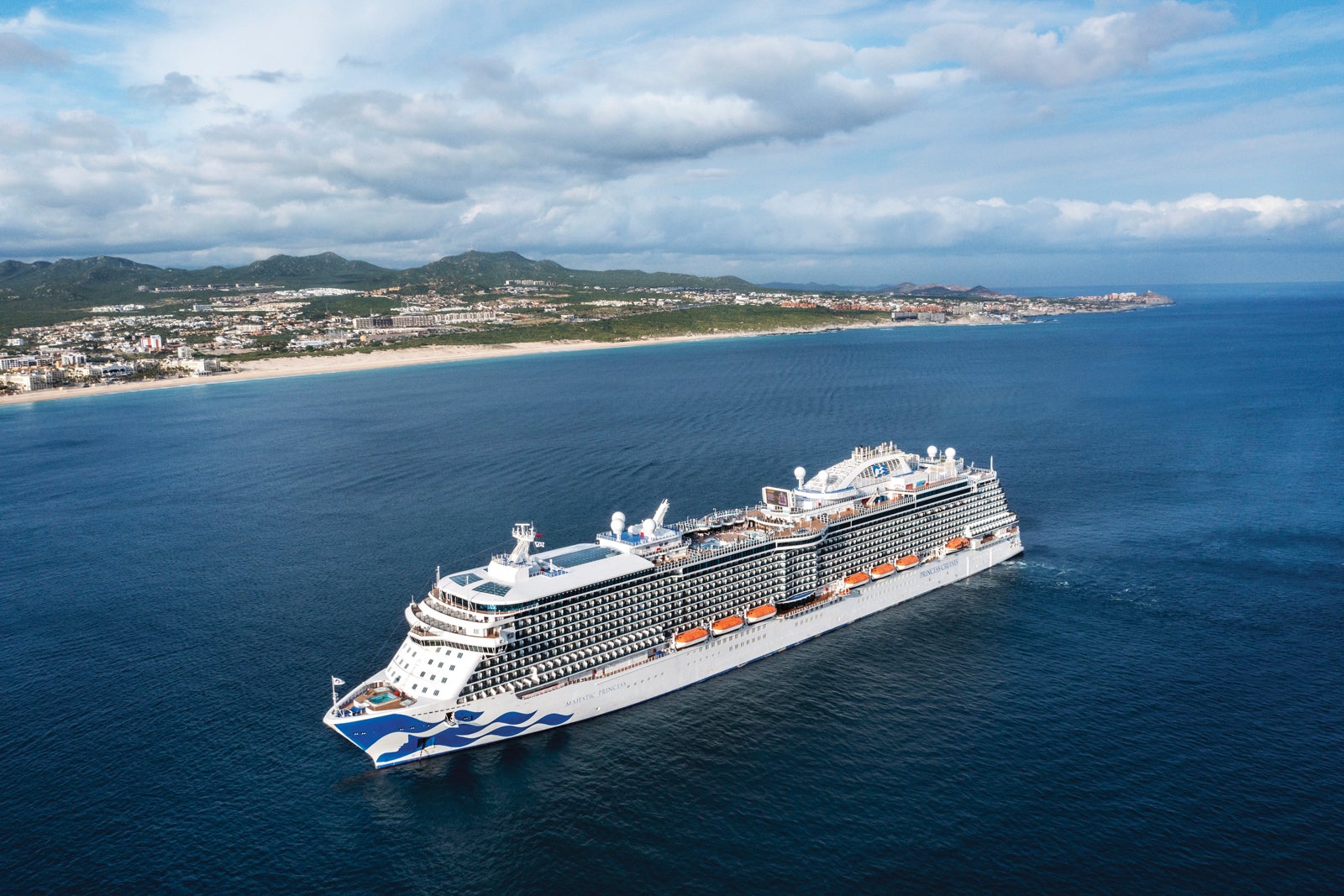
Maiden voyage: 2017 Size: 143,700 gross tons Passenger capacity : 3,560
6 (tied). Regal Princess
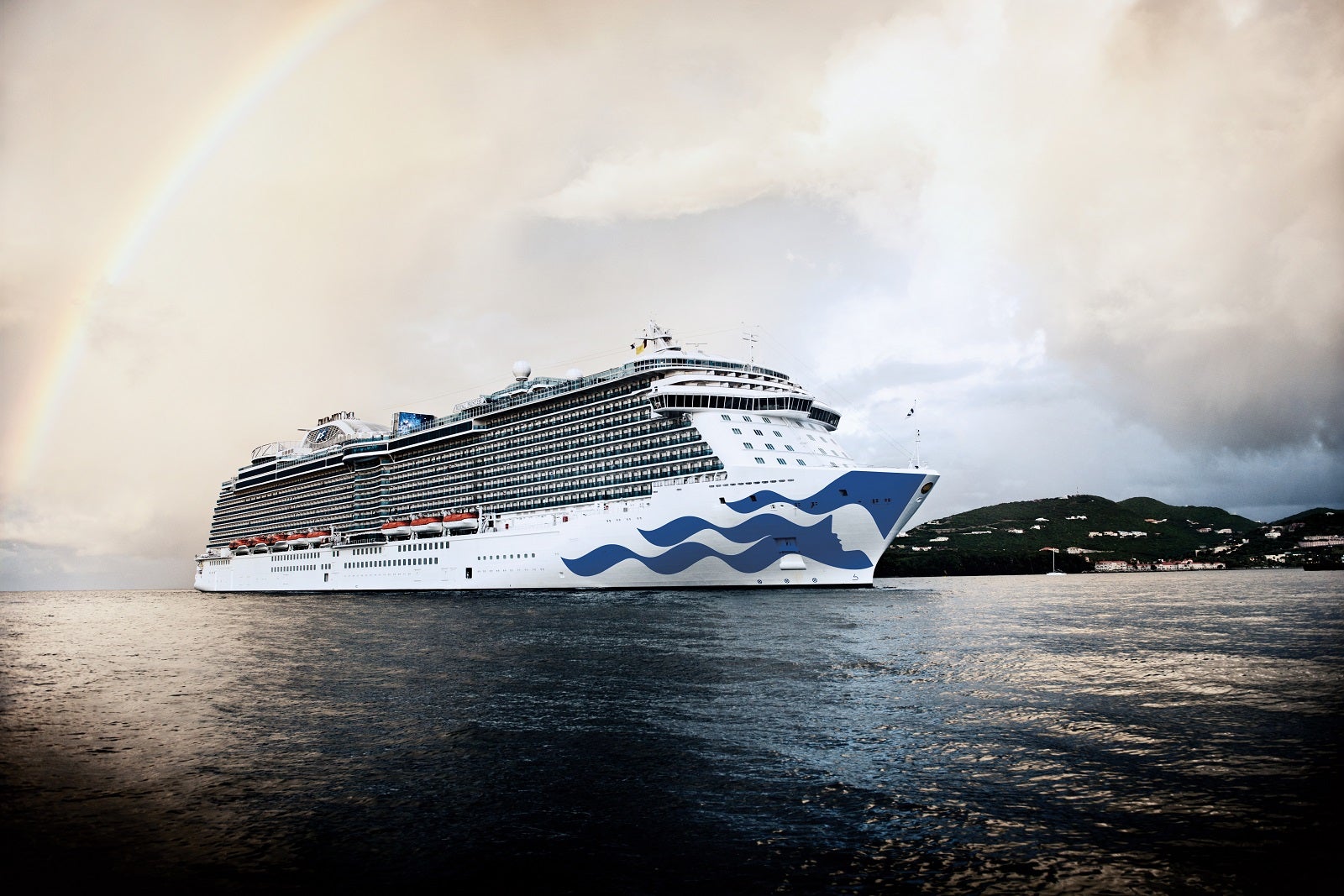
Maiden voyage: 2014 Size: 142,229 gross tons Passenger capacity : 3,560
6 (tied). Royal Princess
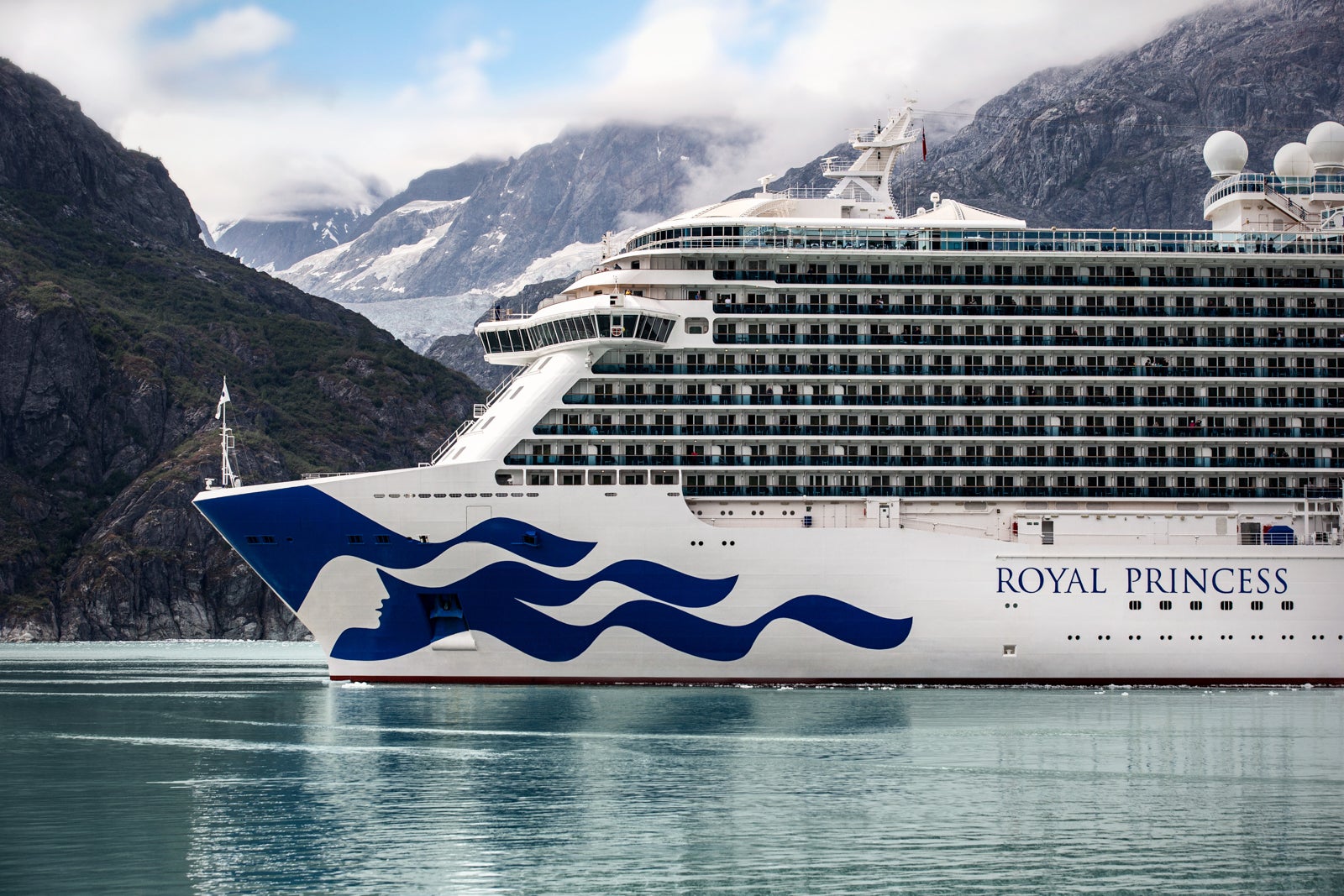
Maiden voyage: 2013 Size: 142,229 gross tons Passenger capacity : 3,560
8 (tied). Ruby Princess
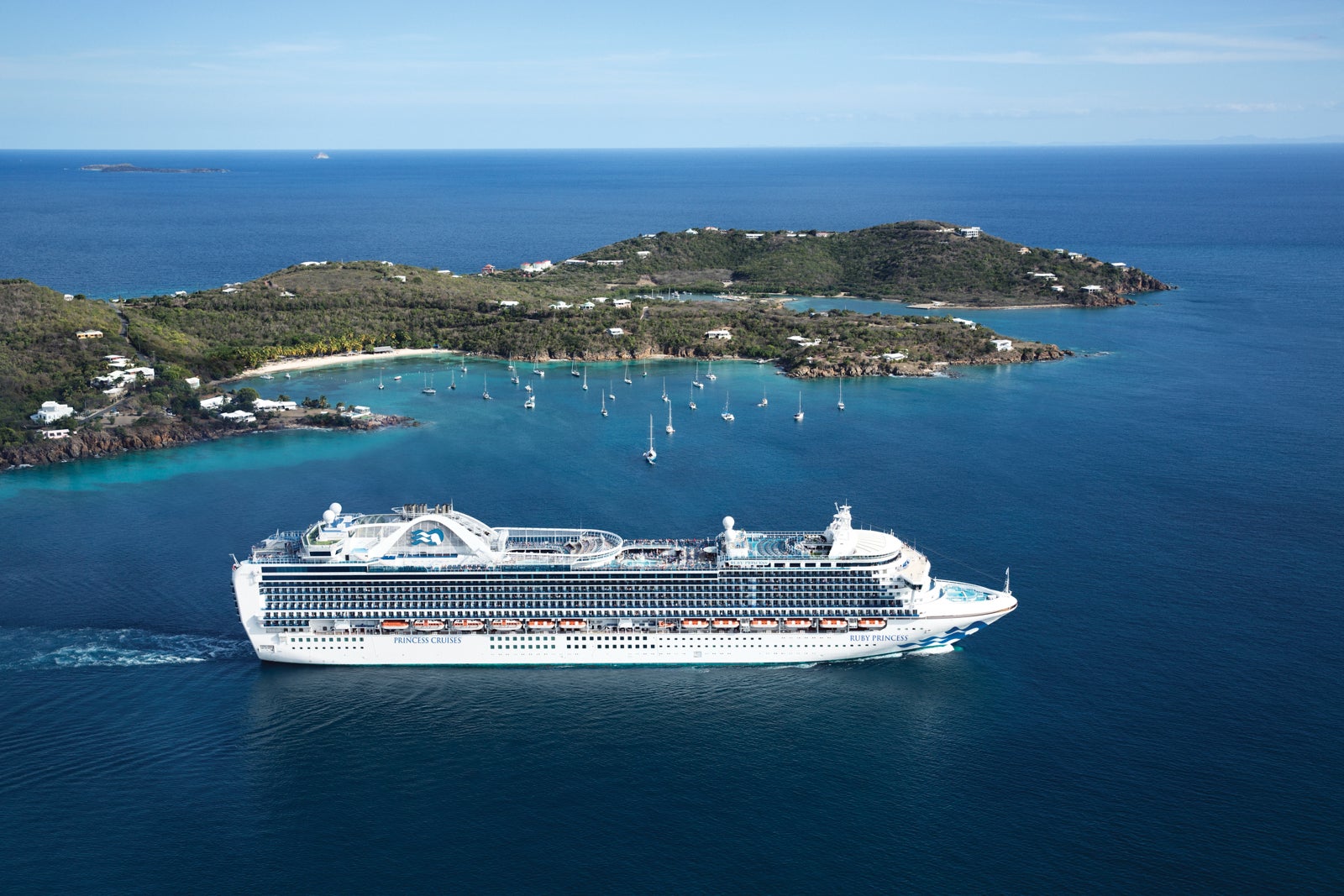
Maiden voyage: 2008 Size: 113,561 gross tons Passenger capacity : 3,080
8 (tied). Emerald Princess
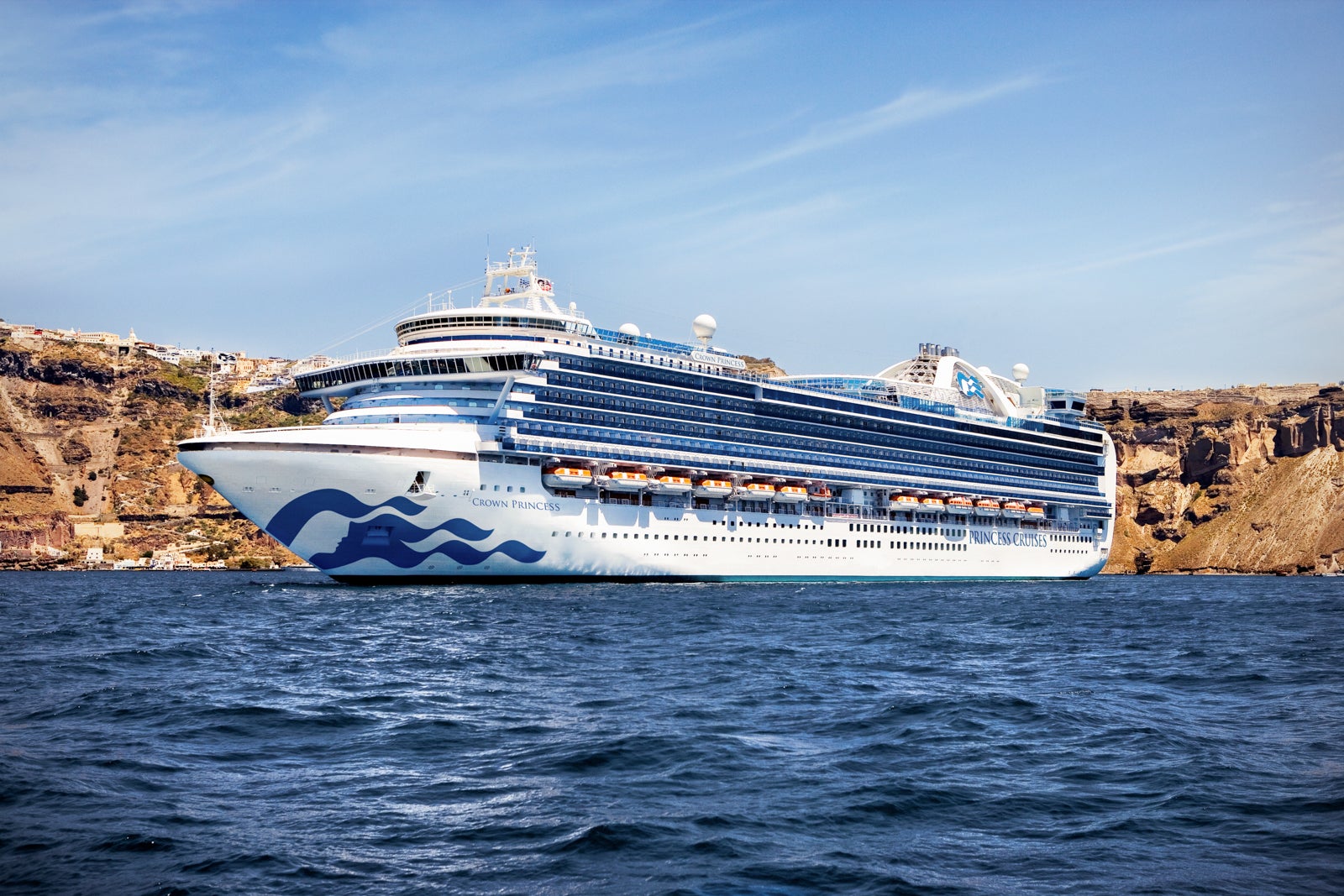
Maiden voyage: 2007 Size: 113,561 gross tons Passenger capacity : 3,080
8 (tied). Crown Princess
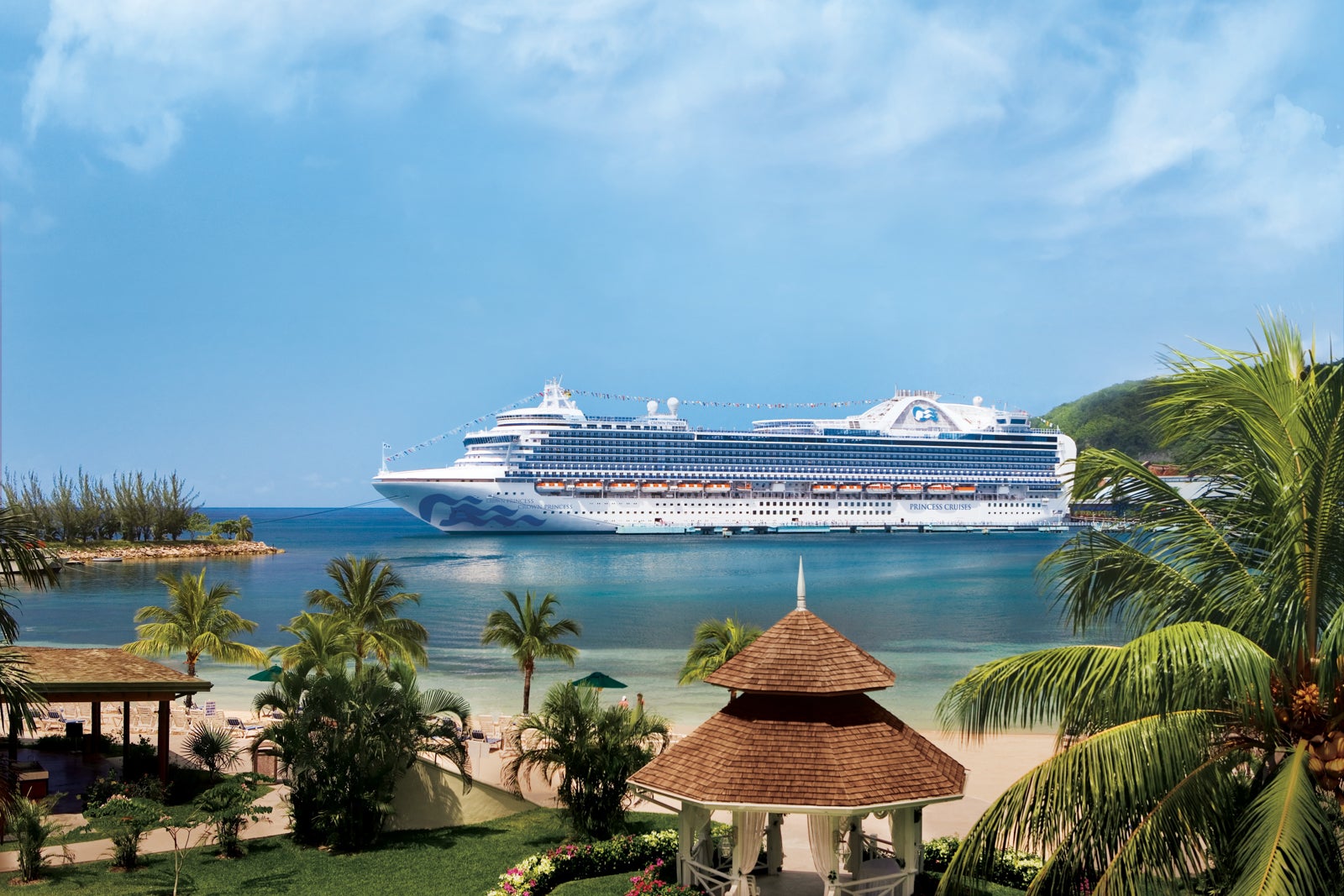
Maiden voyage: 2006 Size: 113,561 gross tons Passenger capacity : 3,080
11 (tied). Sapphire Princess
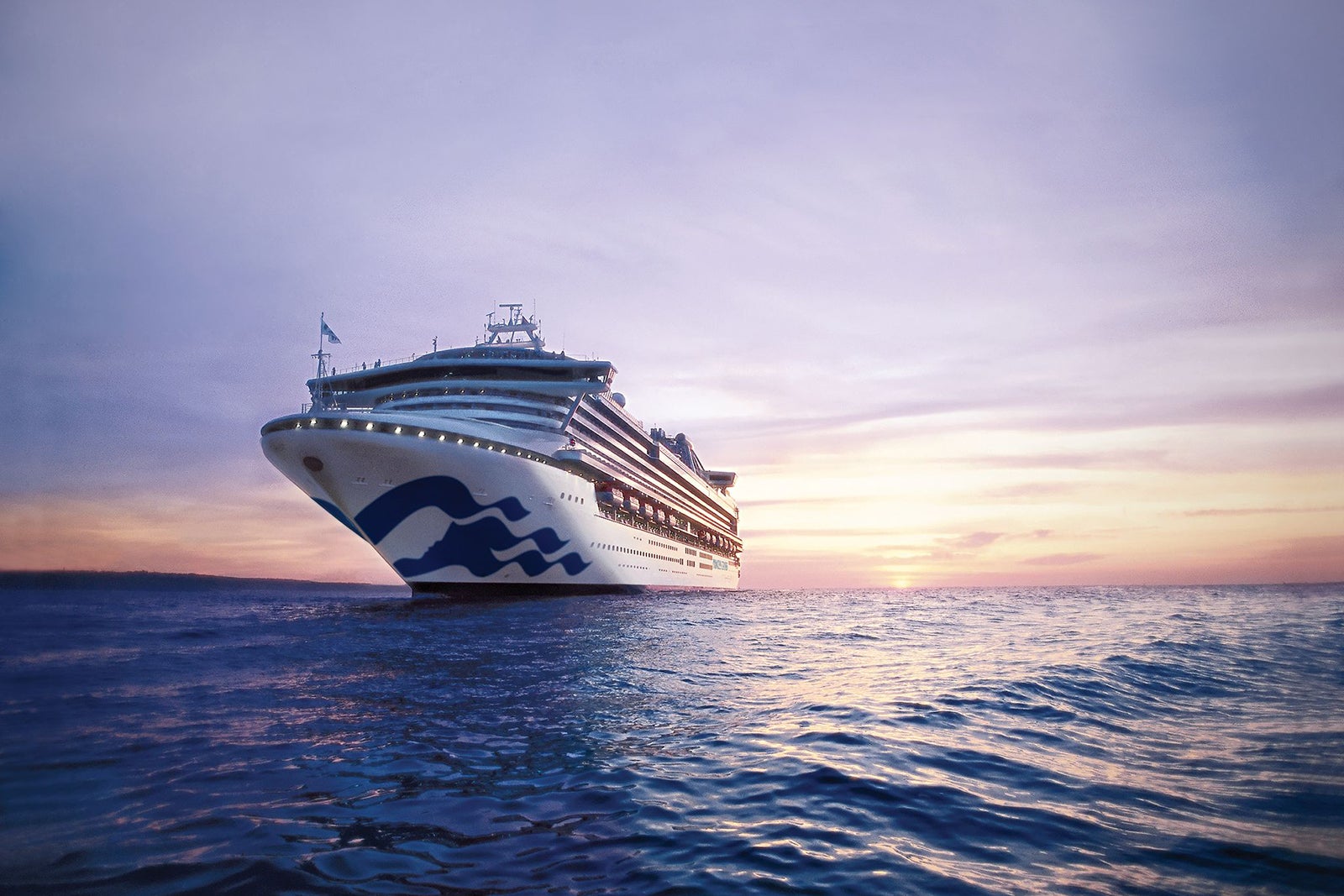
Maiden voyage: 2004 Size: 115,875 gross tons Passenger capacity : 2,670
11 (tied). Diamond Princess
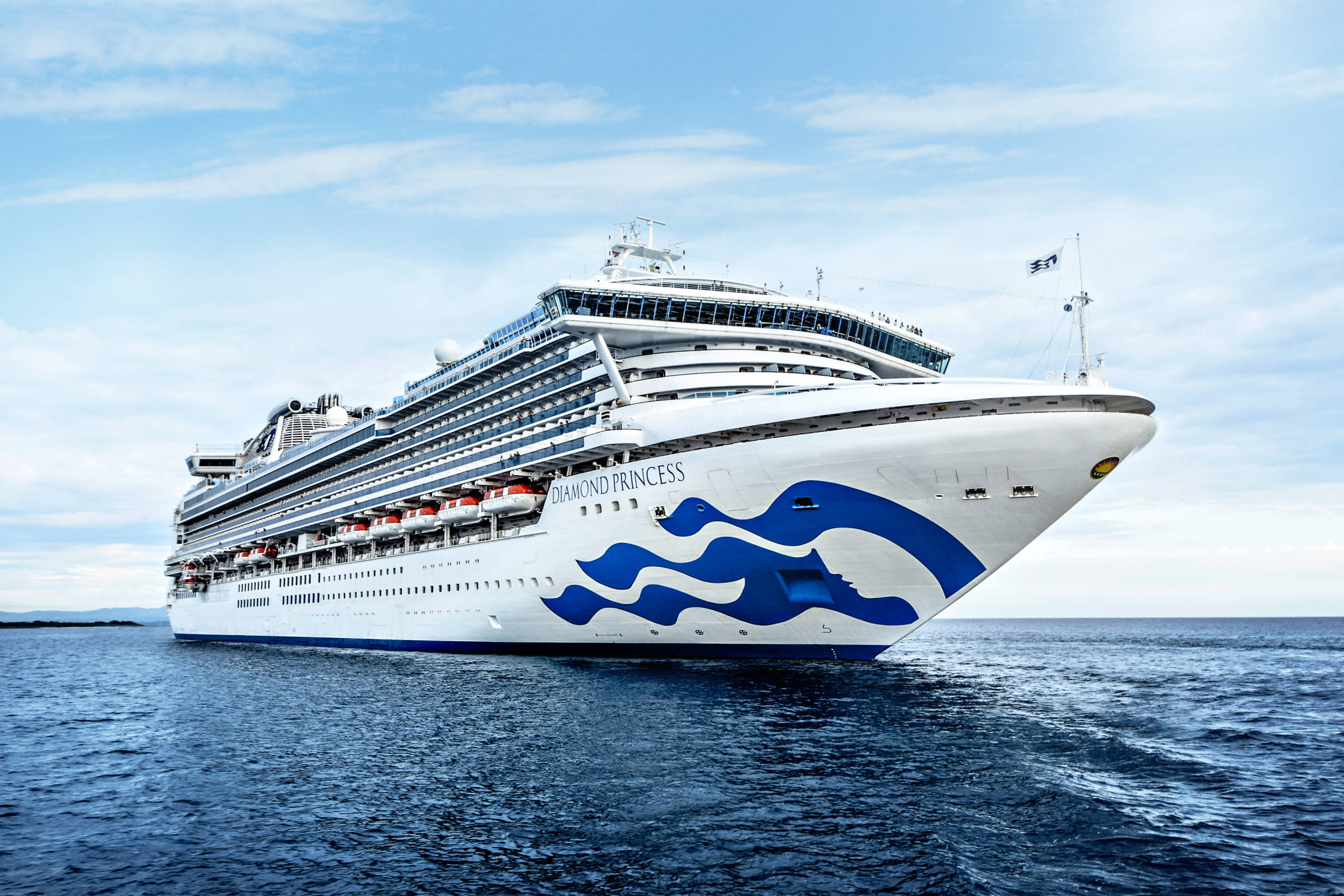
13. Caribbean Princess
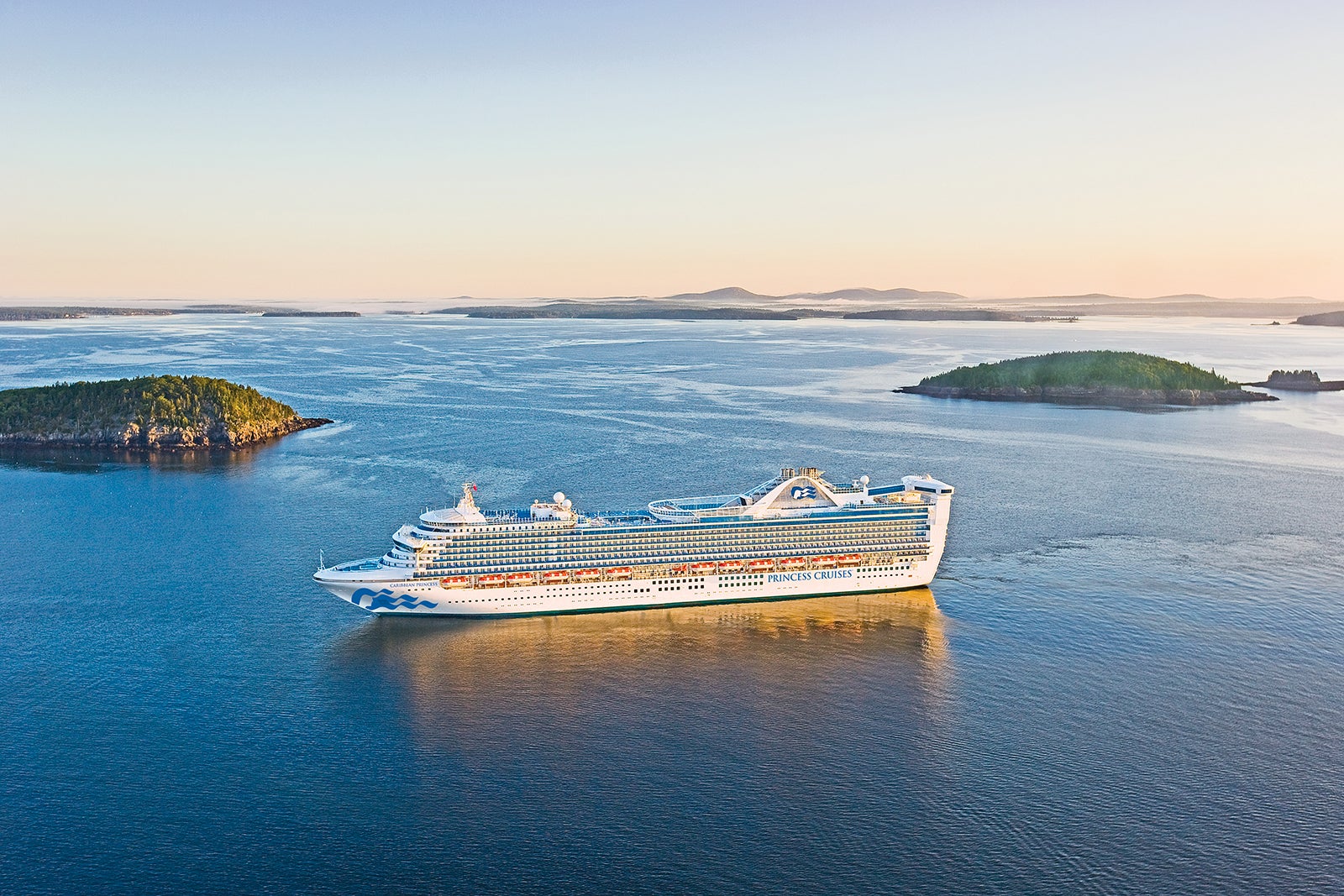
Maiden voyage: 2004 Size: 112,894 gross tons Passenger capacity : 3,149
14. Grand Princess
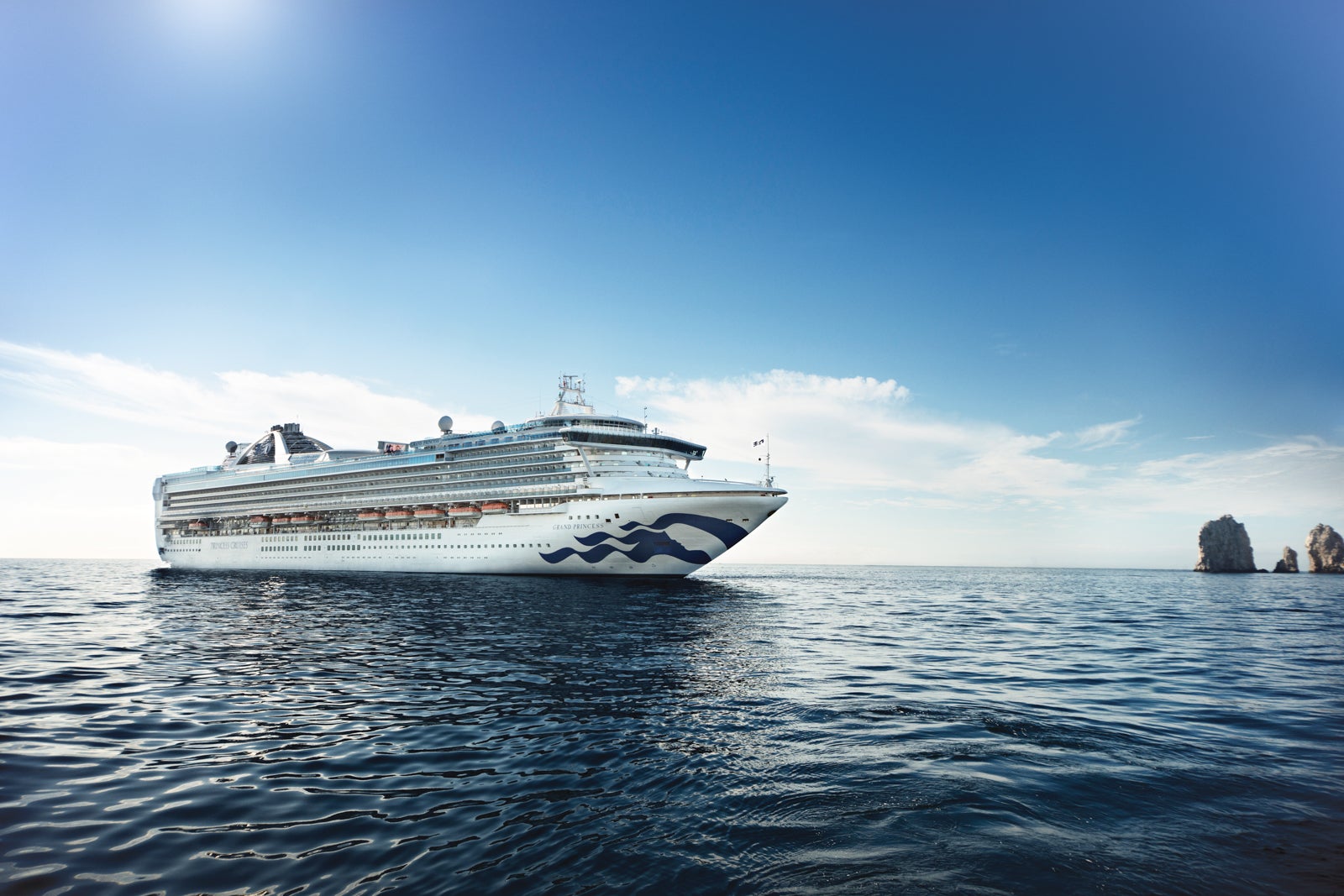
Maiden voyage: 1998 Size: 107,517 gross tons Passenger capacity : 2,600
15. Island Princess
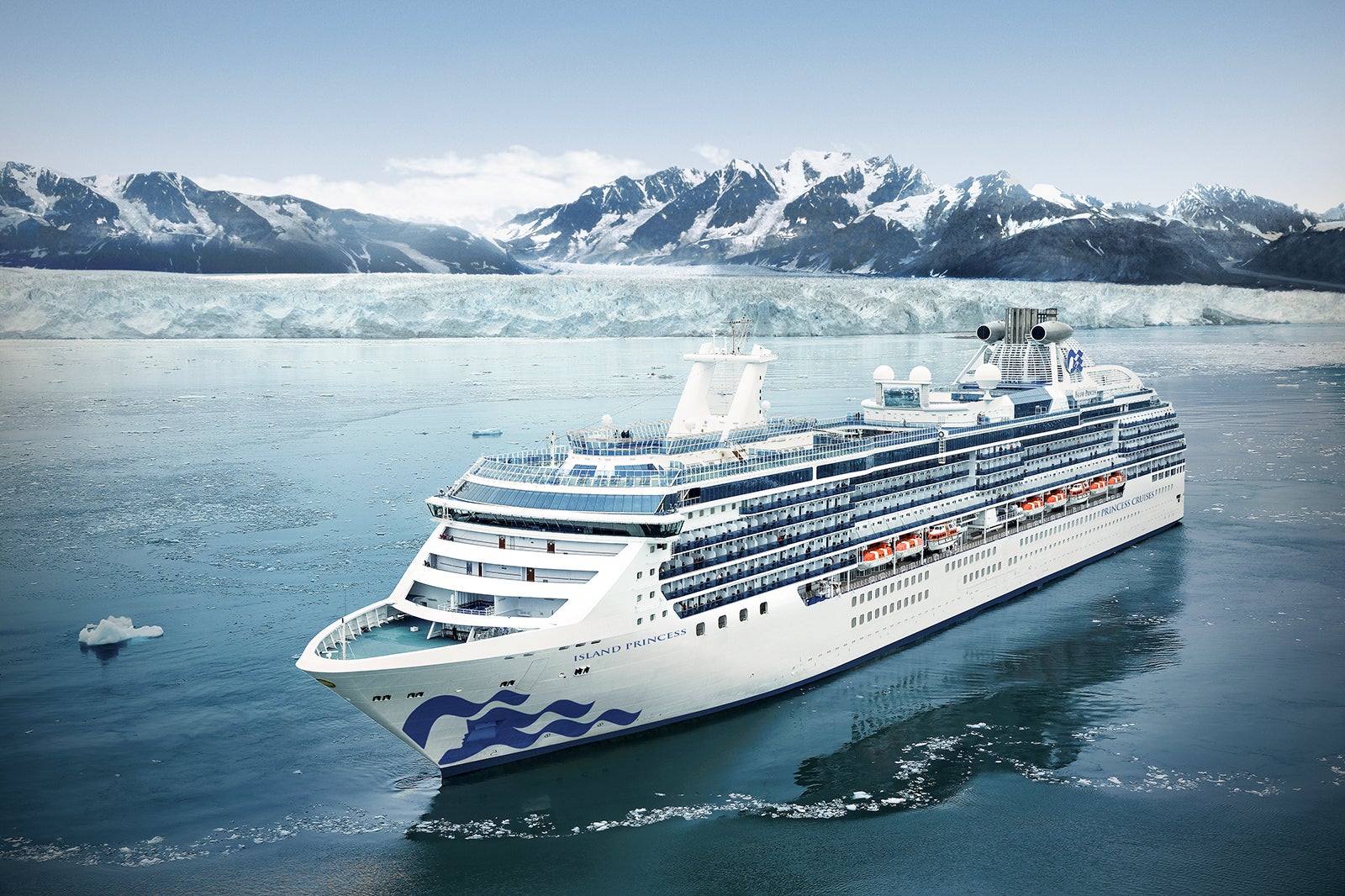
Maiden voyage: 2003 Size: 92,822 gross tons Passenger capacity : 2,200
16. Coral Princess
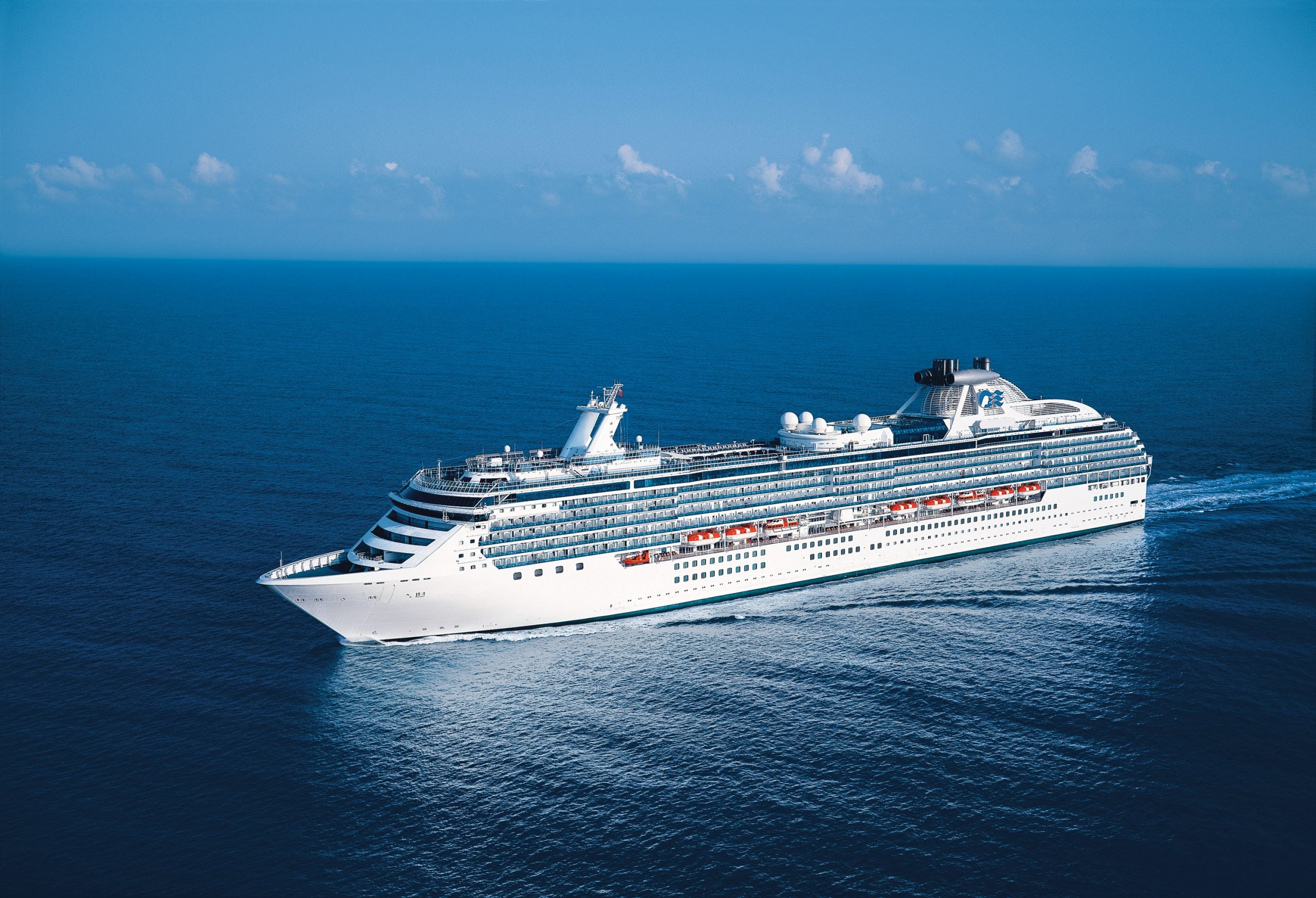
Maiden voyage: 2002 Size: 91,627 gross tons Passenger capacity : 2,000
What is the biggest Princess cruise ship?
The biggest Princess cruise ship is the 4,300-passenger Sun Princess , which is also the line's newest vessel. It just debuted in February.
Sun Princess is the first vessel in Princess Cruises' new Sphere Class of ships, which have been designed to be much bigger and more venue-packed than the vessels in the line's last new series of ships, the Royal Class.
Sun Princess measures 177,882 gross tons, which is about 22% bigger than the biggest ship in the Royal Class (the 145,000-ton Discovery Princess). Royal Class ships range in size from 142,229 to 145,000 gross tons.
Note that gross tons is a size measurement referring to interior space, not weight.
A second ship in the Sphere Class series, Star Princess, is under construction at a shipyard in Italy and will debut in October 2025 .
For more details on Sun Princess, including what venues are on board and what it's like to sail on the vessel, see TPG's comprehensive first look at Sun Princess after an early sailing.
What is the smallest Princess cruise ship?
The smallest Princess cruise ship is the 2,000-passenger Coral Princess. Measuring just 91,267 gross tons, it's about 36% smaller than Discovery Princess, making it a significantly smaller vessel.
Coral Princess dates to 2002, a time when cruise ships were built far smaller than they are today and with far fewer venues. At 21 years old, it's also one of the two oldest vessels in the Princess fleet and will probably be phased out sometime in the next decade.
Related: The ultimate guide to Princess Cruises
While significantly smaller than the newest Princess ships, Coral Princess still has many of the signature spaces and venues found on new Princess vessels, including an Italian eatery called Sabatini's and a steakhouse.
Entertainment venues on Coral Princess include a relatively large main theater for production shows, a secondary lounge that offers comedy shows and other entertainment, and a casino. Like other Princess ships, the top deck of the vessel is mostly devoted to pool areas with hot tubs and lounge chairs. There's also a spa.
While smaller and older than the typical Princess ship, Coral Princess has a loyal following among Princess fans who prefer smaller and more intimate ships.
Are bigger Princess cruise ships coming?
It's not clear yet. Princess currently has one new ship on order, Star Princess. But the final size of Star Princess won't be known until the vessel debuts in late 2025.
Star Princess will be the second vessel in the new Sphere Class of ships at Princess. It's likely to be very similar in size to the first vessel in the series, the new Sun Princess. But it's not uncommon for each new vessel in a series to be slightly bigger than the one before.
Star Princess is currently under construction at the Fincantieri shipyard near Monfalcone, Italy.
Note that this isn't the first time Princess has named a ship Sun Princess or Star Princess. Both are recycled names from past Princess ships. Princess operated smaller vessels under the Sun Princess and Star Princess names up until 2020.
Related: Everything to know about Princess cabins and suites
What's the difference between bigger and smaller Princess ships?
The biggest Princess cruise ships have room for more onboard venues and attractions than smaller Princess ships. That makes them more alluring for vacationers who prefer a big resort experience with lots of options as compared to a stay at a smaller resort.
On the biggest Princess vessels, the Sphere Class and Royal Class vessels, you'll find the largest piazza-like central atriums in the Princess fleet surrounded by lots of bars and restaurants; multiple entertainment venues for live shows, comedy acts and more; and expansive pool decks with more space for sunning than you'll find on smaller Princess vessels.
You'll also find some only-on-the-Royal-class-ships extras, including, on some of the Royal Class ships, a glass-floored "SeaWalk" that extends over the side of the vessel.
Related: The 5 best destinations you can visit on a Princess ship
Princess' smaller cruise ships also are generally its older cruise ships and lack some of the above features, which are more typical of newer ships. These smaller Princess ships have a more intimate feel, at least in the pantheon of relatively big, mass-market ships, and they hold fewer people.
While Sphere Class and Royal Class ships can hold more than 4,500 passengers with every berth full, the line's smaller vessels (particularly the relatively small Island Princess and Coral Princess) often sail with just 2,000 or so passengers on board.
That makes the smaller Princess ships a good choice for someone who wants to try Princess but isn't eager to travel with huge crowds. The smallest ships in the Princess fleet thus appeal to a subset of Princess fans who prefer more intimacy in a cruise vessel and don't mind giving up some onboard amenities to get it. They are also often less expensive to sail on, on a per-day basis.
Related: Don't miss out on these Princess loyalty perks
In addition, because of their size, the smallest ships at Princess Cruises are able to operate itineraries to places that aren't as easy for big ships to visit. Not all ports in the world can handle a ship the size of Sun Princess.
Planning a cruise? Start with these stories:
- The 5 most desirable cabin locations on any cruise ship
- 8 cabin locations on cruise ships you should definitely avoid
- Which cruise brand is best for you? A guide to the most popular lines
- 21 tips and tricks that will make your first cruise go smoothly
- 15 ways that cruising newbies waste money on their first cruise
- The 15 best cruise ships for people who never want to grow up
- Cruise packing list: The ultimate guide to what to pack for a cruise

Crying Myself to Sleep on the Biggest Cruise Ship Ever
Seven agonizing nights aboard the Icon of the Seas

Listen to this article
Listen to more stories on curio
Updated at 2:44 p.m. ET on April 6, 2024.
This article was featured in the One Story to Read Today newsletter. Sign up for it here .
MY FIRST GLIMPSE of Royal Caribbean’s Icon of the Seas, from the window of an approaching Miami cab, brings on a feeling of vertigo, nausea, amazement, and distress. I shut my eyes in defense, as my brain tells my optic nerve to try again.
The ship makes no sense, vertically or horizontally. It makes no sense on sea, or on land, or in outer space. It looks like a hodgepodge of domes and minarets, tubes and canopies, like Istanbul had it been designed by idiots. Vibrant, oversignifying colors are stacked upon other such colors, decks perched over still more decks; the only comfort is a row of lifeboats ringing its perimeter. There is no imposed order, no cogent thought, and, for those who do not harbor a totalitarian sense of gigantomania, no visual mercy. This is the biggest cruise ship ever built, and I have been tasked with witnessing its inaugural voyage.

Explore the May 2024 Issue
Check out more from this issue and find your next story to read.
“Author embarks on their first cruise-ship voyage” has been a staple of American essay writing for almost three decades, beginning with David Foster Wallace’s “A Supposedly Fun Thing I’ll Never Do Again,” which was first published in 1996 under the title “Shipping Out.” Since then, many admirable writers have widened and diversified the genre. Usually the essayist commissioned to take to the sea is in their first or second flush of youth and is ready to sharpen their wit against the hull of the offending vessel. I am 51, old and tired, having seen much of the world as a former travel journalist, and mostly what I do in both life and prose is shrug while muttering to my imaginary dachshund, “This too shall pass.” But the Icon of the Seas will not countenance a shrug. The Icon of the Seas is the Linda Loman of cruise ships, exclaiming that attention must be paid. And here I am in late January with my one piece of luggage and useless gray winter jacket and passport, zipping through the Port of Miami en route to the gangway that will separate me from the bulk of North America for more than seven days, ready to pay it in full.
The aforementioned gangway opens up directly onto a thriving mall (I will soon learn it is imperiously called the “Royal Promenade”), presently filled with yapping passengers beneath a ceiling studded with balloons ready to drop. Crew members from every part of the global South, as well as a few Balkans, are shepherding us along while pressing flutes of champagne into our hands. By a humming Starbucks, I drink as many of these as I can and prepare to find my cabin. I show my blue Suite Sky SeaPass Card (more on this later, much more) to a smiling woman from the Philippines, and she tells me to go “aft.” Which is where, now? As someone who has rarely sailed on a vessel grander than the Staten Island Ferry, I am confused. It turns out that the aft is the stern of the ship, or, for those of us who don’t know what a stern or an aft are, its ass. The nose of the ship, responsible for separating the waves before it, is also called a bow, and is marked for passengers as the FWD , or forward. The part of the contemporary sailing vessel where the malls are clustered is called the midship. I trust that you have enjoyed this nautical lesson.
I ascend via elevator to my suite on Deck 11. This is where I encounter my first terrible surprise. My suite windows and balcony do not face the ocean. Instead, they look out onto another shopping mall. This mall is the one that’s called Central Park, perhaps in homage to the Olmsted-designed bit of greenery in the middle of my hometown. Although on land I would be delighted to own a suite with Central Park views, here I am deeply depressed. To sail on a ship and not wake up to a vast blue carpet of ocean? Unthinkable.
Allow me a brief preamble here. The story you are reading was commissioned at a moment when most staterooms on the Icon were sold out. In fact, so enthralled by the prospect of this voyage were hard-core mariners that the ship’s entire inventory of guest rooms (the Icon can accommodate up to 7,600 passengers, but its inaugural journey was reduced to 5,000 or so for a less crowded experience) was almost immediately sold out. Hence, this publication was faced with the shocking prospect of paying nearly $19,000 to procure for this solitary passenger an entire suite—not including drinking expenses—all for the privilege of bringing you this article. But the suite in question doesn’t even have a view of the ocean! I sit down hard on my soft bed. Nineteen thousand dollars for this .

The viewless suite does have its pluses. In addition to all the Malin+Goetz products in my dual bathrooms, I am granted use of a dedicated Suite Deck lounge; access to Coastal Kitchen, a superior restaurant for Suites passengers; complimentary VOOM SM Surf & Stream (“the fastest Internet at Sea”) “for one device per person for the whole cruise duration”; a pair of bathrobes (one of which comes prestained with what looks like a large expectoration by the greenest lizard on Earth); and use of the Grove Suite Sun, an area on Decks 18 and 19 with food and deck chairs reserved exclusively for Suite passengers. I also get reserved seating for a performance of The Wizard of Oz , an ice-skating tribute to the periodic table, and similar provocations. The very color of my Suite Sky SeaPass Card, an oceanic blue as opposed to the cloying royal purple of the standard non-Suite passenger, will soon provoke envy and admiration. But as high as my status may be, there are those on board who have much higher status still, and I will soon learn to bow before them.
In preparation for sailing, I have “priced in,” as they say on Wall Street, the possibility that I may come from a somewhat different monde than many of the other cruisers. Without falling into stereotypes or preconceptions, I prepare myself for a friendly outspokenness on the part of my fellow seafarers that may not comply with modern DEI standards. I believe in meeting people halfway, and so the day before flying down to Miami, I visited what remains of Little Italy to purchase a popular T-shirt that reads DADDY’S LITTLE MEATBALL across the breast in the colors of the Italian flag. My wife recommended that I bring one of my many T-shirts featuring Snoopy and the Peanuts gang, as all Americans love the beagle and his friends. But I naively thought that my meatball T-shirt would be more suitable for conversation-starting. “Oh, and who is your ‘daddy’?” some might ask upon seeing it. “And how long have you been his ‘little meatball’?” And so on.
I put on my meatball T-shirt and head for one of the dining rooms to get a late lunch. In the elevator, I stick out my chest for all to read the funny legend upon it, but soon I realize that despite its burnished tricolor letters, no one takes note. More to the point, no one takes note of me. Despite my attempts at bridge building, the very sight of me (small, ethnic, without a cap bearing the name of a football team) elicits no reaction from other passengers. Most often, they will small-talk over me as if I don’t exist. This brings to mind the travails of David Foster Wallace , who felt so ostracized by his fellow passengers that he retreated to his cabin for much of his voyage. And Wallace was raised primarily in the Midwest and was a much larger, more American-looking meatball than I am. If he couldn’t talk to these people, how will I? What if I leave this ship without making any friends at all, despite my T-shirt? I am a social creature, and the prospect of seven days alone and apart is saddening. Wallace’s stateroom, at least, had a view of the ocean, a kind of cheap eternity.
Worse awaits me in the dining room. This is a large, multichandeliered room where I attended my safety training (I was shown how to put on a flotation vest; it is a very simple procedure). But the maître d’ politely refuses me entry in an English that seems to verge on another language. “I’m sorry, this is only for pendejos ,” he seems to be saying. I push back politely and he repeats himself. Pendejos ? Piranhas? There’s some kind of P-word to which I am not attuned. Meanwhile elderly passengers stream right past, powered by their limbs, walkers, and electric wheelchairs. “It is only pendejo dining today, sir.” “But I have a suite!” I say, already starting to catch on to the ship’s class system. He examines my card again. “But you are not a pendejo ,” he confirms. I am wearing a DADDY’S LITTLE MEATBALL T-shirt, I want to say to him. I am the essence of pendejo .
Eventually, I give up and head to the plebeian buffet on Deck 15, which has an aquatic-styled name I have now forgotten. Before gaining entry to this endless cornucopia of reheated food, one passes a washing station of many sinks and soap dispensers, and perhaps the most intriguing character on the entire ship. He is Mr. Washy Washy—or, according to his name tag, Nielbert of the Philippines—and he is dressed as a taco (on other occasions, I’ll see him dressed as a burger). Mr. Washy Washy performs an eponymous song in spirited, indeed flamboyant English: “Washy, washy, wash your hands, WASHY WASHY!” The dangers of norovirus and COVID on a cruise ship this size (a giant fellow ship was stricken with the former right after my voyage) makes Mr. Washy Washy an essential member of the crew. The problem lies with the food at the end of Washy’s rainbow. The buffet is groaning with what sounds like sophisticated dishes—marinated octopus, boiled egg with anchovy, chorizo, lobster claws—but every animal tastes tragically the same, as if there was only one creature available at the market, a “cruisipus” bred specifically for Royal Caribbean dining. The “vegetables” are no better. I pick up a tomato slice and look right through it. It tastes like cellophane. I sit alone, apart from the couples and parents with gaggles of children, as “We Are Family” echoes across the buffet space.
I may have failed to mention that all this time, the Icon of the Seas has not left port. As the fiery mango of the subtropical setting sun makes Miami’s condo skyline even more apocalyptic, the ship shoves off beneath a perfunctory display of fireworks. After the sun sets, in the far, dark distance, another circus-lit cruise ship ruptures the waves before us. We glance at it with pity, because it is by definition a smaller ship than our own. I am on Deck 15, outside the buffet and overlooking a bunch of pools (the Icon has seven of them), drinking a frilly drink that I got from one of the bars (the Icon has 15 of them), still too shy to speak to anyone, despite Sister Sledge’s assertion that all on the ship are somehow related.
Kim Brooks: On failing the family vacation
The ship’s passage away from Ron DeSantis’s Florida provides no frisson, no sense of developing “sea legs,” as the ship is too large to register the presence of waves unless a mighty wind adds significant chop. It is time for me to register the presence of the 5,000 passengers around me, even if they refuse to register mine. My fellow travelers have prepared for this trip with personally decorated T-shirts celebrating the importance of this voyage. The simplest ones say ICON INAUGURAL ’24 on the back and the family name on the front. Others attest to an over-the-top love of cruise ships: WARNING! MAY START TALKING ABOUT CRUISING . Still others are artisanally designed and celebrate lifetimes spent married while cruising (on ships, of course). A couple possibly in their 90s are wearing shirts whose backs feature a drawing of a cruise liner, two flamingos with ostensibly male and female characteristics, and the legend “ HUSBAND AND WIFE Cruising Partners FOR LIFE WE MAY NOT HAVE IT All Together BUT TOGETHER WE HAVE IT ALL .” (The words not in all caps have been written in cursive.) A real journalist or a more intrepid conversationalist would have gone up to the couple and asked them to explain the longevity of their marriage vis-à-vis their love of cruising. But instead I head to my mall suite, take off my meatball T-shirt, and allow the first tears of the cruise to roll down my cheeks slowly enough that I briefly fall asleep amid the moisture and salt.

I WAKE UP with a hangover. Oh God. Right. I cannot believe all of that happened last night. A name floats into my cobwebbed, nauseated brain: “Ayn Rand.” Jesus Christ.
I breakfast alone at the Coastal Kitchen. The coffee tastes fine and the eggs came out of a bird. The ship rolls slightly this morning; I can feel it in my thighs and my schlong, the parts of me that are most receptive to danger.
I had a dangerous conversation last night. After the sun set and we were at least 50 miles from shore (most modern cruise ships sail at about 23 miles an hour), I lay in bed softly hiccupping, my arms stretched out exactly like Jesus on the cross, the sound of the distant waves missing from my mall-facing suite, replaced by the hum of air-conditioning and children shouting in Spanish through the vents of my two bathrooms. I decided this passivity was unacceptable. As an immigrant, I feel duty-bound to complete the tasks I am paid for, which means reaching out and trying to understand my fellow cruisers. So I put on a normal James Perse T-shirt and headed for one of the bars on the Royal Promenade—the Schooner Bar, it was called, if memory serves correctly.
I sat at the bar for a martini and two Negronis. An old man with thick, hairy forearms drank next to me, very silent and Hemingwaylike, while a dreadlocked piano player tinkled out a series of excellent Elton John covers. To my right, a young white couple—he in floral shorts, she in a light, summery miniskirt with a fearsome diamond ring, neither of them in football regalia—chatted with an elderly couple. Do it , I commanded myself. Open your mouth. Speak! Speak without being spoken to. Initiate. A sentence fragment caught my ear from the young woman, “Cherry Hill.” This is a suburb of Philadelphia in New Jersey, and I had once been there for a reading at a synagogue. “Excuse me,” I said gently to her. “Did you just mention Cherry Hill? It’s a lovely place.”
As it turned out, the couple now lived in Fort Lauderdale (the number of Floridians on the cruise surprised me, given that Southern Florida is itself a kind of cruise ship, albeit one slowly sinking), but soon they were talking with me exclusively—the man potbellied, with a chin like a hard-boiled egg; the woman as svelte as if she were one of the many Ukrainian members of the crew—the elderly couple next to them forgotten. This felt as groundbreaking as the first time I dared to address an American in his native tongue, as a child on a bus in Queens (“On my foot you are standing, Mister”).
“I don’t want to talk politics,” the man said. “But they’re going to eighty-six Biden and put Michelle in.”
I considered the contradictions of his opening conversational gambit, but decided to play along. “People like Michelle,” I said, testing the waters. The husband sneered, but the wife charitably put forward that the former first lady was “more personable” than Joe Biden. “They’re gonna eighty-six Biden,” the husband repeated. “He can’t put a sentence together.”
After I mentioned that I was a writer—though I presented myself as a writer of teleplays instead of novels and articles such as this one—the husband told me his favorite writer was Ayn Rand. “Ayn Rand, she came here with nothing,” the husband said. “I work with a lot of Cubans, so …” I wondered if I should mention what I usually do to ingratiate myself with Republicans or libertarians: the fact that my finances improved after pass-through corporations were taxed differently under Donald Trump. Instead, I ordered another drink and the couple did the same, and I told him that Rand and I were born in the same city, St. Petersburg/Leningrad, and that my family also came here with nothing. Now the bonding and drinking began in earnest, and several more rounds appeared. Until it all fell apart.
Read: Gary Shteyngart on watching Russian television for five days straight
My new friend, whom I will refer to as Ayn, called out to a buddy of his across the bar, and suddenly a young couple, both covered in tattoos, appeared next to us. “He fucking punked me,” Ayn’s frat-boy-like friend called out as he put his arm around Ayn, while his sizable partner sizzled up to Mrs. Rand. Both of them had a look I have never seen on land—their eyes projecting absence and enmity in equal measure. In the ’90s, I drank with Russian soldiers fresh from Chechnya and wandered the streets of wartime Zagreb, but I have never seen such undisguised hostility toward both me and perhaps the universe at large. I was briefly introduced to this psychopathic pair, but neither of them wanted to have anything to do with me, and the tattooed woman would not even reveal her Christian name to me (she pretended to have the same first name as Mrs. Rand). To impress his tattooed friends, Ayn made fun of the fact that as a television writer, I’d worked on the series Succession (which, it would turn out, practically nobody on the ship had watched), instead of the far more palatable, in his eyes, zombie drama of last year. And then my new friends drifted away from me into an angry private conversation—“He punked me!”—as I ordered another drink for myself, scared of the dead-eyed arrivals whose gaze never registered in the dim wattage of the Schooner Bar, whose terrifying voices and hollow laughs grated like unoiled gears against the crooning of “Goodbye Yellow Brick Road.”
But today is a new day for me and my hangover. After breakfast, I explore the ship’s so-called neighborhoods . There’s the AquaDome, where one can find a food hall and an acrobatic sound-and-light aquatic show. Central Park has a premium steak house, a sushi joint, and a used Rolex that can be bought for $8,000 on land here proudly offered at $17,000. There’s the aforementioned Royal Promenade, where I had drunk with the Rands, and where a pair of dueling pianos duel well into the night. There’s Surfside, a kids’ neighborhood full of sugary garbage, which looks out onto the frothy trail that the behemoth leaves behind itself. Thrill Island refers to the collection of tubes that clutter the ass of the ship and offer passengers six waterslides and a surfing simulation. There’s the Hideaway, an adult zone that plays music from a vomit-slathered, Brit-filled Alicante nightclub circa 1996 and proves a big favorite with groups of young Latin American customers. And, most hurtfully, there’s the Suite Neighborhood.

I say hurtfully because as a Suite passenger I should be here, though my particular suite is far from the others. Whereas I am stuck amid the riffraff of Deck 11, this section is on the highborn Decks 16 and 17, and in passing, I peek into the spacious, tall-ceilinged staterooms from the hallway, dazzled by the glint of the waves and sun. For $75,000, one multifloor suite even comes with its own slide between floors, so that a family may enjoy this particular terror in private. There is a quiet splendor to the Suite Neighborhood. I see fewer stickers and signs and drawings than in my own neighborhood—for example, MIKE AND DIANA PROUDLY SERVED U.S. MARINE CORPS RETIRED . No one here needs to announce their branch of service or rank; they are simply Suites, and this is where they belong. Once again, despite my hard work and perseverance, I have been disallowed from the true American elite. Once again, I am “Not our class, dear.” I am reminded of watching The Love Boat on my grandmother’s Zenith, which either was given to her or we found in the trash (I get our many malfunctioning Zeniths confused) and whose tube got so hot, I would put little chunks of government cheese on a thin tissue atop it to give our welfare treat a pleasant, Reagan-era gooeyness. I could not understand English well enough then to catch the nuances of that seafaring program, but I knew that there were differences in the status of the passengers, and that sometimes those differences made them sad. Still, this ship, this plenty—every few steps, there are complimentary nachos or milkshakes or gyros on offer—was the fatty fuel of my childhood dreams. If only I had remained a child.
I walk around the outdoor decks looking for company. There is a middle-aged African American couple who always seem to be asleep in each other’s arms, probably exhausted from the late capitalism they regularly encounter on land. There is far more diversity on this ship than I expected. Many couples are a testament to Loving v. Virginia , and there is a large group of folks whose T-shirts read MELANIN AT SEA / IT’S THE MELANIN FOR ME . I smile when I see them, but then some young kids from the group makes Mr. Washy Washy do a cruel, caricatured “Burger Dance” (today he is in his burger getup), and I think, Well, so much for intersectionality .
At the infinity pool on Deck 17, I spot some elderly women who could be ethnic and from my part of the world, and so I jump in. I am proved correct! Many of them seem to be originally from Queens (“Corona was still great when it was all Italian”), though they are now spread across the tristate area. We bond over the way “Ron-kon-koma” sounds when announced in Penn Station.
“Everyone is here for a different reason,” one of them tells me. She and her ex-husband last sailed together four years ago to prove to themselves that their marriage was truly over. Her 15-year-old son lost his virginity to “an Irish young lady” while their ship was moored in Ravenna, Italy. The gaggle of old-timers competes to tell me their favorite cruising stories and tips. “A guy proposed in Central Park a couple of years ago”—many Royal Caribbean ships apparently have this ridiculous communal area—“and she ran away screaming!” “If you’re diamond-class, you get four drinks for free.” “A different kind of passenger sails out of Bayonne.” (This, perhaps, is racially coded.) “Sometimes, if you tip the bartender $5, your next drink will be free.”
“Everyone’s here for a different reason,” the woman whose marriage ended on a cruise tells me again. “Some people are here for bad reasons—the drinkers and the gamblers. Some people are here for medical reasons.” I have seen more than a few oxygen tanks and at least one woman clearly undergoing very serious chemo. Some T-shirts celebrate good news about a cancer diagnosis. This might be someone’s last cruise or week on Earth. For these women, who have spent months, if not years, at sea, cruising is a ritual as well as a life cycle: first love, last love, marriage, divorce, death.
Read: The last place on Earth any tourist should go
I have talked with these women for so long, tonight I promise myself that after a sad solitary dinner I will not try to seek out company at the bars in the mall or the adult-themed Hideaway. I have enough material to fulfill my duties to this publication. As I approach my orphaned suite, I run into the aggro young people who stole Mr. and Mrs. Rand away from me the night before. The tattooed apparitions pass me without a glance. She is singing something violent about “Stuttering Stanley” (a character in a popular horror movie, as I discover with my complimentary VOOM SM Surf & Stream Internet at Sea) and he’s loudly shouting about “all the money I’ve lost,” presumably at the casino in the bowels of the ship.
So these bent psychos out of a Cormac McCarthy novel are angrily inhabiting my deck. As I mewl myself to sleep, I envision a limited series for HBO or some other streamer, a kind of low-rent White Lotus , where several aggressive couples conspire to throw a shy intellectual interloper overboard. I type the scenario into my phone. As I fall asleep, I think of what the woman who recently divorced her husband and whose son became a man through the good offices of the Irish Republic told me while I was hoisting myself out of the infinity pool. “I’m here because I’m an explorer. I’m here because I’m trying something new.” What if I allowed myself to believe in her fantasy?

“YOU REALLY STARTED AT THE TOP,” they tell me. I’m at the Coastal Kitchen for my eggs and corned-beef hash, and the maître d’ has slotted me in between two couples. Fueled by coffee or perhaps intrigued by my relative youth, they strike up a conversation with me. As always, people are shocked that this is my first cruise. They contrast the Icon favorably with all the preceding liners in the Royal Caribbean fleet, usually commenting on the efficiency of the elevators that hurl us from deck to deck (as in many large corporate buildings, the elevators ask you to choose a floor and then direct you to one of many lifts). The couple to my right, from Palo Alto—he refers to his “porn mustache” and calls his wife “my cougar” because she is two years older—tell me they are “Pandemic Pinnacles.”
This is the day that my eyes will be opened. Pinnacles , it is explained to me over translucent cantaloupe, have sailed with Royal Caribbean for 700 ungodly nights. Pandemic Pinnacles took advantage of the two-for-one accrual rate of Pinnacle points during the pandemic, when sailing on a cruise ship was even more ill-advised, to catapult themselves into Pinnacle status.
Because of the importance of the inaugural voyage of the world’s largest cruise liner, more than 200 Pinnacles are on this ship, a startling number, it seems. Mrs. Palo Alto takes out a golden badge that I have seen affixed over many a breast, which reads CROWN AND ANCHOR SOCIETY along with her name. This is the coveted badge of the Pinnacle. “You should hear all the whining in Guest Services,” her husband tells me. Apparently, the Pinnacles who are not also Suites like us are all trying to use their status to get into Coastal Kitchen, our elite restaurant. Even a Pinnacle needs to be a Suite to access this level of corned-beef hash.
“We’re just baby Pinnacles,” Mrs. Palo Alto tells me, describing a kind of internal class struggle among the Pinnacle elite for ever higher status.
And now I understand what the maître d’ was saying to me on the first day of my cruise. He wasn’t saying “ pendejo .” He was saying “Pinnacle.” The dining room was for Pinnacles only, all those older people rolling in like the tide on their motorized scooters.
And now I understand something else: This whole thing is a cult. And like most cults, it can’t help but mirror the endless American fight for status. Like Keith Raniere’s NXIVM, where different-colored sashes were given out to connote rank among Raniere’s branded acolytes, this is an endless competition among Pinnacles, Suites, Diamond-Plusers, and facing-the-mall, no-balcony purple SeaPass Card peasants, not to mention the many distinctions within each category. The more you cruise, the higher your status. No wonder a section of the Royal Promenade is devoted to getting passengers to book their next cruise during the one they should be enjoying now. No wonder desperate Royal Caribbean offers (“FINAL HOURS”) crowded my email account weeks before I set sail. No wonder the ship’s jewelry store, the Royal Bling, is selling a $100,000 golden chalice that will entitle its owner to drink free on Royal Caribbean cruises for life. (One passenger was already gaming out whether her 28-year-old son was young enough to “just about earn out” on the chalice or if that ship had sailed.) No wonder this ship was sold out months before departure , and we had to pay $19,000 for a horrid suite away from the Suite Neighborhood. No wonder the most mythical hero of Royal Caribbean lore is someone named Super Mario, who has cruised so often, he now has his own working desk on many ships. This whole experience is part cult, part nautical pyramid scheme.
From the June 2014 issue: Ship of wonks
“The toilets are amazing,” the Palo Altos are telling me. “One flush and you’re done.” “They don’t understand how energy-efficient these ships are,” the husband of the other couple is telling me. “They got the LNG”—liquefied natural gas, which is supposed to make the Icon a boon to the environment (a concept widely disputed and sometimes ridiculed by environmentalists).
But I’m thinking along a different line of attack as I spear my last pallid slice of melon. For my streaming limited series, a Pinnacle would have to get killed by either an outright peasant or a Suite without an ocean view. I tell my breakfast companions my idea.
“Oh, for sure a Pinnacle would have to be killed,” Mr. Palo Alto, the Pandemic Pinnacle, says, touching his porn mustache thoughtfully as his wife nods.
“THAT’S RIGHT, IT’S your time, buddy!” Hubert, my fun-loving Panamanian cabin attendant, shouts as I step out of my suite in a robe. “Take it easy, buddy!”
I have come up with a new dressing strategy. Instead of trying to impress with my choice of T-shirts, I have decided to start wearing a robe, as one does at a resort property on land, with a proper spa and hammam. The response among my fellow cruisers has been ecstatic. “Look at you in the robe!” Mr. Rand cries out as we pass each other by the Thrill Island aqua park. “You’re living the cruise life! You know, you really drank me under the table that night.” I laugh as we part ways, but my soul cries out, Please spend more time with me, Mr. and Mrs. Rand; I so need the company .
In my white robe, I am a stately presence, a refugee from a better limited series, a one-man crossover episode. (Only Suites are granted these robes to begin with.) Today, I will try many of the activities these ships have on offer to provide their clientele with a sense of never-ceasing motion. Because I am already at Thrill Island, I decide to climb the staircase to what looks like a mast on an old-fashioned ship (terrified, because I am afraid of heights) to try a ride called “Storm Chasers,” which is part of the “Category 6” water park, named in honor of one of the storms that may someday do away with the Port of Miami entirely. Storm Chasers consists of falling from the “mast” down a long, twisting neon tube filled with water, like being the camera inside your own colonoscopy, as you hold on to the handles of a mat, hoping not to die. The tube then flops you down headfirst into a trough of water, a Royal Caribbean baptism. It both knocks my breath out and makes me sad.
In keeping with the aquatic theme, I attend a show at the AquaDome. To the sound of “Live and Let Die,” a man in a harness gyrates to and fro in the sultry air. I saw something very similar in the back rooms of the famed Berghain club in early-aughts Berlin. Soon another harnessed man is gyrating next to the first. Ja , I think to myself, I know how this ends. Now will come the fisting , natürlich . But the show soon devolves into the usual Marvel-film-grade nonsense, with too much light and sound signifying nichts . If any fisting is happening, it is probably in the Suite Neighborhood, inside a cabin marked with an upside-down pineapple, which I understand means a couple are ready to swing, and I will see none of it.
I go to the ice show, which is a kind of homage—if that’s possible—to the periodic table, done with the style and pomp and masterful precision that would please the likes of Kim Jong Un, if only he could afford Royal Caribbean talent. At one point, the dancers skate to the theme song of Succession . “See that!” I want to say to my fellow Suites—at “cultural” events, we have a special section reserved for us away from the commoners—“ Succession ! It’s even better than the zombie show! Open your minds!”
Finally, I visit a comedy revue in an enormous and too brightly lit version of an “intimate,” per Royal Caribbean literature, “Manhattan comedy club.” Many of the jokes are about the cruising life. “I’ve lived on ships for 20 years,” one of the middle-aged comedians says. “I can only see so many Filipino homosexuals dressed as a taco.” He pauses while the audience laughs. “I am so fired tonight,” he says. He segues into a Trump impression and then Biden falling asleep at the microphone, which gets the most laughs. “Anyone here from Fort Leonard Wood?” another comedian asks. Half the crowd seems to cheer. As I fall asleep that night, I realize another connection I have failed to make, and one that may explain some of the diversity on this vessel—many of its passengers have served in the military.
As a coddled passenger with a suite, I feel like I am starting to understand what it means to have a rank and be constantly reminded of it. There are many espresso makers , I think as I look across the expanse of my officer-grade quarters before closing my eyes, but this one is mine .

A shocking sight greets me beyond the pools of Deck 17 as I saunter over to the Coastal Kitchen for my morning intake of slightly sour Americanos. A tiny city beneath a series of perfectly pressed green mountains. Land! We have docked for a brief respite in Basseterre, the capital of St. Kitts and Nevis. I wolf down my egg scramble to be one of the first passengers off the ship. Once past the gangway, I barely refrain from kissing the ground. I rush into the sights and sounds of this scruffy island city, sampling incredible conch curry and buckets of non-Starbucks coffee. How wonderful it is to be where God intended humans to be: on land. After all, I am neither a fish nor a mall rat. This is my natural environment. Basseterre may not be Havana, but there are signs of human ingenuity and desire everywhere you look. The Black Table Grill Has been Relocated to Soho Village, Market Street, Directly Behind of, Gary’s Fruits and Flower Shop. Signed. THE PORK MAN reads a sign stuck to a wall. Now, that is how you write a sign. A real sign, not the come-ons for overpriced Rolexes that blink across the screens of the Royal Promenade.
“Hey, tie your shoestring!” a pair of laughing ladies shout to me across the street.
“Thank you!” I shout back. Shoestring! “Thank you very much.”
A man in Independence Square Park comes by and asks if I want to play with his monkey. I haven’t heard that pickup line since the Penn Station of the 1980s. But then he pulls a real monkey out of a bag. The monkey is wearing a diaper and looks insane. Wonderful , I think, just wonderful! There is so much life here. I email my editor asking if I can remain on St. Kitts and allow the Icon to sail off into the horizon without me. I have even priced a flight home at less than $300, and I have enough material from the first four days on the cruise to write the entire story. “It would be funny …” my editor replies. “Now get on the boat.”
As I slink back to the ship after my brief jailbreak, the locals stand under umbrellas to gaze at and photograph the boat that towers over their small capital city. The limousines of the prime minister and his lackeys are parked beside the gangway. St. Kitts, I’ve been told, is one of the few islands that would allow a ship of this size to dock.
“We hear about all the waterslides,” a sweet young server in one of the cafés told me. “We wish we could go on the ship, but we have to work.”
“I want to stay on your island,” I replied. “I love it here.”
But she didn’t understand how I could possibly mean that.
“WASHY, WASHY, so you don’t get stinky, stinky!” kids are singing outside the AquaDome, while their adult minders look on in disapproval, perhaps worried that Mr. Washy Washy is grooming them into a life of gayness. I heard a southern couple skip the buffet entirely out of fear of Mr. Washy Washy.
Meanwhile, I have found a new watering hole for myself, the Swim & Tonic, the biggest swim-up bar on any cruise ship in the world. Drinking next to full-size, nearly naked Americans takes away one’s own self-consciousness. The men have curvaceous mom bodies. The women are equally un-shy about their sprawling physiques.
Today I’ve befriended a bald man with many children who tells me that all of the little trinkets that Royal Caribbean has left us in our staterooms and suites are worth a fortune on eBay. “Eighty dollars for the water bottle, 60 for the lanyard,” the man says. “This is a cult.”
“Tell me about it,” I say. There is, however, a clientele for whom this cruise makes perfect sense. For a large middle-class family (he works in “supply chains”), seven days in a lower-tier cabin—which starts at $1,800 a person—allow the parents to drop off their children in Surfside, where I imagine many young Filipina crew members will take care of them, while the parents are free to get drunk at a swim-up bar and maybe even get intimate in their cabin. Cruise ships have become, for a certain kind of hardworking family, a form of subsidized child care.
There is another man I would like to befriend at the Swim & Tonic, a tall, bald fellow who is perpetually inebriated and who wears a necklace studded with little rubber duckies in sunglasses, which, I am told, is a sort of secret handshake for cruise aficionados. Tomorrow, I will spend more time with him, but first the ship docks at St. Thomas, in the U.S. Virgin Islands. Charlotte Amalie, the capital, is more charming in name than in presence, but I still all but jump off the ship to score a juicy oxtail and plantains at the well-known Petite Pump Room, overlooking the harbor. From one of the highest points in the small city, the Icon of the Seas appears bigger than the surrounding hills.
I usually tan very evenly, but something about the discombobulation of life at sea makes me forget the regular application of sunscreen. As I walk down the streets of Charlotte Amalie in my fluorescent Icon of the Seas cap, an old Rastafarian stares me down. “Redneck,” he hisses.
“No,” I want to tell him, as I bring a hand up to my red neck, “that’s not who I am at all. On my island, Mannahatta, as Whitman would have it, I am an interesting person living within an engaging artistic milieu. I do not wish to use the Caribbean as a dumping ground for the cruise-ship industry. I love the work of Derek Walcott. You don’t understand. I am not a redneck. And if I am, they did this to me.” They meaning Royal Caribbean? Its passengers? The Rands?
“They did this to me!”
Back on the Icon, some older matrons are muttering about a run-in with passengers from the Celebrity cruise ship docked next to us, the Celebrity Apex. Although Celebrity Cruises is also owned by Royal Caribbean, I am made to understand that there is a deep fratricidal beef between passengers of the two lines. “We met a woman from the Apex,” one matron says, “and she says it was a small ship and there was nothing to do. Her face was as tight as a 19-year-old’s, she had so much surgery.” With those words, and beneath a cloudy sky, humidity shrouding our weathered faces and red necks, we set sail once again, hopefully in the direction of home.

THERE ARE BARELY 48 HOURS LEFT to the cruise, and the Icon of the Seas’ passengers are salty. They know how to work the elevators. They know the Washy Washy song by heart. They understand that the chicken gyro at “Feta Mediterranean,” in the AquaDome Market, is the least problematic form of chicken on the ship.
The passengers have shed their INAUGURAL CRUISE T-shirts and are now starting to evince political opinions. There are caps pledging to make America great again and T-shirts that celebrate words sometimes attributed to Patrick Henry: “The Constitution is not an instrument for the government to restrain the people; it is an instrument for the people to restrain the government.” With their preponderance of FAMILY FLAG FAITH FRIENDS FIREARMS T-shirts, the tables by the crepe station sometimes resemble the Capitol Rotunda on January 6. The Real Anthony Fauci , by Robert F. Kennedy Jr., appears to be a popular form of literature, especially among young men with very complicated versions of the American flag on their T-shirts. Other opinions blend the personal and the political. “Someone needs to kill Washy guy, right?” a well-dressed man in the elevator tells me, his gray eyes radiating nothing. “Just beat him to death. Am I right?” I overhear the male member of a young couple whisper, “There goes that freak” as I saunter by in my white spa robe, and I decide to retire it for the rest of the cruise.
I visit the Royal Bling to see up close the $100,000 golden chalice that entitles you to free drinks on Royal Caribbean forever. The pleasant Serbian saleslady explains that the chalice is actually gold-plated and covered in white zirconia instead of diamonds, as it would otherwise cost $1 million. “If you already have everything,” she explains, “this is one more thing you can get.”
I believe that anyone who works for Royal Caribbean should be entitled to immediate American citizenship. They already speak English better than most of the passengers and, per the Serbian lady’s sales pitch above, better understand what America is as well. Crew members like my Panamanian cabin attendant seem to work 24 hours a day. A waiter from New Delhi tells me that his contract is six months and three weeks long. After a cruise ends, he says, “in a few hours, we start again for the next cruise.” At the end of the half a year at sea, he is allowed a two-to-three-month stay at home with his family. As of 2019, the median income for crew members was somewhere in the vicinity of $20,000, according to a major business publication. Royal Caribbean would not share the current median salary for its crew members, but I am certain that it amounts to a fraction of the cost of a Royal Bling gold-plated, zirconia-studded chalice.
And because most of the Icon’s hyper-sanitized spaces are just a frittata away from being a Delta lounge, one forgets that there are actual sailors on this ship, charged with the herculean task of docking it in port. “Having driven 100,000-ton aircraft carriers throughout my career,” retired Admiral James G. Stavridis, the former NATO Supreme Allied Commander Europe, writes to me, “I’m not sure I would even know where to begin with trying to control a sea monster like this one nearly three times the size.” (I first met Stavridis while touring Army bases in Germany more than a decade ago.)
Today, I decide to head to the hot tub near Swim & Tonic, where some of the ship’s drunkest reprobates seem to gather (the other tubs are filled with families and couples). The talk here, like everywhere else on the ship, concerns football, a sport about which I know nothing. It is apparent that four teams have recently competed in some kind of finals for the year, and that two of them will now face off in the championship. Often when people on the Icon speak, I will try to repeat the last thing they said with a laugh or a nod of disbelief. “Yes, 20-yard line! Ha!” “Oh my God, of course, scrimmage.”
Soon we are joined in the hot tub by the late-middle-age drunk guy with the duck necklace. He is wearing a bucket hat with the legend HAWKEYES , which, I soon gather, is yet another football team. “All right, who turned me in?” Duck Necklace says as he plops into the tub beside us. “I get a call in the morning,” he says. “It’s security. Can you come down to the dining room by 10 a.m.? You need to stay away from the members of this religious family.” Apparently, the gregarious Duck Necklace had photobombed the wrong people. There are several families who present as evangelical Christians or practicing Muslims on the ship. One man, evidently, was not happy that Duck Necklace had made contact with his relatives. “It’s because of religious stuff; he was offended. I put my arm around 20 people a day.”
Everyone laughs. “They asked me three times if I needed medication,” he says of the security people who apparently interrogated him in full view of others having breakfast.
Another hot-tub denizen suggests that he should have asked for fentanyl. After a few more drinks, Duck Necklace begins to muse about what it would be like to fall off the ship. “I’m 62 and I’m ready to go,” he says. “I just don’t want a shark to eat me. I’m a huge God guy. I’m a Bible guy. There’s some Mayan theory squaring science stuff with religion. There is so much more to life on Earth.” We all nod into our Red Stripes.
“I never get off the ship when we dock,” he says. He tells us he lost $6,000 in the casino the other day. Later, I look him up, and it appears that on land, he’s a financial adviser in a crisp gray suit, probably a pillar of his North Chicago community.

THE OCEAN IS TEEMING with fascinating life, but on the surface it has little to teach us. The waves come and go. The horizon remains ever far away.
I am constantly told by my fellow passengers that “everybody here has a story.” Yes, I want to reply, but everybody everywhere has a story. You, the reader of this essay, have a story, and yet you’re not inclined to jump on a cruise ship and, like Duck Necklace, tell your story to others at great pitch and volume. Maybe what they’re saying is that everybody on this ship wants to have a bigger, more coherent, more interesting story than the one they’ve been given. Maybe that’s why there’s so much signage on the doors around me attesting to marriages spent on the sea. Maybe that’s why the Royal Caribbean newsletter slipped under my door tells me that “this isn’t a vacation day spent—it’s bragging rights earned.” Maybe that’s why I’m so lonely.
Today is a big day for Icon passengers. Today the ship docks at Royal Caribbean’s own Bahamian island, the Perfect Day at CocoCay. (This appears to be the actual name of the island.) A comedian at the nightclub opined on what his perfect day at CocoCay would look like—receiving oral sex while learning that his ex-wife had been killed in a car crash (big laughter). But the reality of the island is far less humorous than that.
One of the ethnic tristate ladies in the infinity pool told me that she loved CocoCay because it had exactly the same things that could be found on the ship itself. This proves to be correct. It is like the Icon, but with sand. The same tired burgers, the same colorful tubes conveying children and water from Point A to B. The same swim-up bar at its Hideaway ($140 for admittance, no children allowed; Royal Caribbean must be printing money off its clientele). “There was almost a fight at The Wizard of Oz ,” I overhear an elderly woman tell her companion on a chaise lounge. Apparently one of the passengers began recording Royal Caribbean’s intellectual property and “three guys came after him.”
I walk down a pathway to the center of the island, where a sign reads DO NOT ENTER: YOU HAVE REACHED THE BOUNDARY OF ADVENTURE . I hear an animal scampering in the bushes. A Royal Caribbean worker in an enormous golf cart soon chases me down and takes me back to the Hideaway, where I run into Mrs. Rand in a bikini. She becomes livid telling me about an altercation she had the other day with a woman over a towel and a deck chair. We Suites have special towel privileges; we do not have to hand over our SeaPass Card to score a towel. But the Rands are not Suites. “People are so entitled here,” Mrs. Rand says. “It’s like the airport with all its classes.” “You see,” I want to say, “this is where your husband’s love of Ayn Rand runs into the cruelties and arbitrary indignities of unbridled capitalism.” Instead we make plans to meet for a final drink in the Schooner Bar tonight (the Rands will stand me up).
Back on the ship, I try to do laps, but the pool (the largest on any cruise ship, naturally) is fully trashed with the detritus of American life: candy wrappers, a slowly dissolving tortilla chip, napkins. I take an extra-long shower in my suite, then walk around the perimeter of the ship on a kind of exercise track, past all the alluring lifeboats in their yellow-and-white livery. Maybe there is a dystopian angle to the HBO series that I will surely end up pitching, one with shades of WALL-E or Snowpiercer . In a collapsed world, a Royal Caribbean–like cruise liner sails from port to port, collecting new shipmates and supplies in exchange for the precious energy it has on board. (The actual Icon features a new technology that converts passengers’ poop into enough energy to power the waterslides . In the series, this shitty technology would be greatly expanded.) A very young woman (18? 19?), smart and lonely, who has only known life on the ship, walks along the same track as I do now, contemplating jumping off into the surf left by its wake. I picture reusing Duck Necklace’s words in the opening shot of the pilot. The girl is walking around the track, her eyes on the horizon; maybe she’s highborn—a Suite—and we hear the voice-over: “I’m 19 and I’m ready to go. I just don’t want a shark to eat me.”
Before the cruise is finished, I talk to Mr. Washy Washy, or Nielbert of the Philippines. He is a sweet, gentle man, and I thank him for the earworm of a song he has given me and for keeping us safe from the dreaded norovirus. “This is very important to me, getting people to wash their hands,” he tells me in his burger getup. He has dreams, as an artist and a performer, but they are limited in scope. One day he wants to dress up as a piece of bacon for the morning shift.
THE MAIDEN VOYAGE OF THE TITANIC (the Icon of the Seas is five times as large as that doomed vessel) at least offered its passengers an exciting ending to their cruise, but when I wake up on the eighth day, all I see are the gray ghosts that populate Miami’s condo skyline. Throughout my voyage, my writer friends wrote in to commiserate with me. Sloane Crosley, who once covered a three-day spa mini-cruise for Vogue , tells me she felt “so very alone … I found it very untethering.” Gideon Lewis-Kraus writes in an Instagram comment: “When Gary is done I think it’s time this genre was taken out back and shot.” And he is right. To badly paraphrase Adorno: After this, no more cruise stories. It is unfair to put a thinking person on a cruise ship. Writers typically have difficult childhoods, and it is cruel to remind them of the inherent loneliness that drove them to writing in the first place. It is also unseemly to write about the kind of people who go on cruises. Our country does not provide the education and upbringing that allow its citizens an interior life. For the creative class to point fingers at the large, breasty gentlemen adrift in tortilla-chip-laden pools of water is to gather a sour harvest of low-hanging fruit.
A day or two before I got off the ship, I decided to make use of my balcony, which I had avoided because I thought the view would only depress me further. What I found shocked me. My suite did not look out on Central Park after all. This entire time, I had been living in the ship’s Disneyland, Surfside, the neighborhood full of screaming toddlers consuming milkshakes and candy. And as I leaned out over my balcony, I beheld a slight vista of the sea and surf that I thought I had been missing. It had been there all along. The sea was frothy and infinite and blue-green beneath the span of a seagull’s wing. And though it had been trod hard by the world’s largest cruise ship, it remained.
This article appears in the May 2024 print edition with the headline “A Meatball at Sea.” When you buy a book using a link on this page, we receive a commission. Thank you for supporting The Atlantic.
One of the US's busiest cruise ports can't keep up with America's love for vacations at sea — but an urgent new terminal will help meet the demand for giant cruise ships
- Port Canaveral announced new plans to build a seventh cruise terminal by 2026.
- It scrapped its initial expansion plan because it would've taken longer to build.
- This article is part of " Transforming Business: Infrastructure ," a series exploring the advancements reshaping US infrastructure.

Florida — home to busy beaches, Disney World, and a cruise industry so successful that local ports simply can't keep up with demand.
The Sunshine State flexes seven cruise ports, three of which — Miami, Canaveral, and Everglades — are among the five busiest in the world.
The state may seem well stocked as far as cruise terminals go. But Port Canaveral is running out of space as demand for these vacation voyages continues to skyrocket.
In 2023 , the Florida port accommodated a record 6.8 million cruisers and 13 homeported ships, leading to an all-time-high revenue of $191 million — more than 80% of which came from its cruise operations.
In 2024, it expects to add another 500,000 passengers to that total.
The influx in demand has left Port Canaveral at "a point where we're starting to turn business away," John Murray, its CEO, said at a press conference earlier this month.
The proposed solution? Expand — and quickly. The port announced plans to build a seventh cruise terminal on its north side by 2026, scrapping its initial proposal for one farther south. The latter would've taken longer to build, but "we need it in two years," Murray said, adding: "Maybe sooner."
The proposed terminal would be at the port's "underutilized" North 8 berth. When complete, it could accommodate the world's largest cruise ships, including Royal Caribbean's new 1,198-foot-long, 9,950-person-capacity Icon of the Seas .
Murray said the project would be "self-funded." There's no word yet on the cost, but a spokesperson for Port Canaveral told Business Insider that the existing berth would make construction cheaper than that of previous cruise terminals. The most recent one, completed in 2020, cost $155 million.
Before unveiling these plans, Port Canaveral intended to build its next terminal in an area known as Bluepoints Marina, farther south. The project would've taken three to four years to complete — too long a timeline for Port Canaveral.
A new cruise terminal "has become more urgent and necessary now," Murray said.
Along with a seventh terminal, Port Canaveral plans to build a 3,000-car parking structure and improve the roads leading into and out of the parking lot.
Expanding parking on land is just as important as in the water: Cruise lines have been increasingly developing private islands and destinations in the Caribbean, often visited during three- and four-day cruises. Murray said these shorter sailings typically bring in more vehicular traffic than their five- to seven-day counterparts.
Wooing cruise lines operating on these itineraries could be especially important for Port Canaveral, which is farther north from the private Caribbean destinations than Miami's and Fort Lauderdale's popular ports.
Competition is stiff. In January, MSC Group announced that its cruise lines would move their operations to Miami. In late 2023, Disney Cruise Line unveiled a new terminal at Port Everglades.
"A place like Port Canaveral is continually thinking about retaining the business it has and, of course, capturing some of that business," Ross Klein, the founder of CruiseJunkie.com and a professor at Memorial University of Newfoundland, told BI.
But not everyone is excited
While an influx of travelers can be an economic windfall for nearby restaurants and hotels, not all locals are happy about the new cruise terminal.
The world's largest cruise ships can accommodate more than 7,000 guests. That's a lot of travelers — and traffic, which is a concern for Jamie Glasner, the owner of the Bluepoints Marina-based fishing charter Fin and Fly . (BI spoke with Glasner before Port Canaveral announced its terminal in the North 8 berth.)
"These cruise ships come in, and the traffic is backed up for miles," Glasner told BI, adding that other local business owners complained "about it all the time."
"The traffic is a nightmare. This is crazy," he said.
"It used to only take us 10 minutes to get home," Glasner said. "Now it's taking me an hour."
Cruise travelers accounted for roughly 840,000 cars at Port Canaveral last year, Murray said in late 2023. At the time, he said that updates such as a "pay-on-arrival" parking system and the increased use of facial recognition by US Customs and Border Protection helped improve the flow of traffic.
To lessen traffic stress, the port wants the state to widen the nearby freeway and replace the drawbridge connecting the north and south halves of Port Canaveral with a higher, fixed bridge. The latter often opens for passing ships, further jamming up the roads.
However, these proposals have yet to be included in the Florida Department of Transportation's budget, "so we will continue to make noise on that," Murray said during the announcement of the port's seventh cruise terminal. "We can't shut down operations at Port Canaveral because the state can't get the road infrastructure in a timely manner," he added.
But love it or hate it, the cruise industry continues to grow . And the sooner Port Canaveral can build a new terminal, the happier it, and cruise lines, will be.
"We're going to do what we have to do to get this up and running as quickly as possible," Murray told reporters.
- Main content
MSC Cruises will sail record number of ships from US in 2025

- MSC Cruises will sail a record seven ships from the U.S. during its winter 2025-2026 season.
- The vessels will operate from four homeports, including its newest in Galveston, Texas.
- The cruises, which are open for booking, will range from three to 11 nights.
MSC Cruises will expand its U.S. presence in a big way next year.
The cruise line will sail a record seven ships from the U.S. during its winter 2025-2026 season. The vessels will operate from four homeports, including its newest in Galveston, Texas .
“We are delighted to provide our guests more choices than ever before when it comes to embarkation ports, ships, itineraries and destinations, making it easy to find the perfect cruise,” MSC Cruises USA president Rubén A. Rodríguez said in a news release .
The ships will include MSC Grandiosa, the line’s first Meraviglia-Plus Class ship to sail in the U.S. and the forthcoming MSC World America , tailored to the North American market.
The line has been rapidly growing its stateside presence in recent years.
“Combining world-class entertainment, dining and amenities onboard with the fantastic updates coming to Ocean Cay makes for an incredibly exciting future, which is perfect for everyone from first-time cruisers to our most devoted fans,” Rodríguez added.
Cruise booking tips: There's more to it than picking your travel dates
Where will MSC’s ships sail?
The cruises, which are open for booking, will range from three to 11 nights:
- MSC Seashore will sail three and four-night cruises to the Bahamas from Florida’s Port Canaveral.
- MSC Seaside will sail three and four-night sailings to the Bahamas, and seven-night Eastern and Western Caribbean itineraries from Miami.
- MSC World America will offer seven-night Eastern and Western Caribbean cruises, also from Miami.
- MSC Grandiosa will sail seven-night Eastern and Western Caribbean itineraries from Port Canaveral.
- MSC Meraviglia will operate seven-night cruises to Florida and the Bahamas from New York.
- MSC Seascape will offer seven-night Western Caribbean itineraries from Galveston.
- MSC Divina will sail seven, 10 and 11-night Caribbean cruises from Miami.
Nathan Diller is a consumer travel reporter for USA TODAY based in Nashville. You can reach him at [email protected].
The Key Points at the top of this article were created with the assistance of Artificial Intelligence (AI) and reviewed by a journalist before publication. No other parts of the article were generated using AI. Learn more .

The 6 best cruise ship waterslides and watery fun zones
MSN has partnered with The Points Guy for our coverage of credit card products. MSN and The Points Guy may receive a commission from card issuers.
Call it the Battle of the Waterslides.
In the last few years, the big boys of the cruise industry — Royal Caribbean , MSC Cruises , Norwegian Cruise Line and Carnival Cruise Line — have been locked in a game of one-upmanship when it comes to waterslides and watery fun zones on vessels.
In addition to such over-the-top, new attractions as go-kart tracks and roller coasters , the brands behind the biggest megaresorts at sea have been packing the top decks of their vessels with even more over-the-top watery allures.
For more cruise guides, news and reviews, sign up for TPG’s cruise newsletter .
Royal Caribbean, for instance, added an 800-foot-long “water coaster” to the back of its 3,386-passenger Navigator of the Seas just a few years ago. It’s one of more than two dozen giant waterslides the line has added to more than half a dozen ships in the last seven years.
Royal Caribbean also plans a record six waterslides on its next new ship, Icon of the Seas, which is scheduled to debut in January 2024.
But as recently as early 2016, Royal Caribbean didn’t have a single waterslide on any of its vessels.
MSC Cruises also has gone big with giant water parks in the past seven years, with as many as four waterslides on more than half a dozen of its newest vessels. Norwegian has loaded up its most recent ships with giant water parks, too — some have as many as five waterslides!
Not to be outdone, Carnival, an early adopter of waterslides on ships, has added sprawling water park areas with multiple waterslides to almost every vessel in its fleet.
A brief history of water attractions at sea
In the beginning, there was the pool. As watery cruise ship attractions go, it has long been the staple — something found on nearly every cruise vessel going back to the 1970s.
But as early as 1978, at least one line was spicing up its Lido decks with a little waterslide fun — little being the operative word. That’s the year Carnival added a single slide into the pool on its 728-passenger Festivale — a slide so small it’s now hilarious to think it was touted as an attraction.
Often cited as the first waterslide ever on a cruise vessel, the Festivale slide was of a sort that was found at backyard pools at the time. The cruise industry was still in its infancy, of course, and ships were orders of magnitude smaller than they are today. Festivale measured just 32,697 tons, about one-seventh the size of today’s biggest cruise vessels.
Carnival, the so-called Fun Ship line, would go on to become the early leader in waterslides at sea. The 2,056-passenger Carnival Fantasy, which debuted in 1990, was the first cruise ship with a significant waterslide. It measured 115 feet in length.
Related: A beginner’s guide to picking a cruise line
Just six years later, in 1996, Carnival would make news with the unveiling of a 214-foot-long corkscrew waterslide on what then was called Destiny. (The ship currently sails as the Carnival Sunshine after being rebuilt in 2013.) At the time, Destiny was the biggest cruise ship in the world.
In more recent years, Carnival has gone into waterslide-building overdrive. The line has added full-blown water park areas with waterslides, watery play zones and other features to all but four of its 25 ships. All but one of Carnival’s ships (Carnival Luminosa) now have at least one waterslide.
One of the Carnival water parks, on the line’s 5-year-old Carnival Horizon, even has Disney-style theming revolving around Dr. Seuss characters.
Norwegian, MSC Cruises and Royal Caribbean only began going big with waterslides on ships in the past decade or so. Many of the newest vessels from the brands have massive water park areas. Some of the brands are retrofitting big waterslides onto older ships, too.
Additionally, family-focused Disney Cruise Line now has major water attractions on all its vessels.
Where you’ll find the biggest waterslides at sea
If your idea of the perfect cruise ship is one loaded to the gills with waterslides and watery fun zones (plus all sorts of other over-the-top attractions), you’ll want to stick to the biggest floating megaresorts operated by Royal Caribbean, Norwegian, MSC Cruises and Carnival.
At Royal Caribbean, that means the giant Oasis-class vessels , which include Wonder of the Seas — the world’s largest cruise ship. At Norwegian, you’ll find the biggest waterslides and water parks on the line’s relatively recently built Breakaway Plus-, Breakaway- and Epic-class ships. At MSC Cruises, the new Seaside-, Meraviglia-, Meraviglia Plus- and World-class vessels have the line’s big water parks.
Big lines that have steered clear of the water-park-at-sea trend include Princess Cruises, Holland America and Celebrity Cruises. Geared more toward couples than families and typically drawing an older demographic, all three of these lines have stuck to a more subdued feel for the outdoor areas of their ships. The top decks of vessels operated by Princess, Holland America and Celebrity still mostly revolve around traditional swimming areas with pools, hot tubs and lounge chairs.
Ready for a splashy, top-deck thrill? These are the most spectacular watery attractions at sea.
The Perfect Storm
Where you’ll find it: Royal Caribbean’s Wonder of the Seas, Symphony of the Seas, Harmony of the Seas, Oasis of the Seas, Liberty of the Seas and Voyager of the Seas.
This isn’t just one giant waterslide; it’s a whole complex of waterslides, each one among the most exciting you’ll find anywhere on the world’s oceans.
The Perfect Storm is found on four of Royal Caribbean’s massive Oasis-class vessels — Wonder of the Seas, Symphony of the Seas, Harmony of the Seas and Oasis of the Seas — as well as the smaller Liberty of the Seas and Voyager of the Seas. The complex includes two four-deck-high racer slides called Cyclone and Typhoon, where you can do side-by-side speed tests with your travel partner.
On the four Oasis-class ships, there’s also a third, Champagne bowl-style slide called Supercell. It’ll swirl you around a big basin before plummeting you “down the drain” into a plunge pool. On Liberty of the Seas, a third slide called The Tidal Wave sends you screaming down a steep hill on an inner tube to a nearly vertical incline. Zooming upward, topping out and dropping back, you’ll get a blissful moment of complete weightlessness.
Note that Royal Caribbean’s Navigator of the Seas also has a waterslide area called Perfect Storm — but it’s completely different. More on that in a moment.
The Blaster
Where you’ll find it: Royal Caribbean’s Navigator of the Seas.
The Blaster is the Big Daddy of waterslides at sea. At 800 feet, it’s the longest ever built on a cruise ship. Added to Royal Caribbean’s Navigator of the Seas in 2019, it’s a seemingly endless stretch of yellow and orange tubing that winds around the back deck of the vessel like a snake.
A true sight to behold, The Blaster is so long because it’s what’s known as a water coaster. It features water jets that propel you up, down and forward — extending the ride — as you careen around the ship’s basketball court and surfing simulator in an inner tube. At times, you go flying over the side of the ship, over open water (not that you have much time to take in the view).
Royal Caribbean has named the area on Navigator of the Seas where The Blaster is located the Perfect Storm — the same name used for waterslide areas on six other ships — but the area is completely different than what you’ll find on the other vessels. In addition to The Blaster, the Perfect Storm area on Navigator of the Seas includes a headfirst mat racer slide called Riptide — the first of its kind at sea.
Where you’ll find it: Disney Fantasy and Disney Dream.
Leave it to family-focused Disney Cruise Line to come up with the coolest watery family attraction at sea. AquaDuck is a water coaster, like The Blaster on Royal Caribbean’s Navigator of the Seas, and is found on Disney’s two Dream-class ships. But don’t expect anything too white-knuckle. The ride is relatively gentle by water park standards, mainly because it’s designed for kids of all ages (and their parents, who can ride along on inner tubes for two).
While AquaDuck is slightly shorter than The Blaster at 765 feet in length, it has a bigger presence, thanks to its prime location encircling the main pool area. If you’re lounging up top, it’s hard to miss the massive, clear acrylic tubing of the ride, which is held up by 46 giant white stilts.
In addition to AquaDuck, the two Disney ships with the attraction (Disney Fantasy and Disney Dream ) have a relatively small, kid-friendly waterslide next to the centrally located Mickey’s Pool. Dubbed Mickey’s Slide, it’s held up by a giant Mickey hand, which is delightful. Both ships also have a watery play zone for toddlers called Nemo’s Reef. Plus, Disney Fantasy has a watery fun zone with water jets, geysers and bubblers called AquaLab.
Note that Disney’s newest ship — Disney Wish — has a water coaster attraction similar to the AquaDuck called the AquaMouse. The big difference: Riders will see animated shorts while riding up the ramp at the start of the ride.
Carnival WaterWorks
Where you’ll find it: Nearly all Carnival ships.
When it comes to waterslides on ships, cruise giant Carnival is still the undisputed king. The Fun Ship line began adding them to vessels way back in 1978, and there’s now at least one waterslide on every ship in the Carnival fleet — something no other line can say.
Indeed, on all Carnival ships, there’s now not just a single waterslide but a whole water park area. Called WaterWorks, these areas vary in size and features from vessel to vessel, but they typically have one or two big waterslides, a watery play zone with interactive water features and a large continuously filling dump bucket that periodically soaks everybody within range.
You’ll typically find the biggest Carnival water park complexes on the newest Carnival ships, such as Mardi Gras , Celebration and Carnival Venezia . All three have three waterslides — one more than most Carnival ships.
Aqua Park (Norwegian Cruise Line)
Where you’ll find it: Norwegian Epic, Norwegian Breakaway, Norwegian Getaway, Norwegian Escape, Norwegian Joy, Norwegian Bliss and Norwegian Encore.
Norwegian Cruise Line began going big with waterslides in 2010 when it debuted Norwegian Epic. And boy, did it go big! Norwegian Epic offers three monster waterslides, including the thrilling Epic Plunge — a 200-foot-long tube ride that ends in a swirling bowl. Epic Plunge is part of Norwegian Epic’s Aqua Park, the first water park on a Norwegian ship. Norwegian has since added Aqua Parks to six more new vessels, including its biggest ship, the 4-year-old Norwegian Encore .
Norwegian’s Aqua Parks vary in size and attractions from ship to ship, but some of them, such as the one on Norwegian Breakaway, have as many as five separate multistory waterslides. Yes, you read that right: Five waterslides on a single cruise ship!
On Norwegian Breakaway, the lineup includes twin free-fall slides that drop passengers nearly straight down several stories; two side-by-side twisting racer slides; and a family-friendly slide with a more modest drop. For sheer variety, the complex is hard to beat.
Aqua Park (MSC Cruises)
Where you’ll find it: MSC Seascape, MSC Seashore, MSC Seaview, MSC Seaside, MSC Meraviglia, MSC Bellissima, MSC Grandiosa, MSC Virtuosa, MSC Euribia, MSC World Europa.
Fast-growing MSC Cruises has joined the waterslide wars in the last few years — and in a massive way. Each of the 10 ships the line has unveiled since 2017 offers a full-blown water park on its top deck that’s packed with waterslides and other watery fun.
On North America-based MSC Seaside, the Aqua Park has four waterslides and a children’s play area with interactive water features. The waterslides include two massive, 525-foot-long dueling slides that extend over the sides of the ship. The top of the Aqua Park on MSC Seaside is also home to the liftoff point for a zip line that soars 344 feet across the top of the vessel.
Other MSC Cruises water parks at sea include the winter-themed Polar Aqua Park on MSC Meraviglia, which offers a suspended-in-the-sky ropes course in addition to four waterslides. There’s also the Aquaplay area for the little ones.
A handful of ships even have virtual reality waterslides that involve riders wearing virtual reality headsets as part of the experience.
In all, 14 of MSC Cruises’ 22 vessels now have at least one waterslide on their top decks.
Planning a cruise? Start with these stories:
- The 5 most desirable cabin locations on any cruise ship
- The 8 worst cabin locations on any cruise ship
- A quick guide to the most popular cruise lines
- 21 tips and tricks that will make your cruise go smoothly
- 15 ways cruisers waste money
- 12 best cruises for people who never want to grow up
- What to pack for your first cruise
SPONSORED: With states reopening, enjoying a meal from a restaurant no longer just means curbside pickup.
And when you do spend on dining, you should use a credit card that will maximize your rewards and potentially even score special discounts. Thanks to temporary card bonuses and changes due to coronavirus, you may even be able to score a meal at your favorite restaurant for free.
These are the best credit cards for dining out, taking out, and ordering in to maximize every meal purchase.
Editorial Disclaimer: Opinions expressed here are the author’s alone, not those of any bank, credit card issuer, airlines or hotel chain, and have not been reviewed, approved or otherwise endorsed by any of these entities.
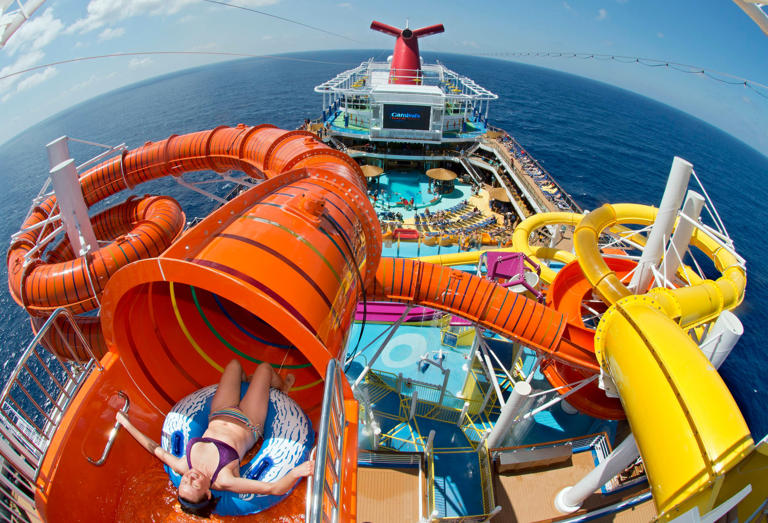

IMAGES
VIDEO
COMMENTS
Put another way, on just one gallon of fuel the ship travels 0.0096 miles. That comes out to about 51 feet on a single gallon. That's about halfway between first and second base on a baseball field. Now before you get too worried about the poor fuel mileage, keep in mind that more than 5,000 people are moving that distance between passengers ...
Cruise ships hold various amounts of fuel, depending on their size. A large cruise ship can be up to 1,100 feet long and carry as much as two million gallons of fuel, while a smaller cruise ship ...
For a large, modern cruise ship, the fuel efficiency might be around 0.002 miles per gallon (mpg) or even less. This means that the ship travels approximately 0.002 miles for every gallon of fuel it consumes. ... So, to wrap things up, really big cruise ships can hold a lot of fuel - about 1.33 million gallons, or similar to 5 million big ...
On average, a mid-sized cruise ship can consume anywhere from 100 to 300 metric tons of fuel per day. Larger cruise ships, such as the Oasis-class vessels, can consume up to 250 metric tons of fuel per day or even more.
Cruise ship fuel consumption depends on the ship's size. For most vessels, the average consumption is 30-50 miles on a fuel gallon. This will be also determined by other factors using fuel. Ships' gas mileage varies depending on the type and size of ship, the number of passengers on board, and other factors.
A cruise ship that holds about 1,000 passengers can spend over $15,000 a day on fuel, depending on fuel prices. A typical seven-day cruise can cost over $100,000 in fuel alone . For reference ...
Split between four or five engines, each need between 15,000 and 19,000 gallons of fuel per day (about 750 gallons of fuel per hour). However, this amount varies based on the vessel's speed. Depending on the type of gas, location, and service costs, a standard refueling for a cruise ship can cost over $6,000.
A large cruise ship ranging in length from 900 to 1,100 feet might hold 1 to 2 million gallons of fuel. Smaller vessels, like a 440-foot-long ferry, might carry around 130,000 gallons of fuel, while a gigantic ship measuring over 1,300 feet in length can tote over 4 million gallons.
Both size and the average speed a cruise ship travels impact how much fuel it uses. On average, a large cruise ship can use up to 250 tons of fuel per day, which is around 80,000 gallons. Cruise1st.co.uk claims a normal cruise ship can use around 140 to 150 tons of fuel each day, consuming 30 to 50 gallons per mile travelled.
Large Size Cruise Vessels. With all the above considerations, cruise ships over 300 meters in size consume 200+ MT of fuel. The figures at 85% and above load go as high as 235 to 250 MT of fuel per day. It includes the power generation system for the generators available onboard.
Fuel Consumption. When it comes to fuel consumption, cruise ships have a much higher rate than cars. A typical car can travel up to 25 miles per gallon (MPG), while a large cruise ship will only get about 2 MPG. To put this in perspective, a car traveling 100 miles would consume 4 gallons of gasoline while a large cruise ship would consume 50 ...
Conclusion. In conclusion, the fuel consumption of cruise ships is a pressing environmental concern that requires immediate attention. As I delved into the topic, I was astonished to discover that a single cruise ship can consume up to 150 tons of fuel per day, equivalent to the weight of 30 elephants!
Since the ship's cruising speed is 23.7 knots, or 27.3 mph, the cruise ship's fuel efficiency is roughly 0.004 mpg. Since the ship carries 3114 passengers, its gas mileage is 12.79 mpg/passenger, or 17.65 mpg/person including crew. This isn't too different from the much larger Oasis of the Seas, surprisingly enough.
The answer depends on several factors, including the size of the ship, the type of engine used, and other operational factors. Generally speaking, cruise ships can get between 0.25 and 0.5 MPG (miles per gallon), though some newer vessels may get up to 1 MPG. This may seem very low compared to standard cars and trucks, but it's important to ...
A large cruise ship, over 300 meters in size, might consume up to 250 tons of fuel daily, equivalent to over 80,000 gallons of fuel. That means the cruise ship is spending approximately - 130,000 US $/ day on low-grade fuel, and if it uses Marine Gas oil, which is a cleaner fuel, it will cost a ship whopping ~US $ 300,000/ day. ...
Heavy Fuel Oil (HFO) Traditional cruise ships rely heavily on heavy fuel oil, also known as bunker fuel. This oil is thick, black, and has a tar-like consistency. The low cost of heavy fuel oil ...
The short answer is none - - a gallon of fuel will not move a modern cruise ship a mile. To illustrate, Celebrity Eclipse gets 56 feet to the gallon. Holland America's Zuiderdam gets .0129 miles per gallon or, looked at a bit differently, .34 tons of fuel per mile traveled. At first glance, this may not seem like very good mileage.
On a daily basis, the average cruise ship uses around 140-150 tonnes of fuel, or 30 to 50 gallons per mile.That is way above the lifetime consumption of an a...
Cruise Ship MPG: The Basics. As mentioned earlier, the average MPG of a cruise ship ranges from 25 to 40 gallons of fuel per mile. ... For example, Royal Caribbean recycles aluminum cans, plastic bottles, cardboard, paper products, and glass on their ships. Water conservation is also a big issue for cruise ships. Installing low-flow showerheads ...
0.00947 MPG (105.6 Gallons per Mile) That's 18 MPG for each of her 1900 Passengers or 27.6 MPG if you include the 1015 crew. In US Terms: 15 or 23 MPG. In Metric Terms: 13.07 l/100km or 8.55 l/100km. At a cruising speed of 20 Knots (This is more like the speed a normal cruise ship travels) QE2 was 2.5 times more fuel-efficient so...
Utopia of the Seas Beam (Maximum): 211 feet. Utopia of the Seas Passenger Capacity (Double/Max): 5,668/6,509. 3. Royal Caribbean Wonder of the Seas. Wonder of the Seas. Royal Caribbean's Wonder of ...
Sun Princess measures 177,882 gross tons, which is about 22% bigger than the biggest ship in the Royal Class (the 145,000-ton Discovery Princess). Royal Class ships range in size from 142,229 to 145,000 gross tons. Note that gross tons is a size measurement referring to interior space, not weight.
This is the biggest cruise ship ever built, and I have been tasked with witnessing its inaugural voyage. ... Brit-filled Alicante nightclub circa 1996 and proves a big favorite with groups of ...
In general, the cost to fuel a cruise ship ranges from $80,000 a day to $200,000 a day. To illustrate, here are some estimates of how much it costs to fuel some of the most popular cruise ships ...
One of the US's busiest cruise ports can't keep up with America's love for vacations at sea — but an urgent new terminal will help meet the demand for giant cruise ships. Brittany Chang. May 23 ...
Jun 1, 2024 2:57 PM EDT. Perfect Day at CocoCay, a $250 million reimagining of Royal Caribbean's private island in the Bahamas, set a new standard and left rival cruise lines lacking a similar ...
Carnival Cruise Line makes a bold ruling on cruise ship ducks. The cruise line has taken a stand on the popular, but sometimes controversial practice. Daniel Kline. May 31, 2024 12:11 PM EDT ...
USA TODAY. 0:05. 1:02. MSC Cruises will sail a record seven ships from the U.S. during its winter 2025-2026 season. The vessels will operate from four homeports, including its newest in Galveston ...
Royal Caribbean's Wonder of the Seas, Symphony of the Seas, Harmony of the Seas, Oasis of the Seas, Liberty of the Seas and Voyager of the Seas. The Perfect Storm complex of waterslides is a ...
The cruise line is reportedly in talks with Meyer Turku about new construction projects that could be in excess of 200,000 gross tons. Any new large ships for MSC Cruises would be several years or ...